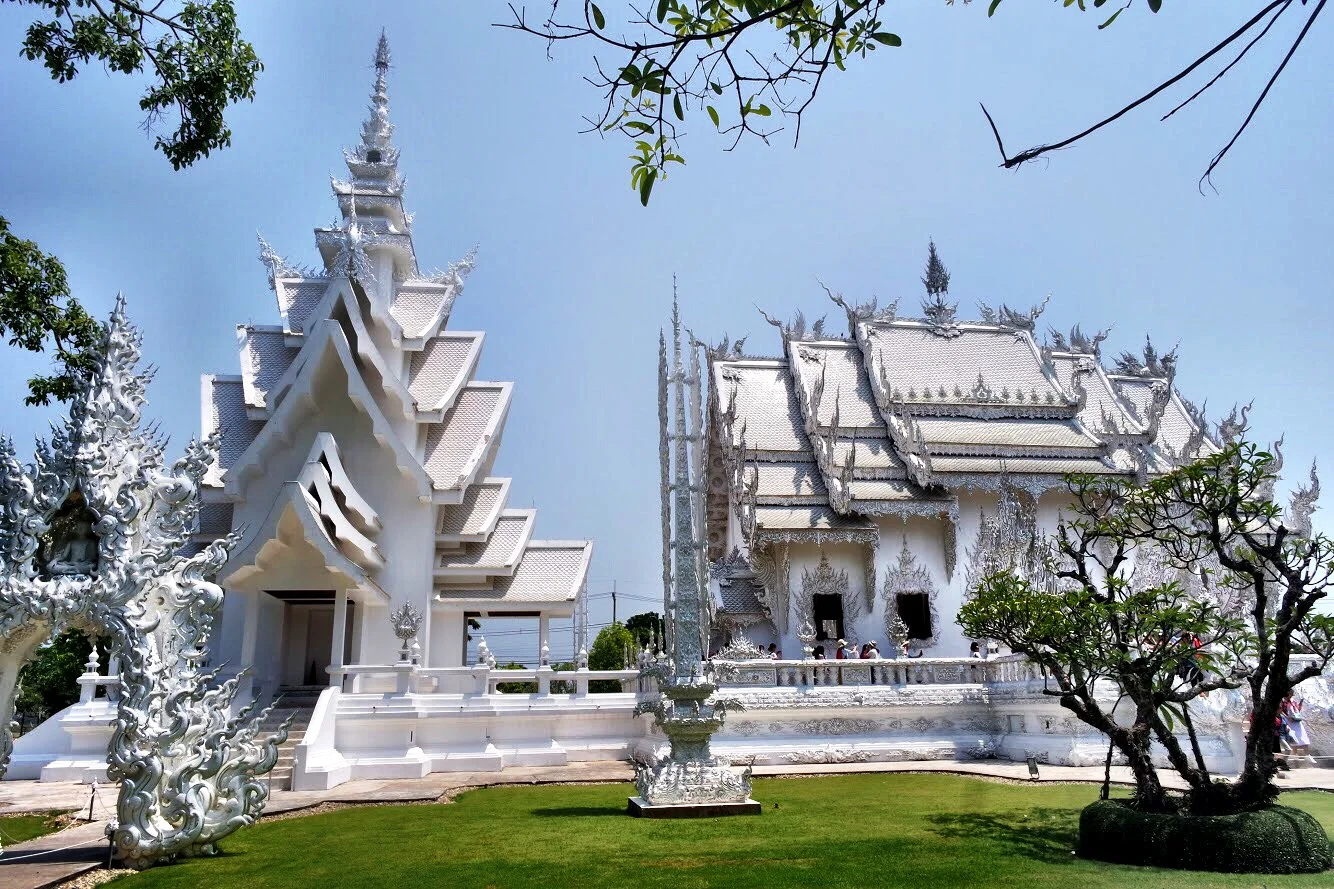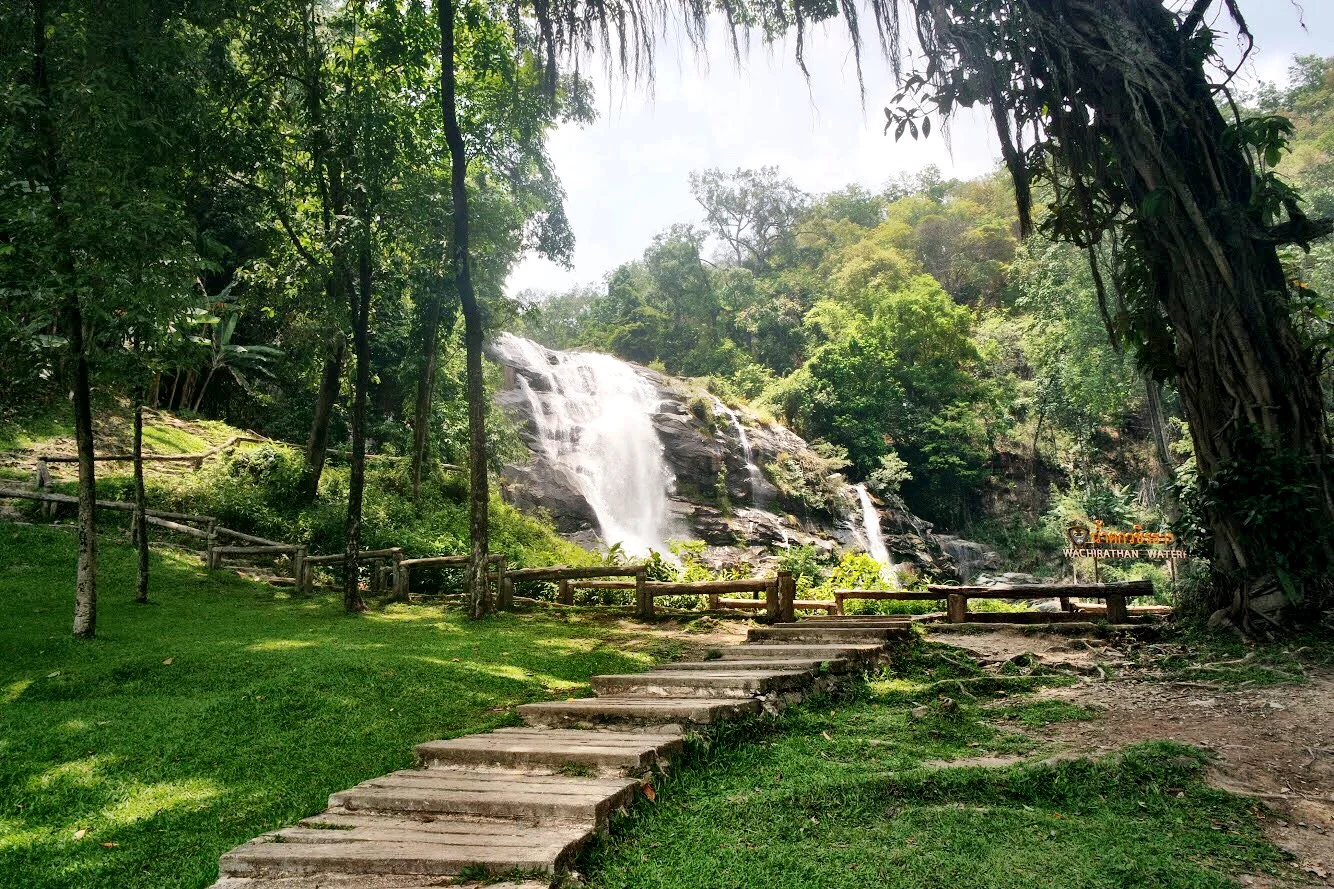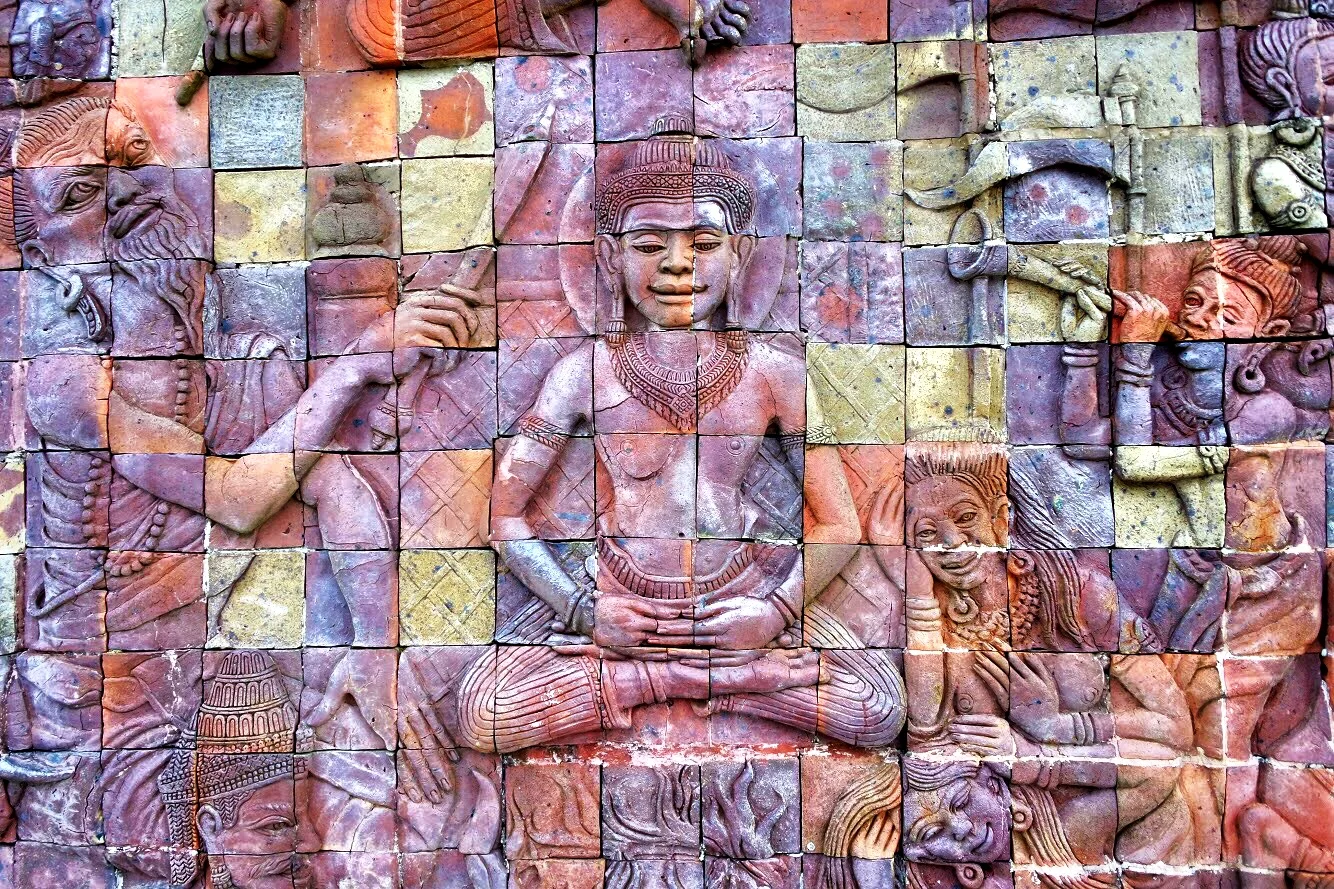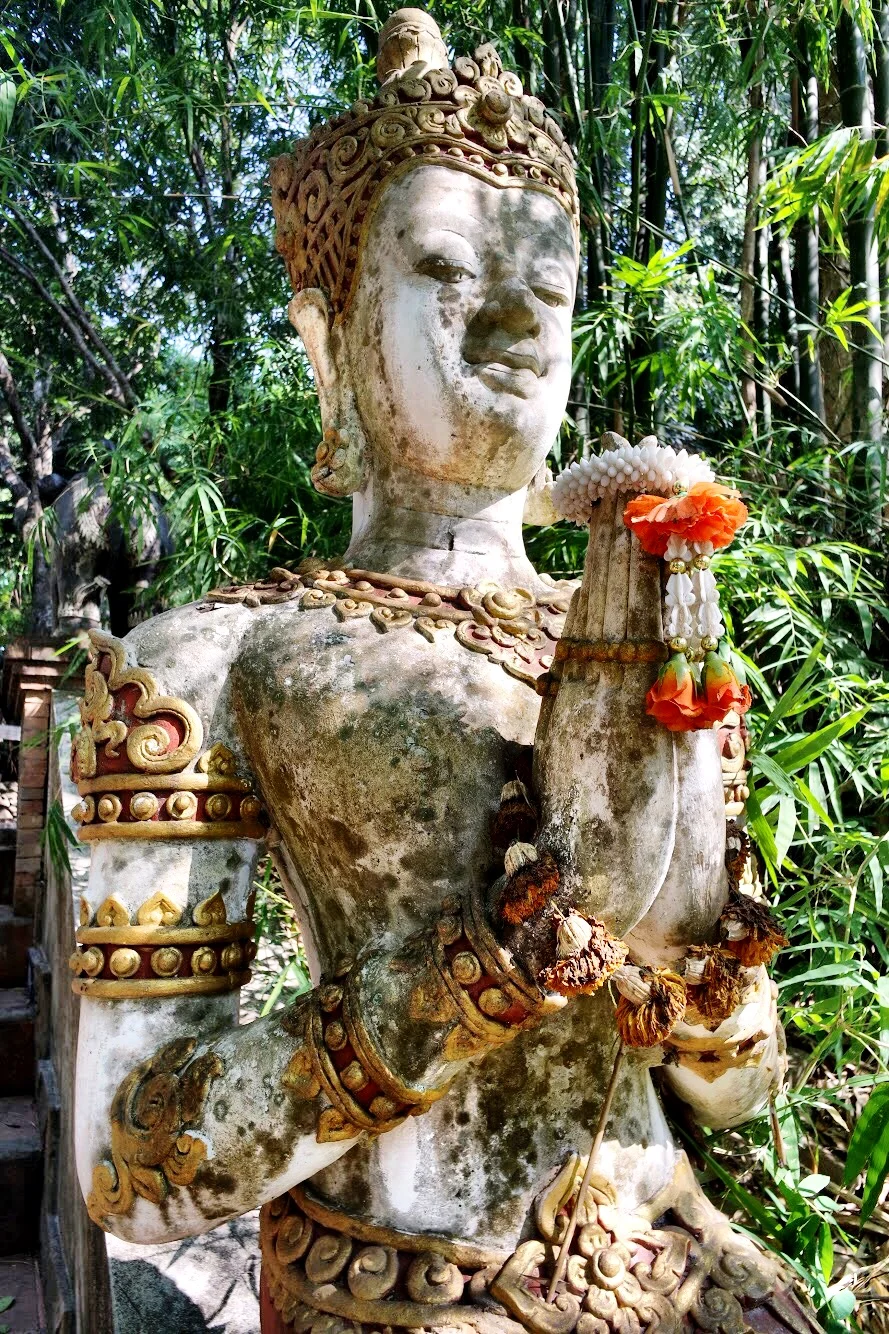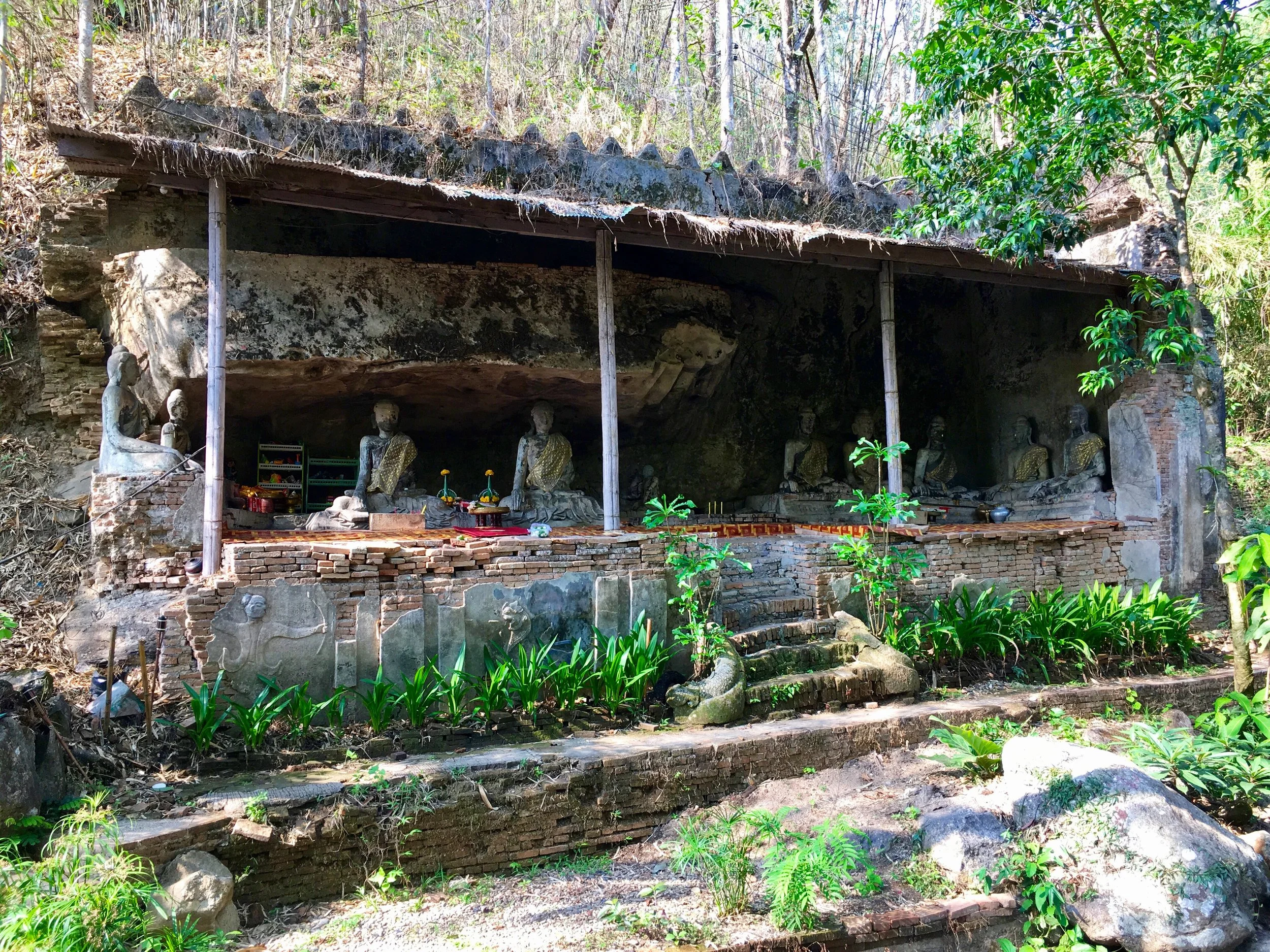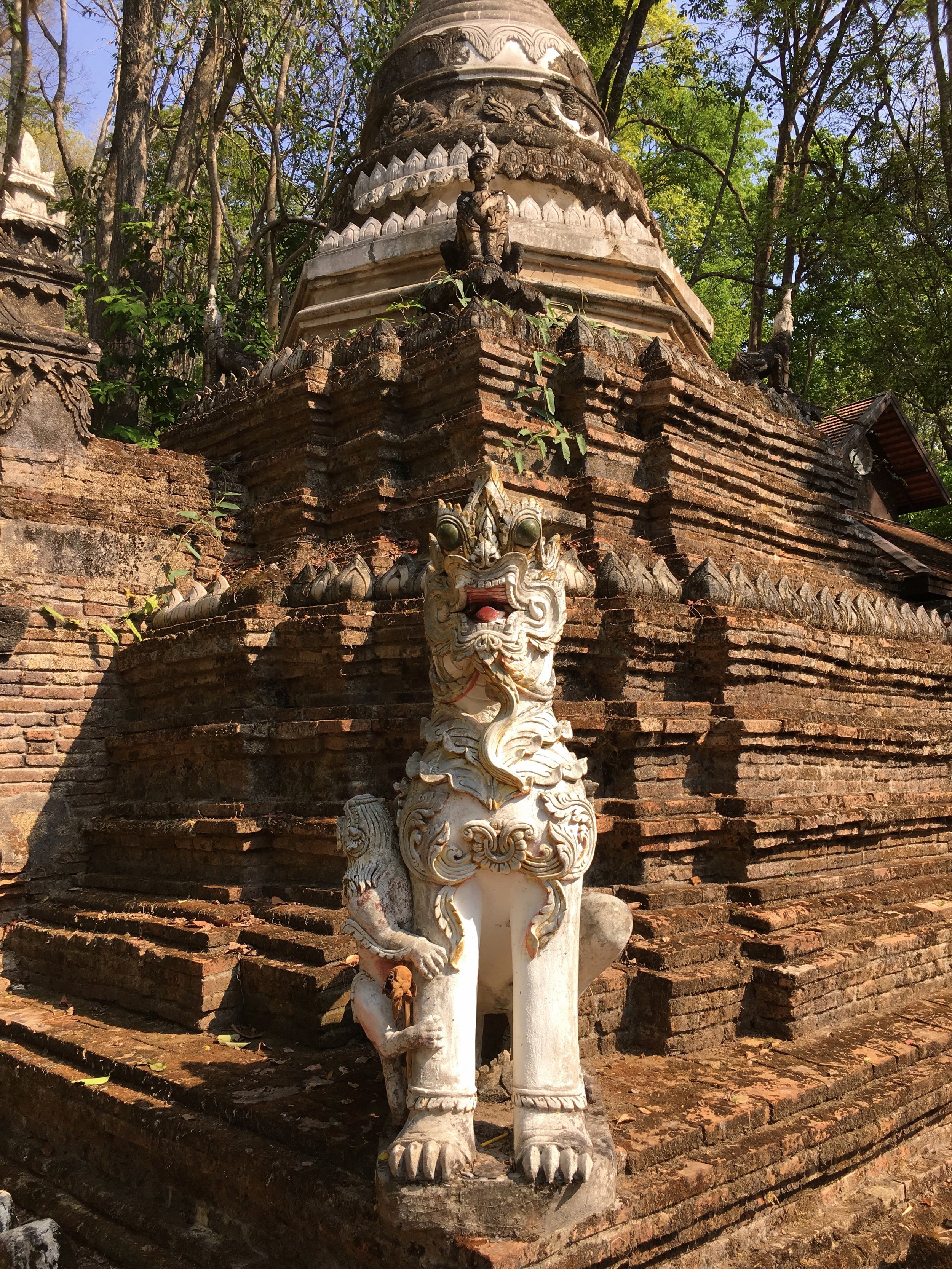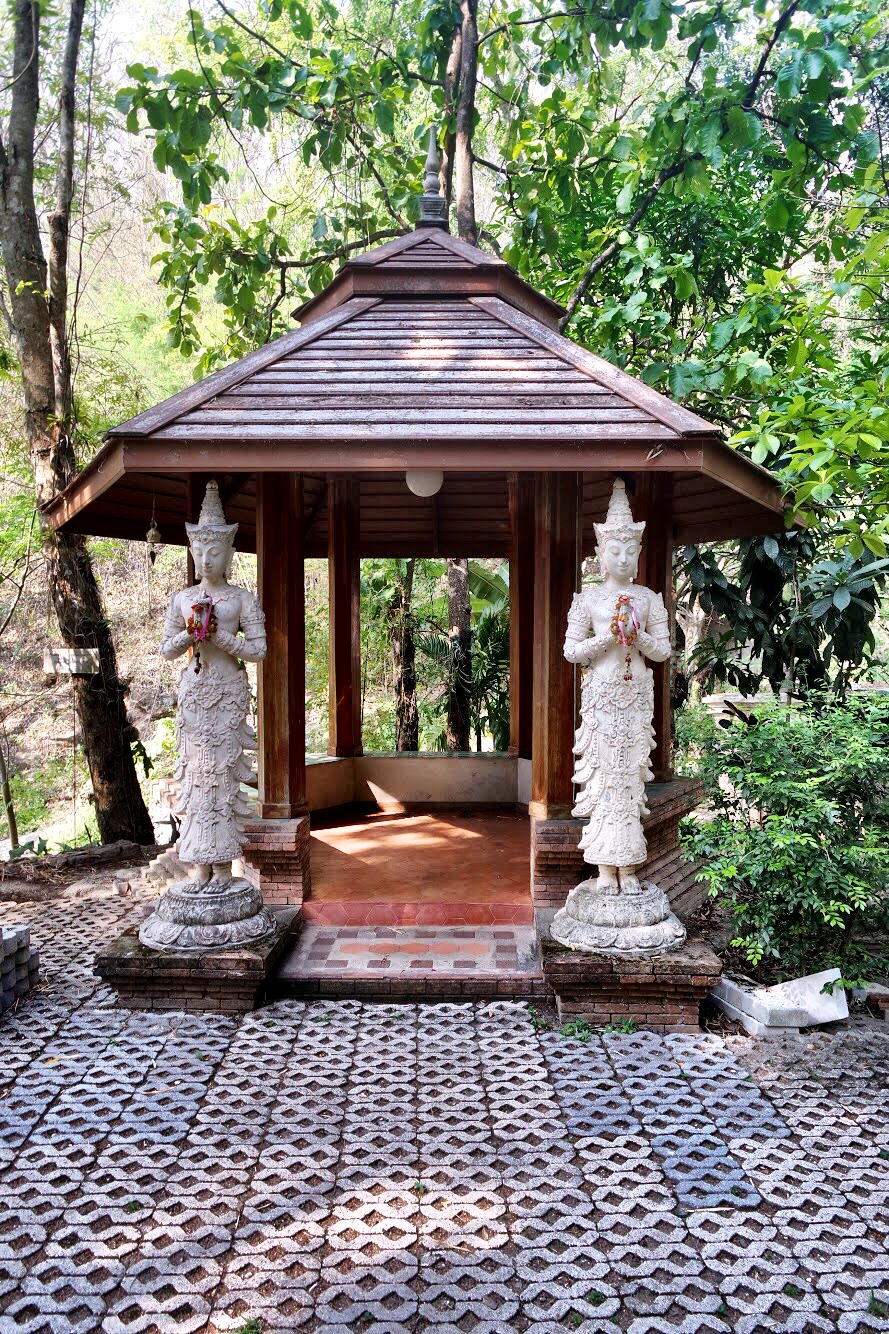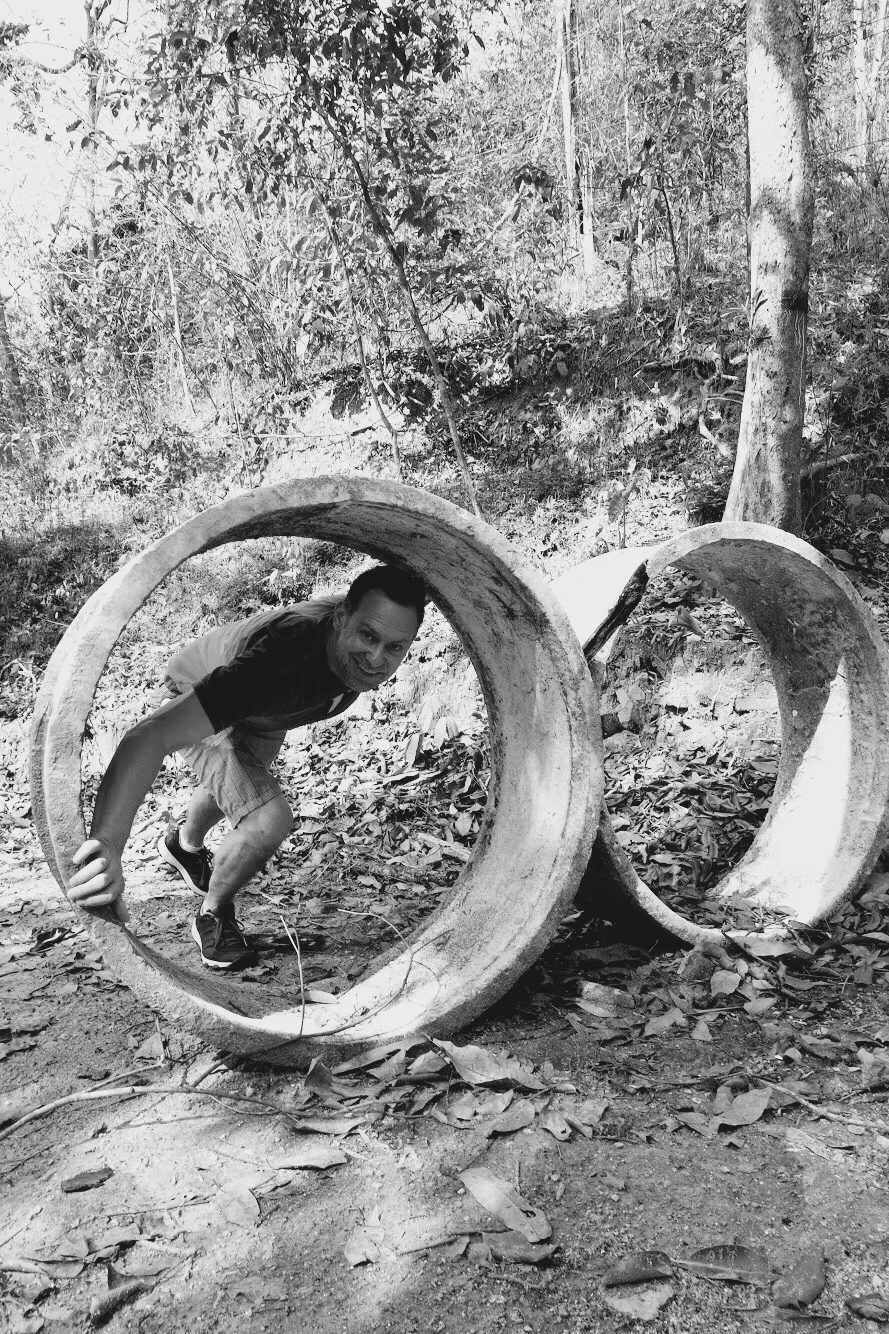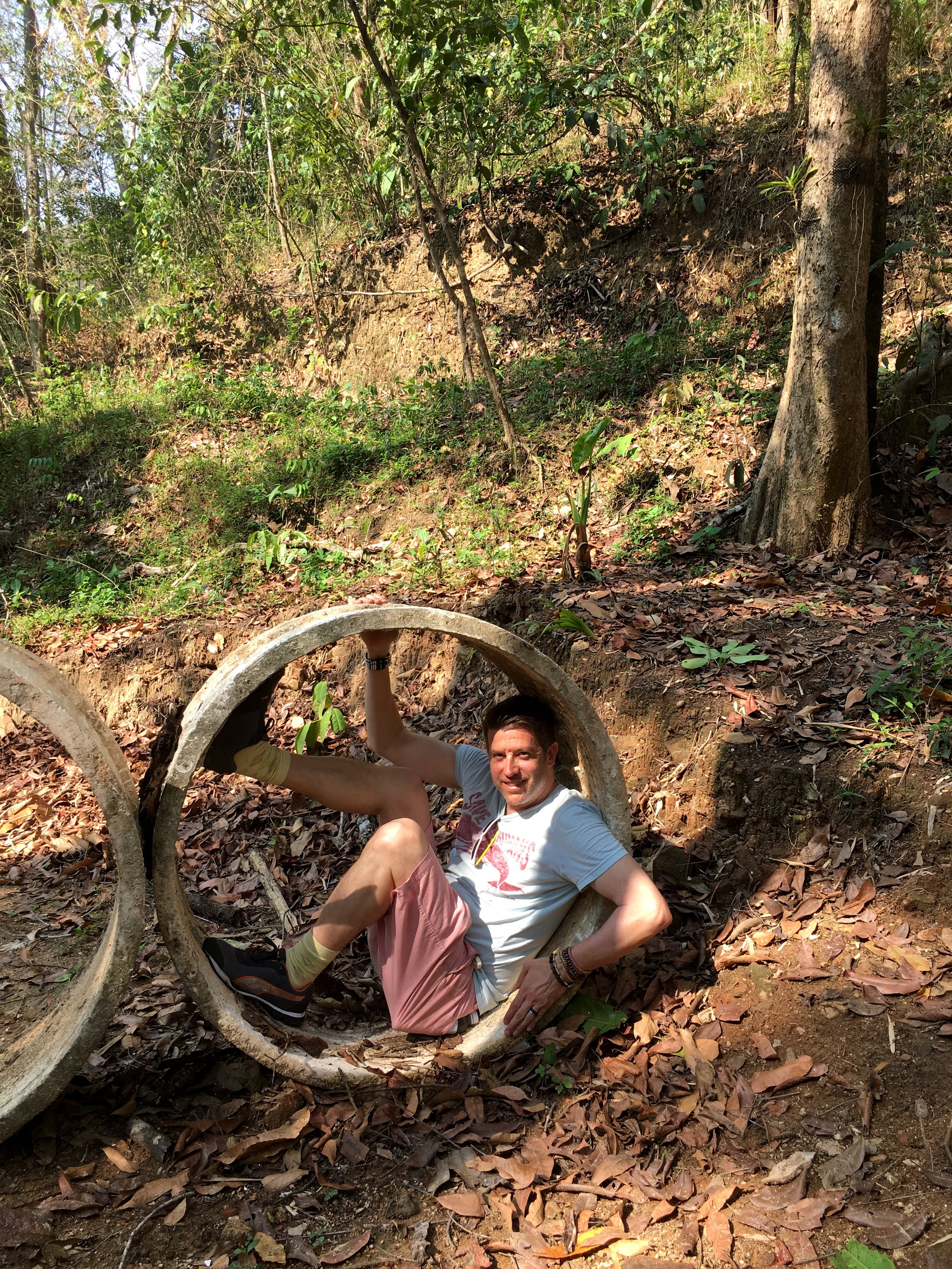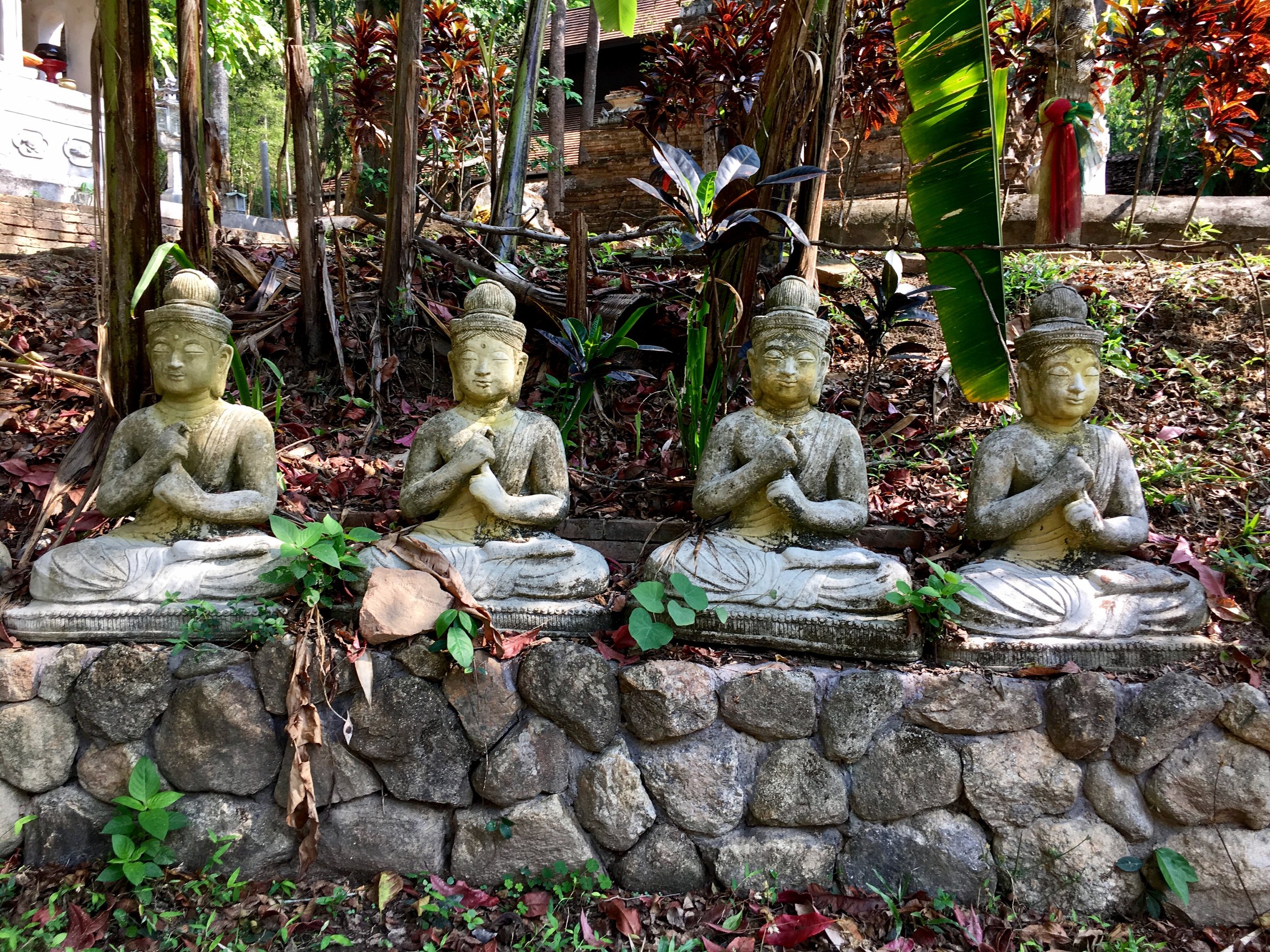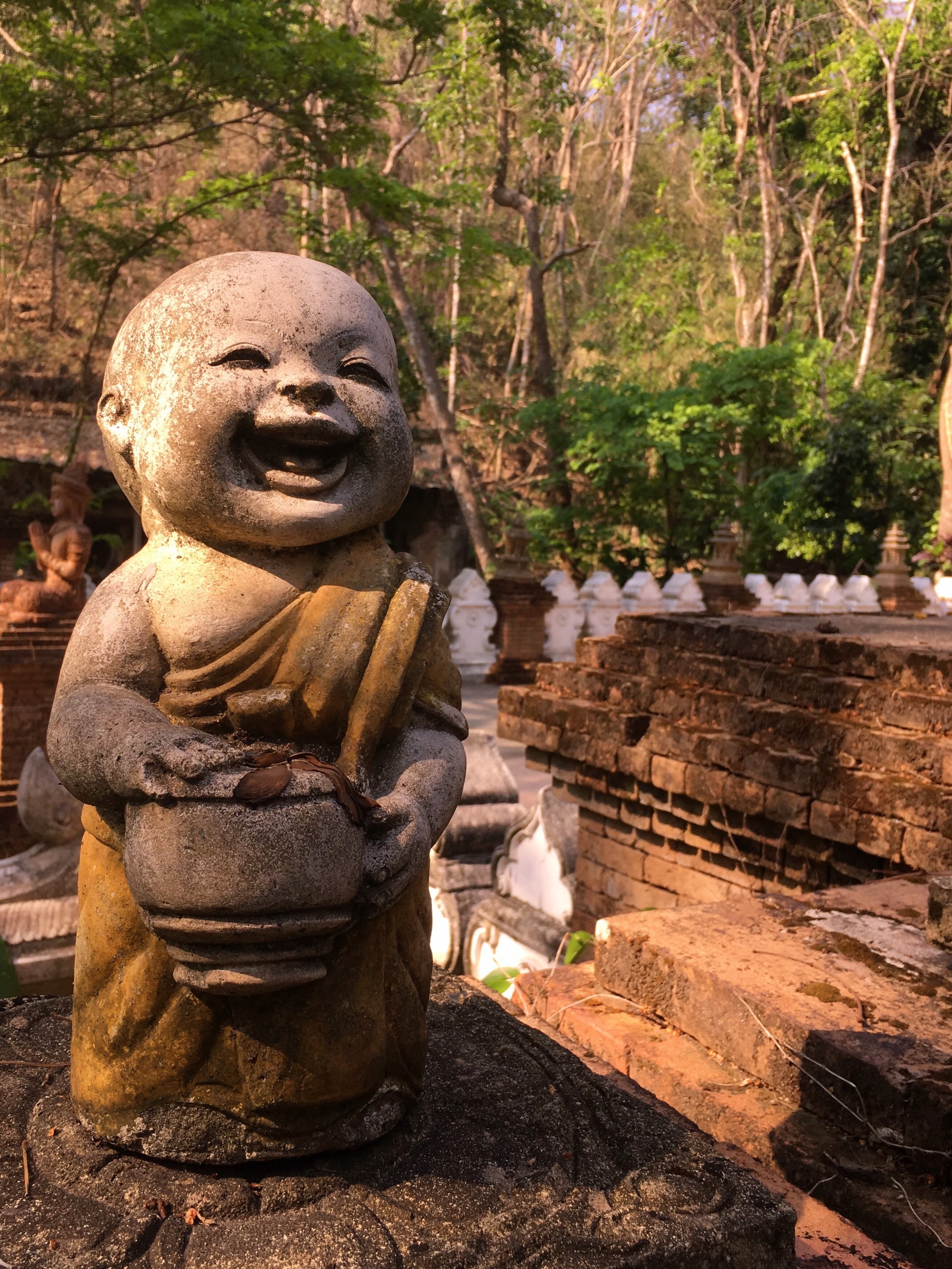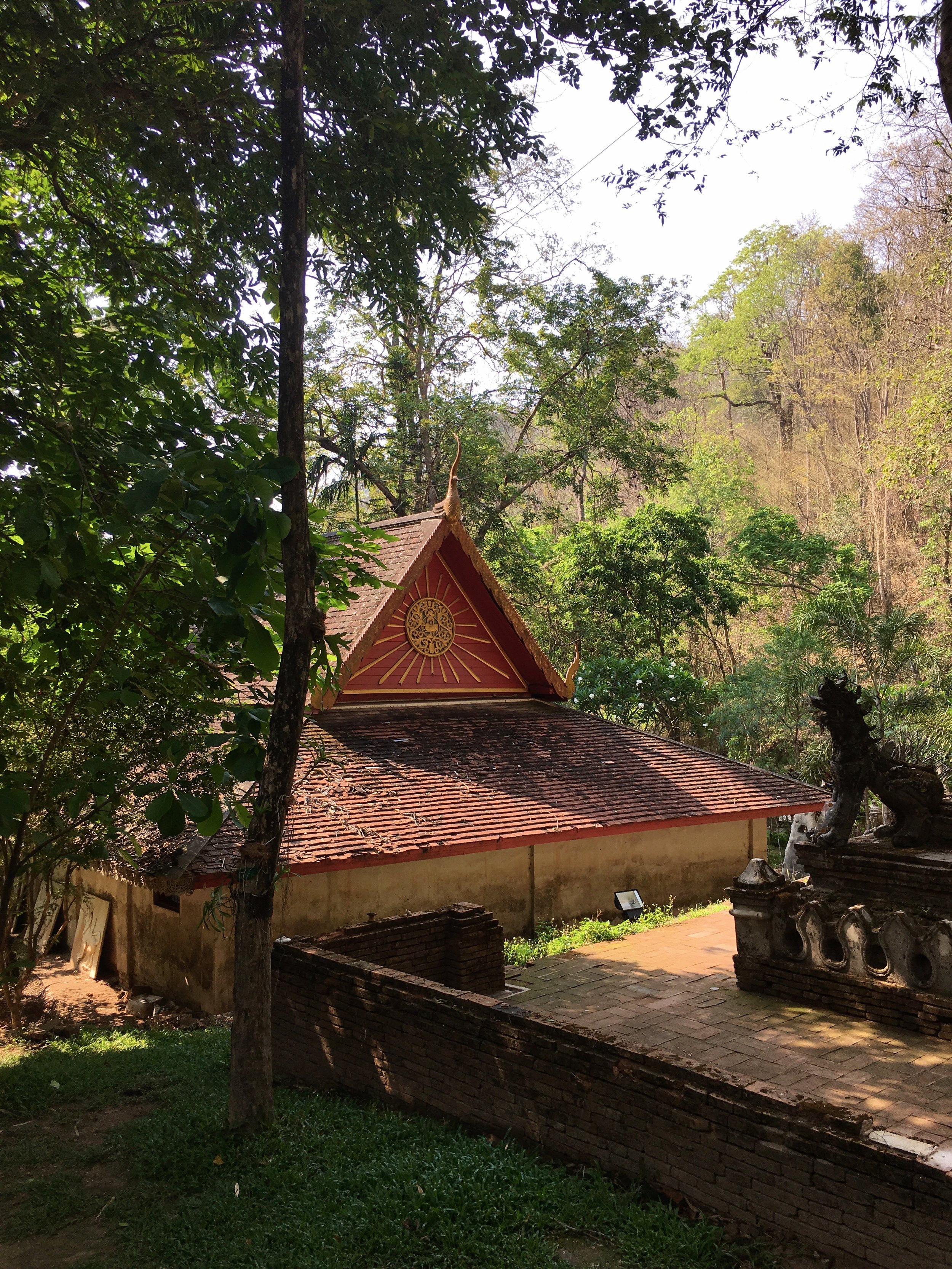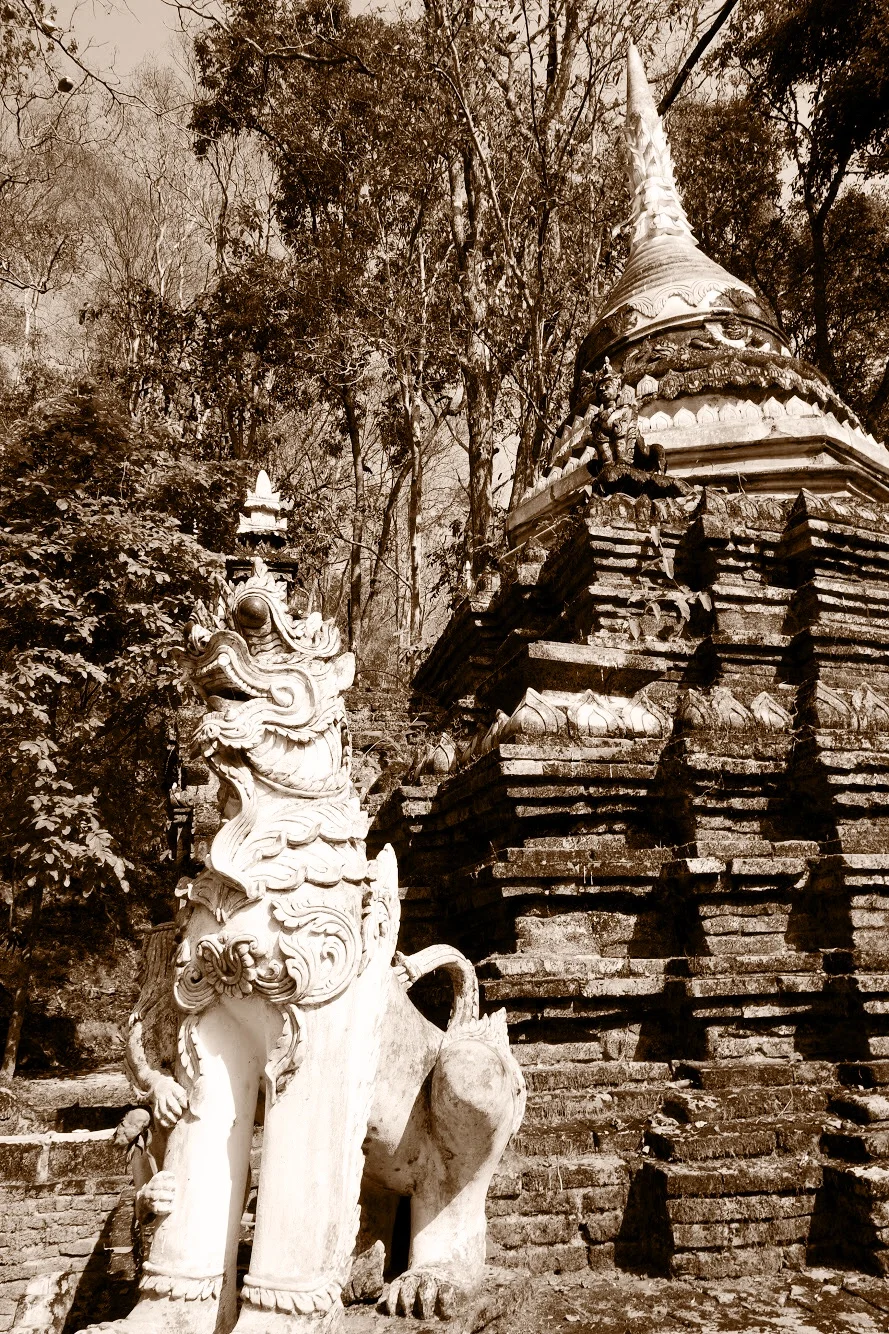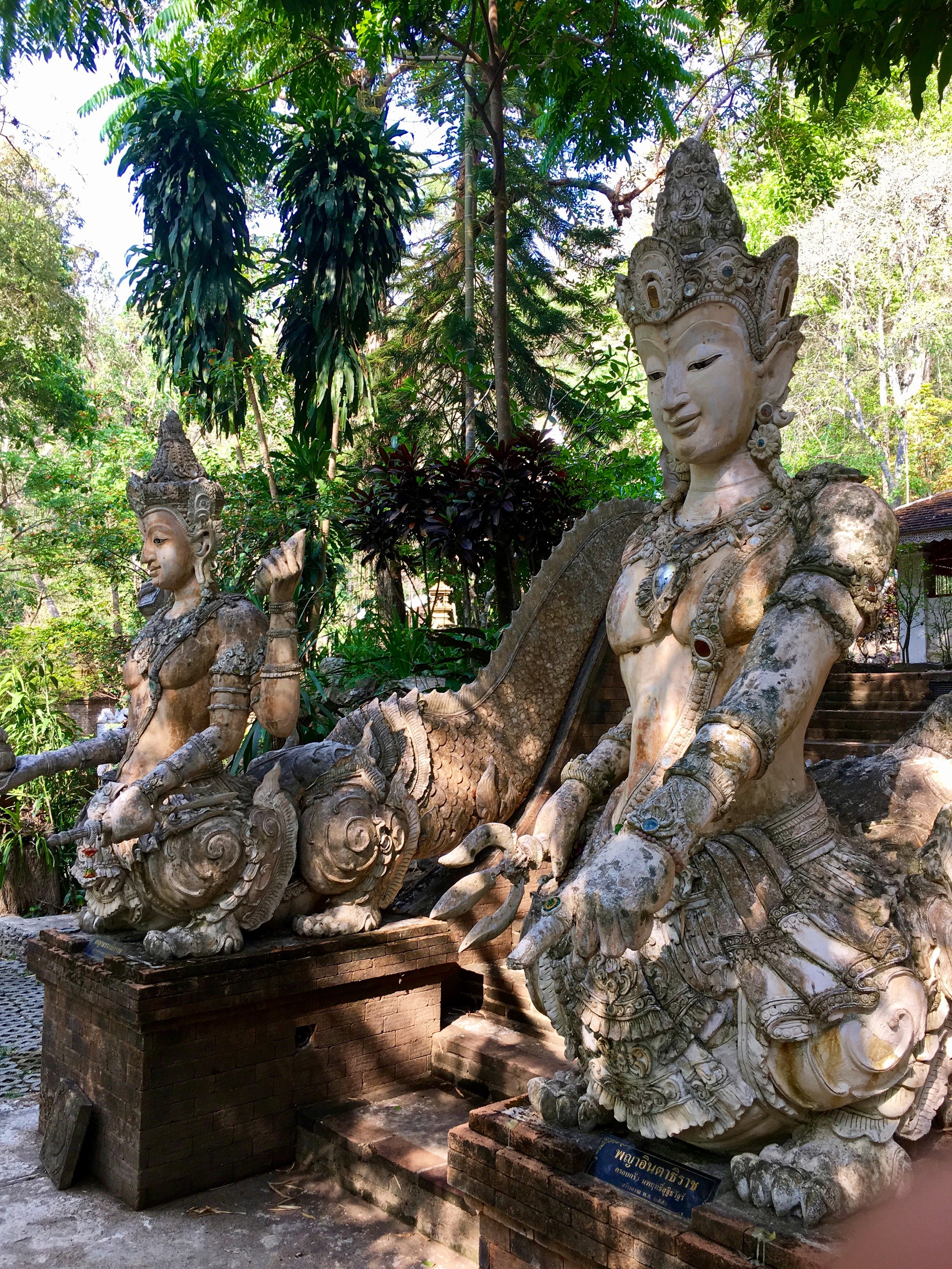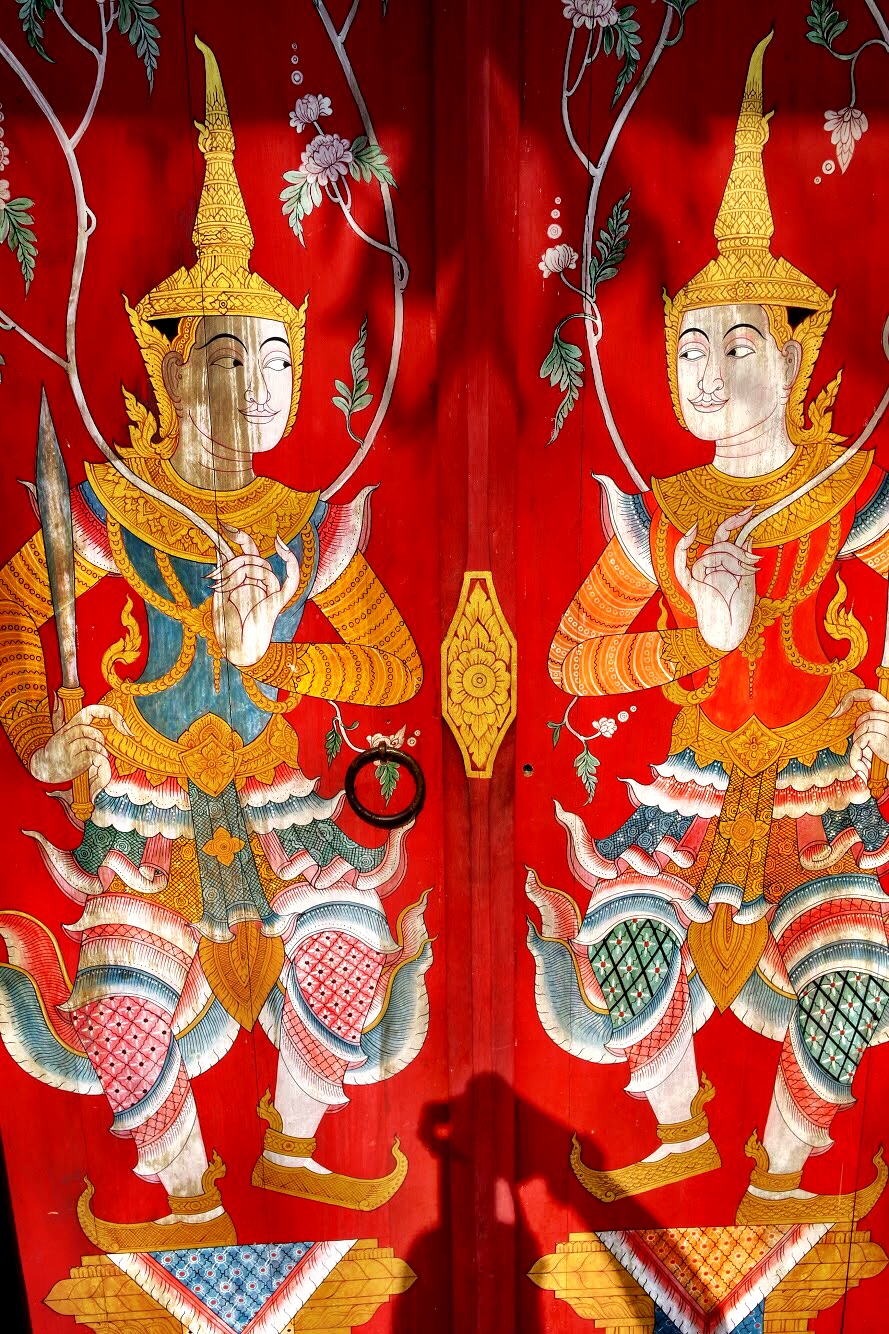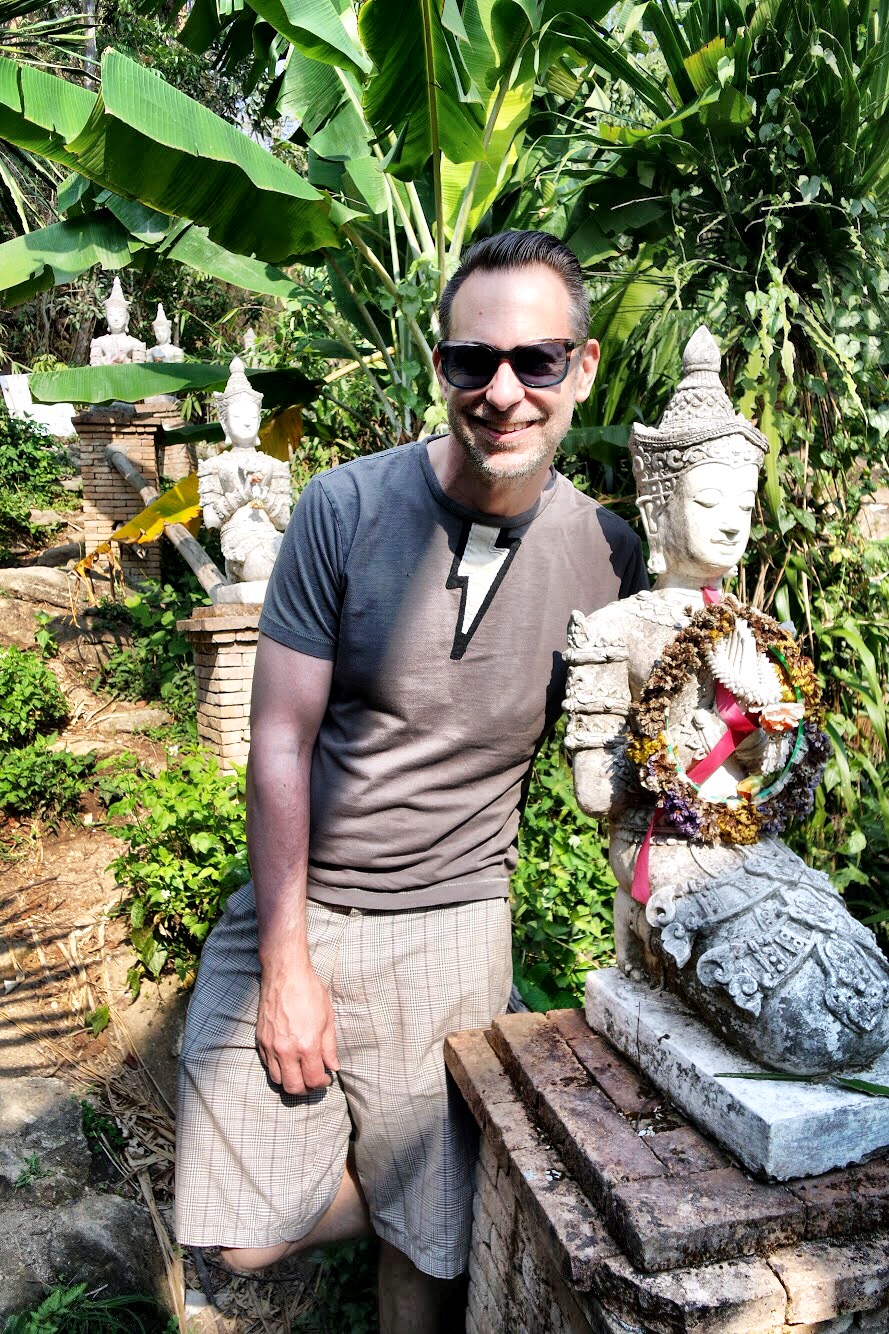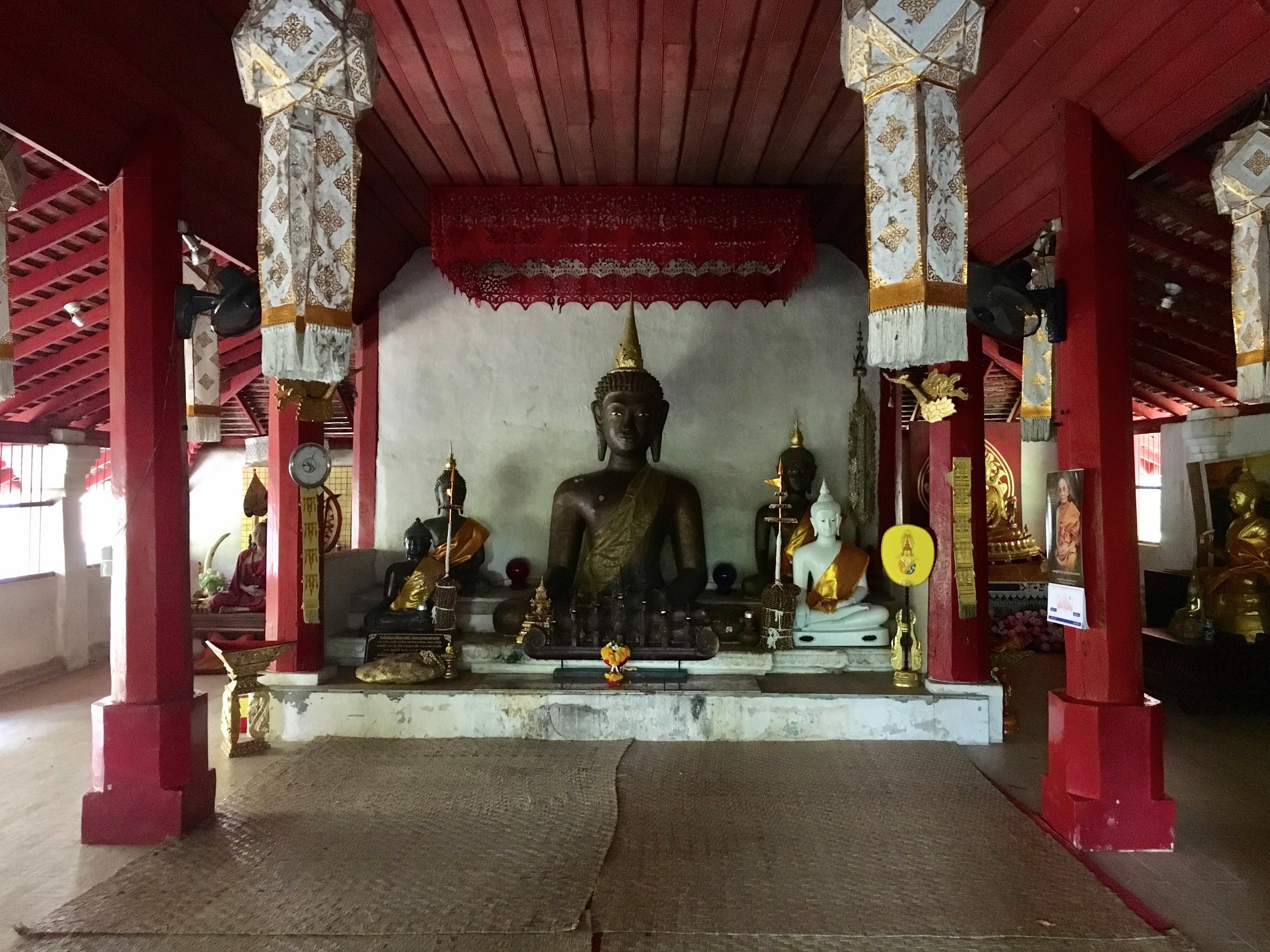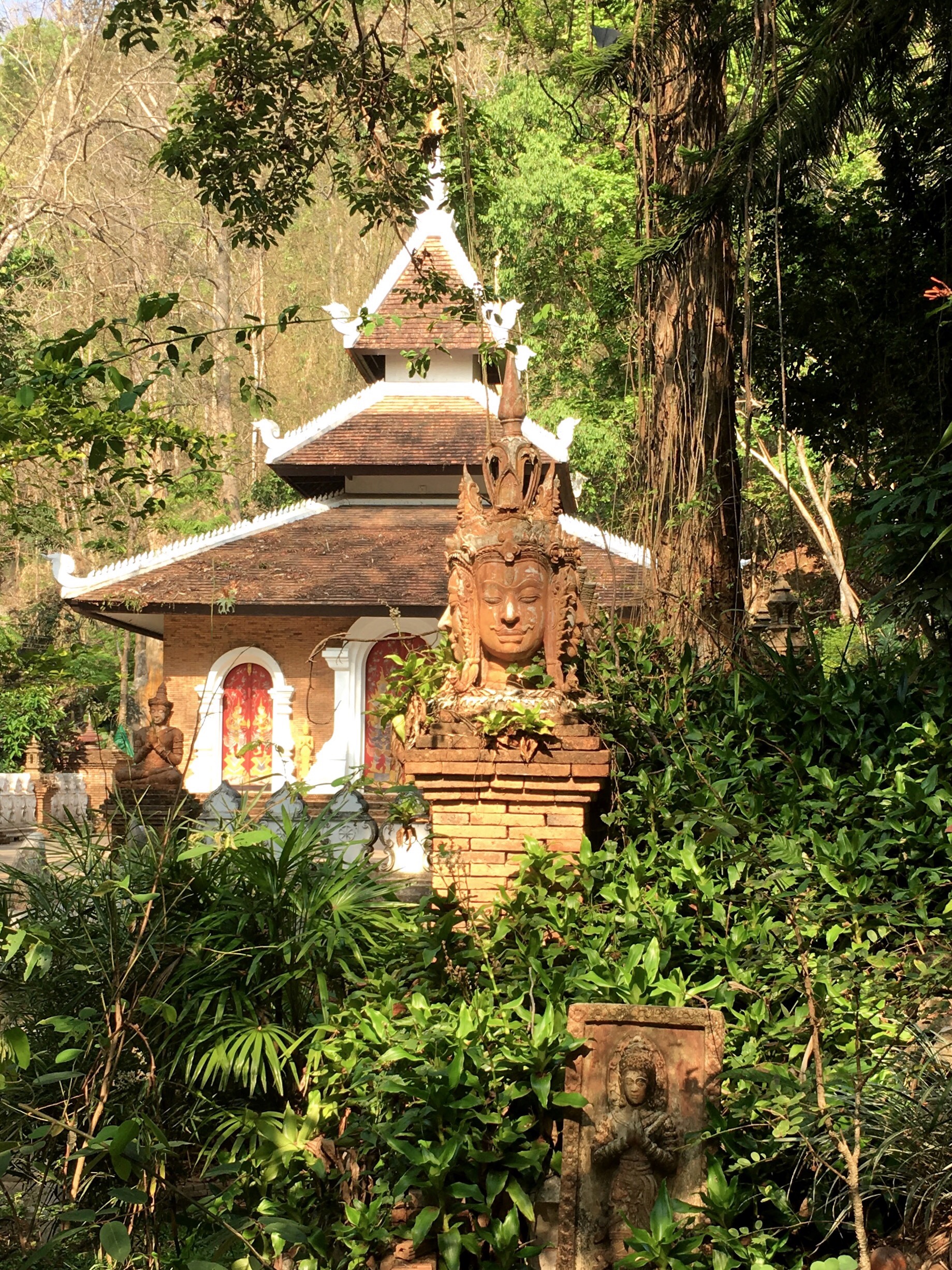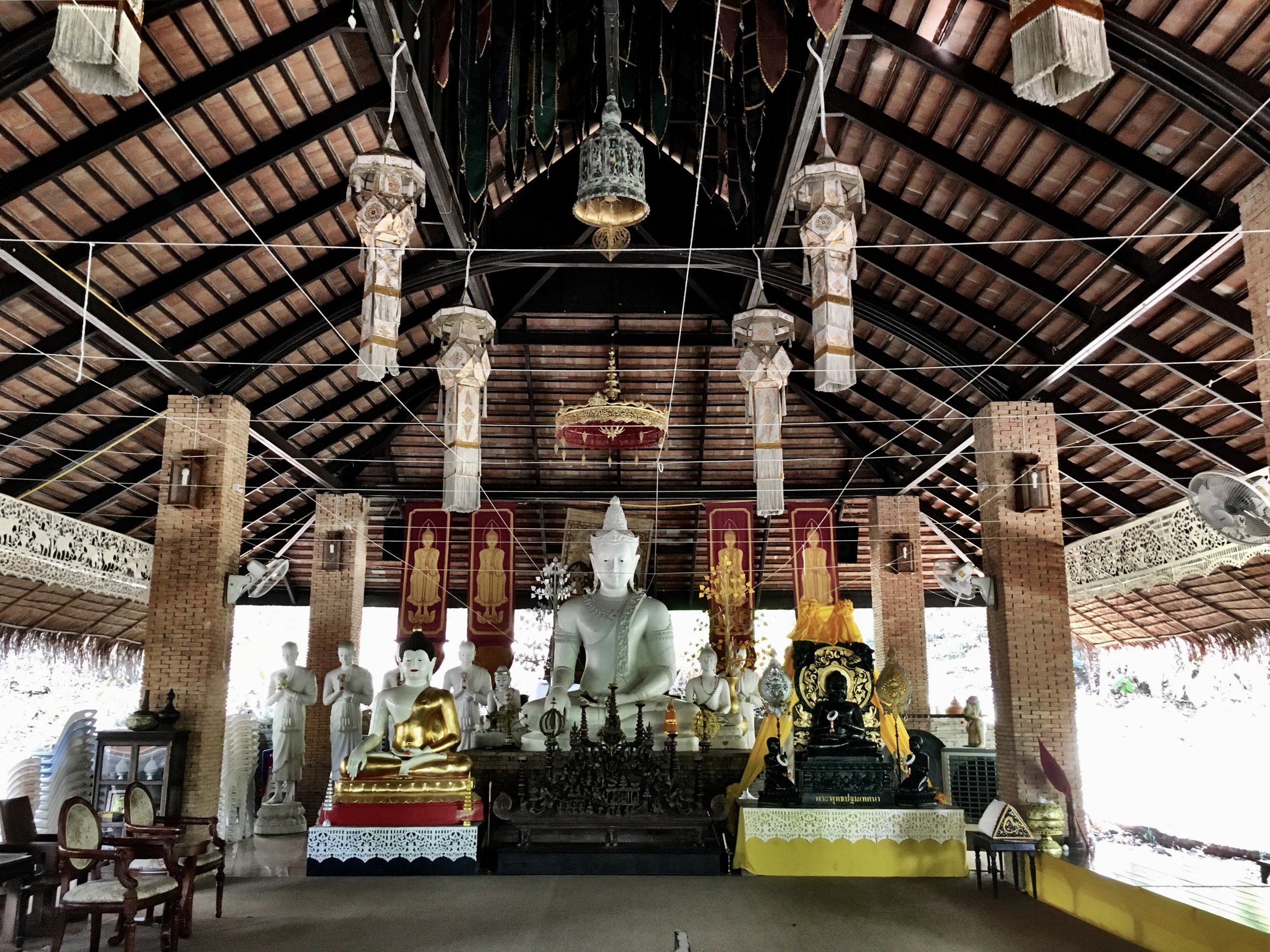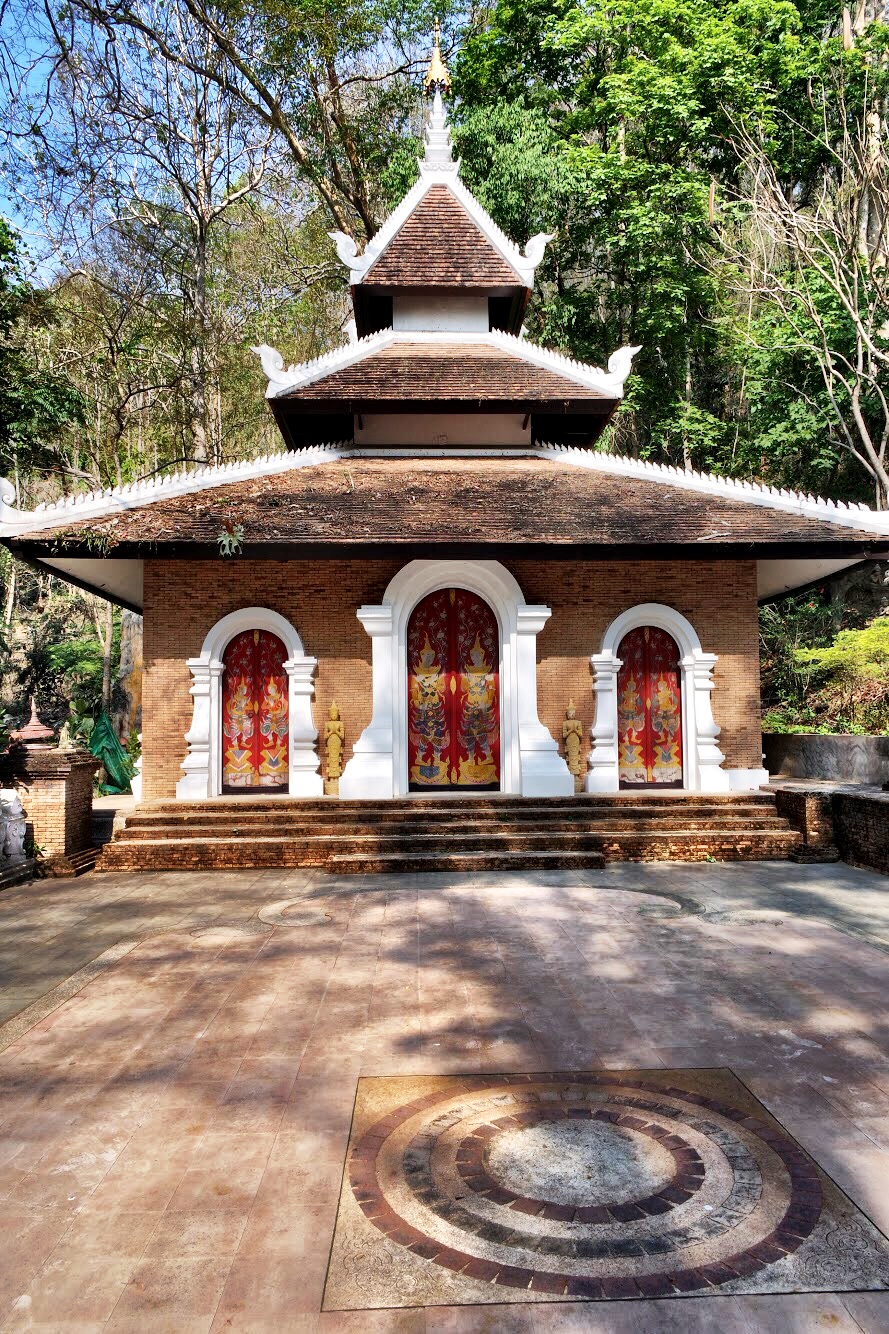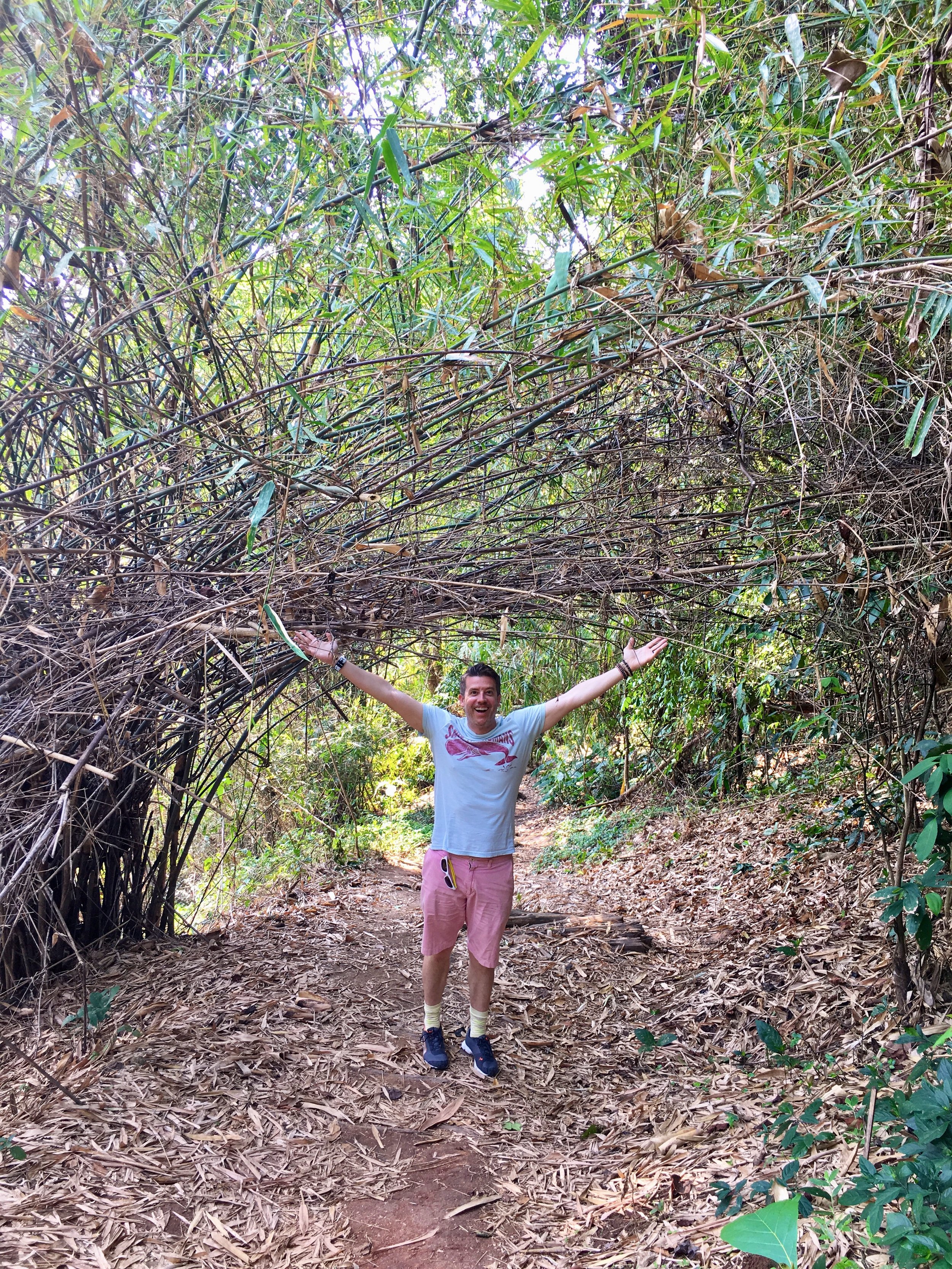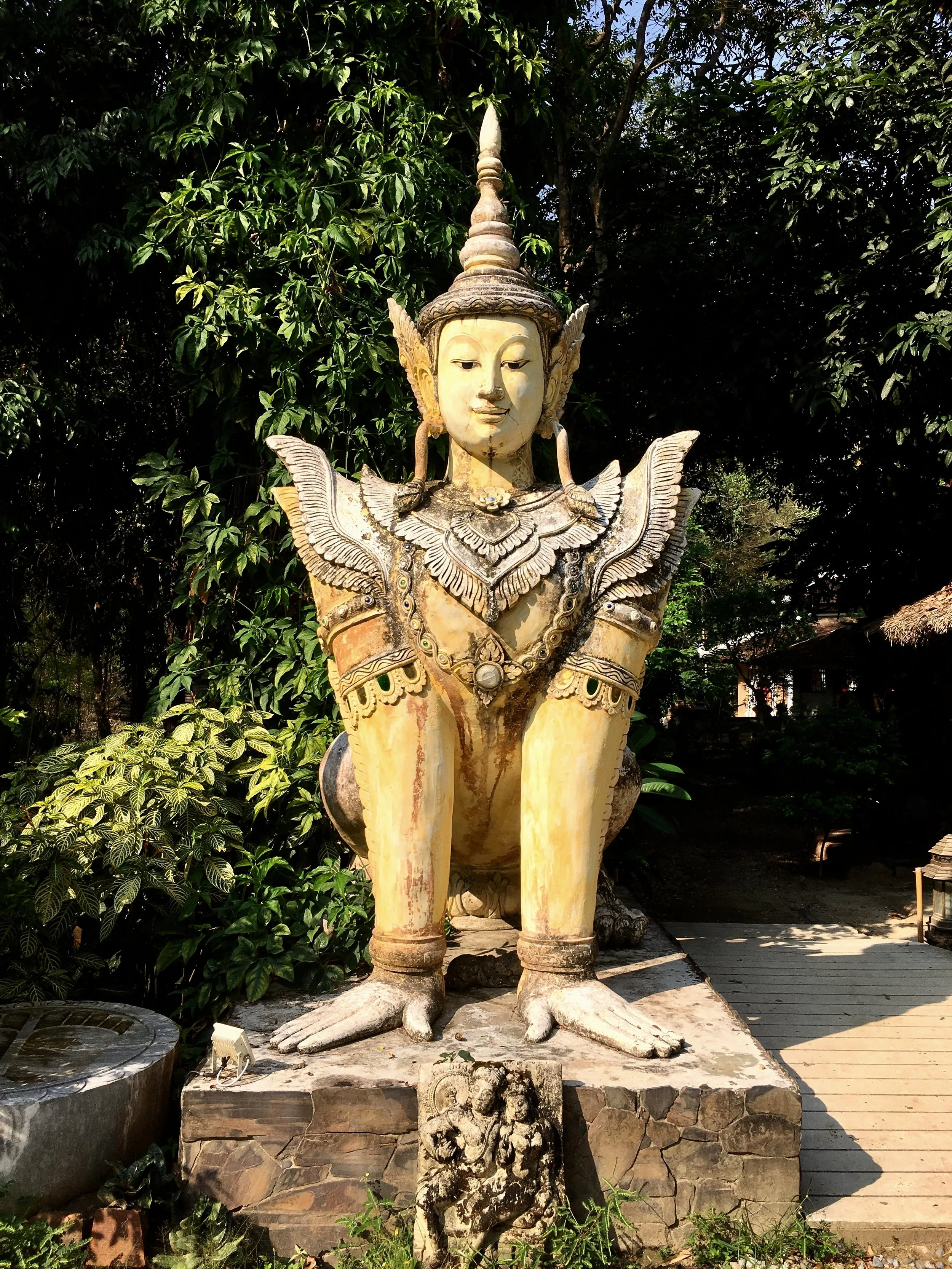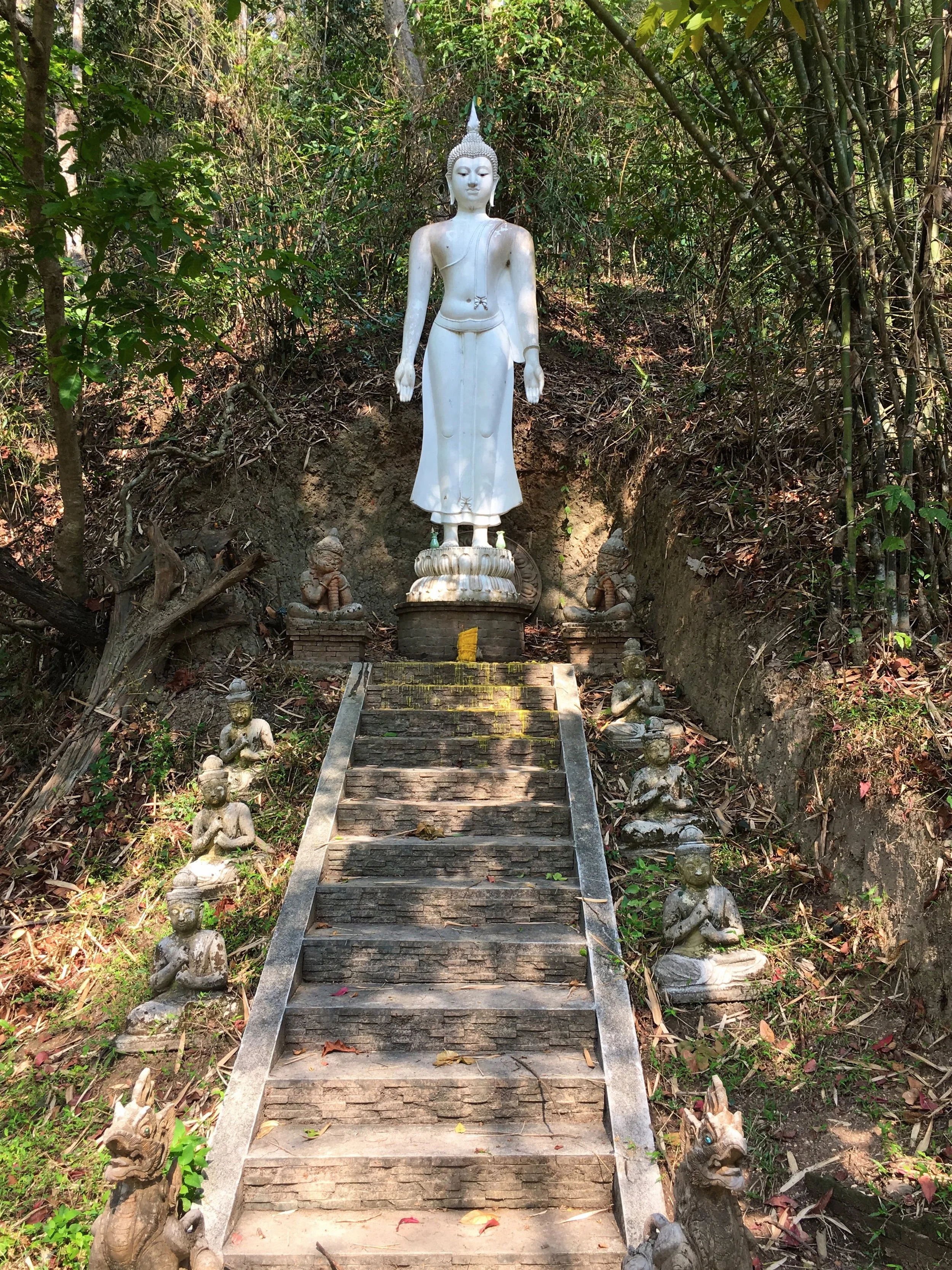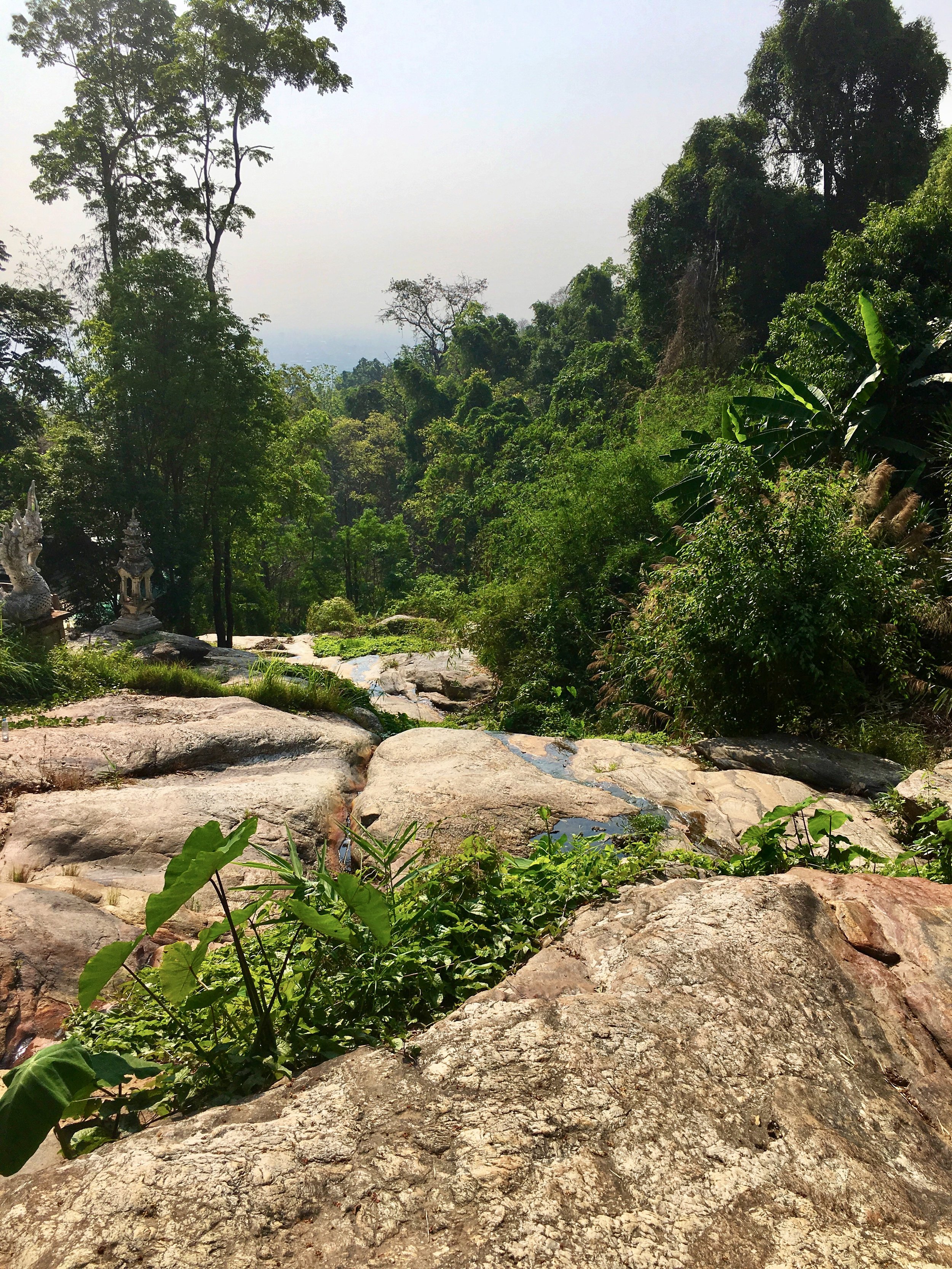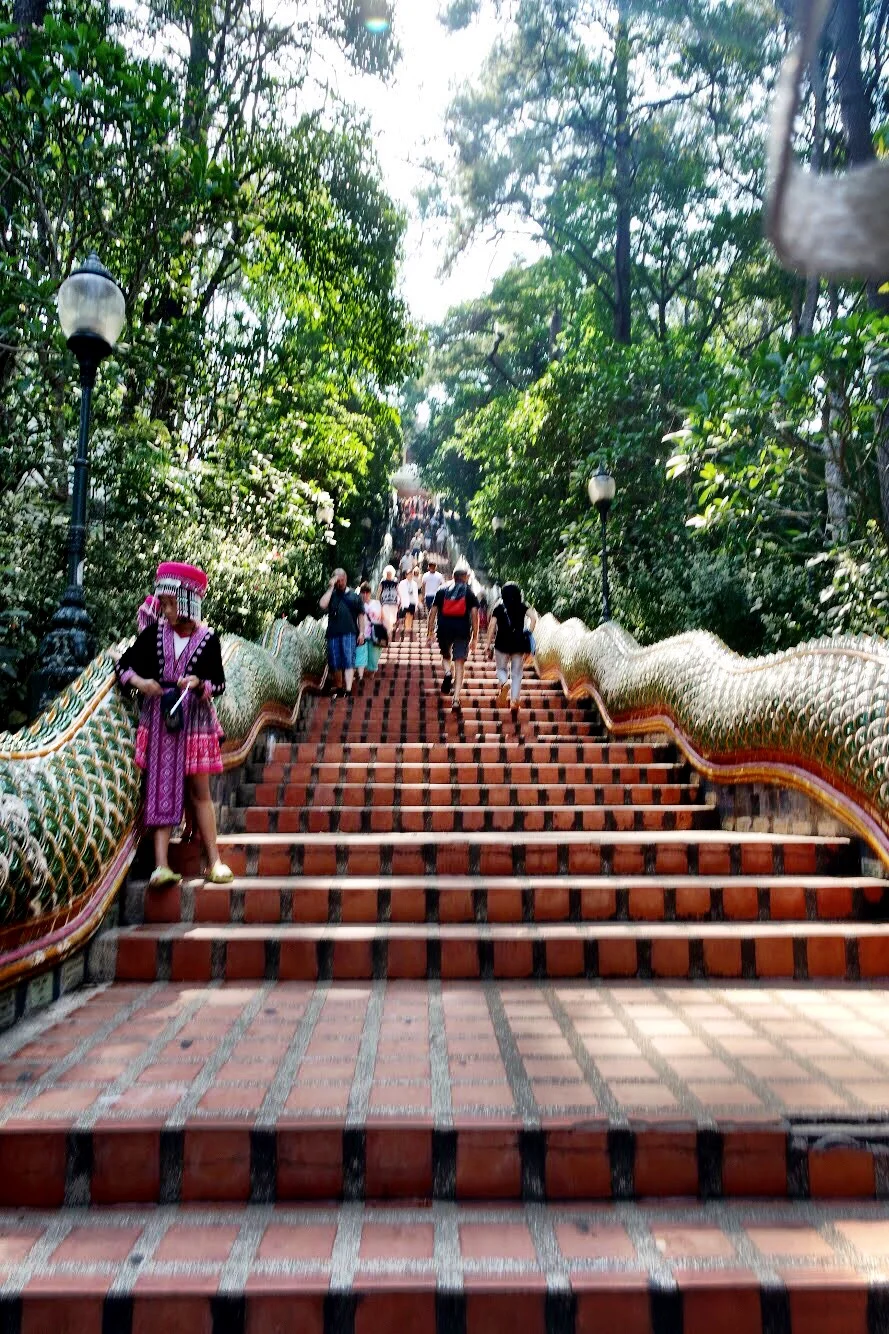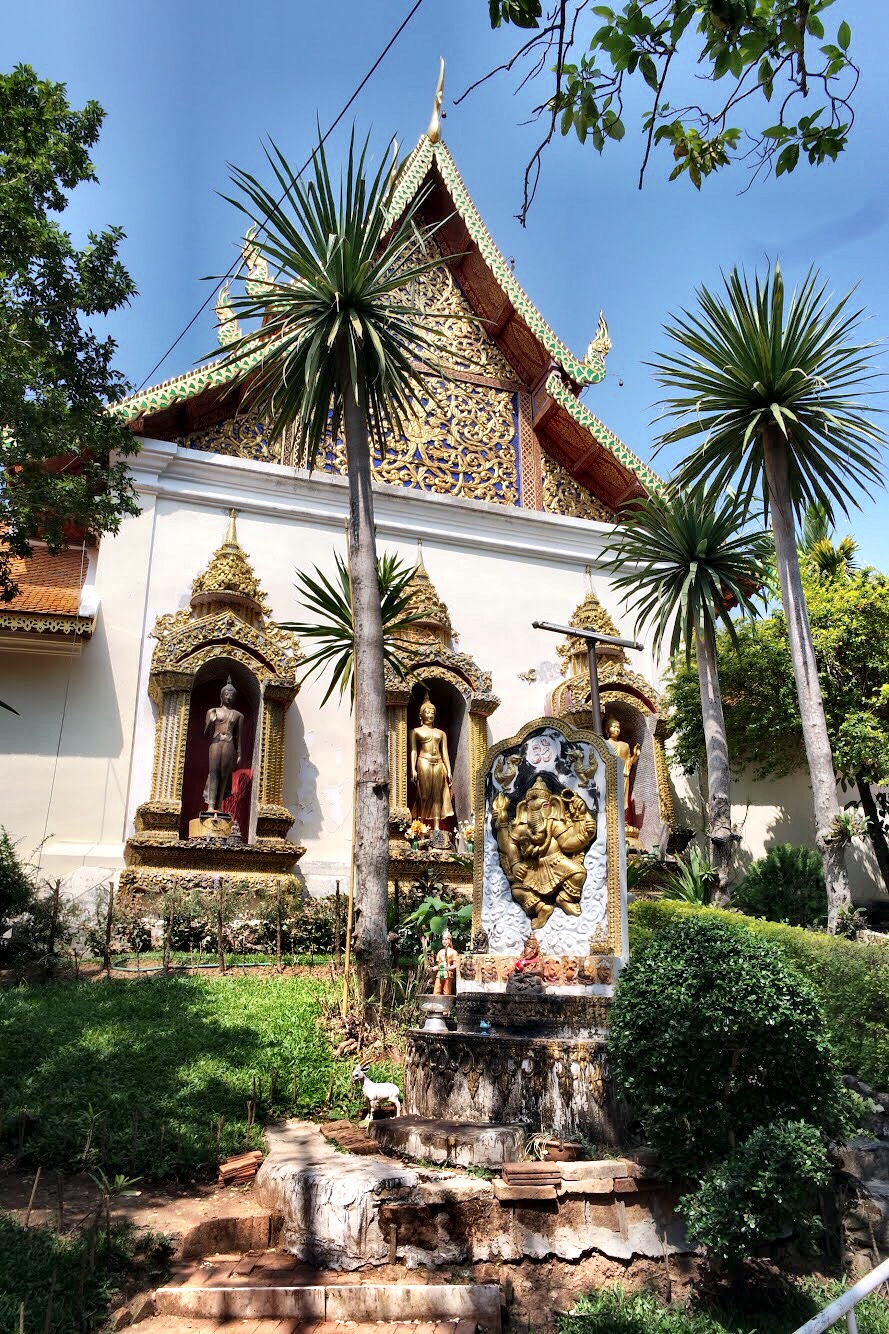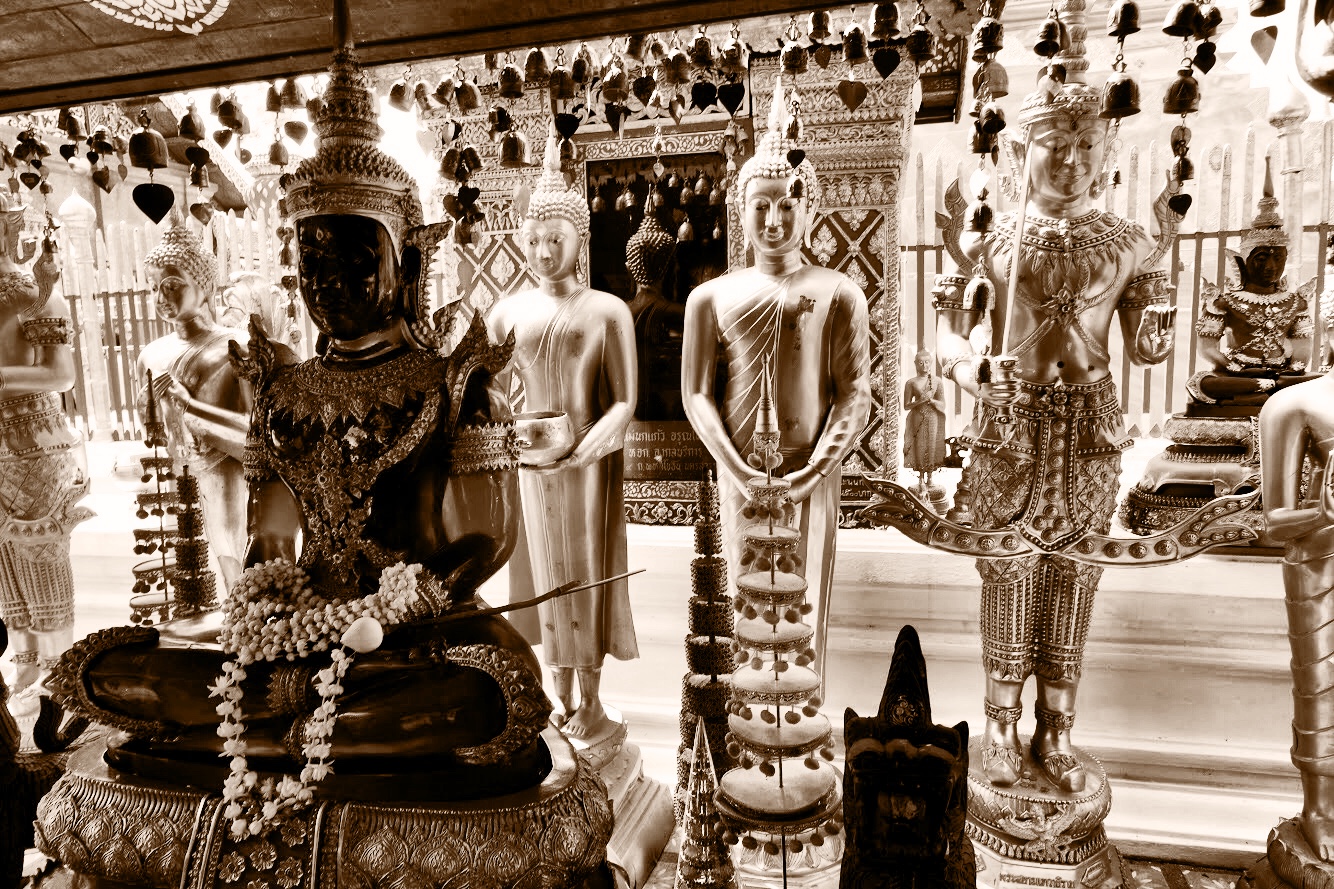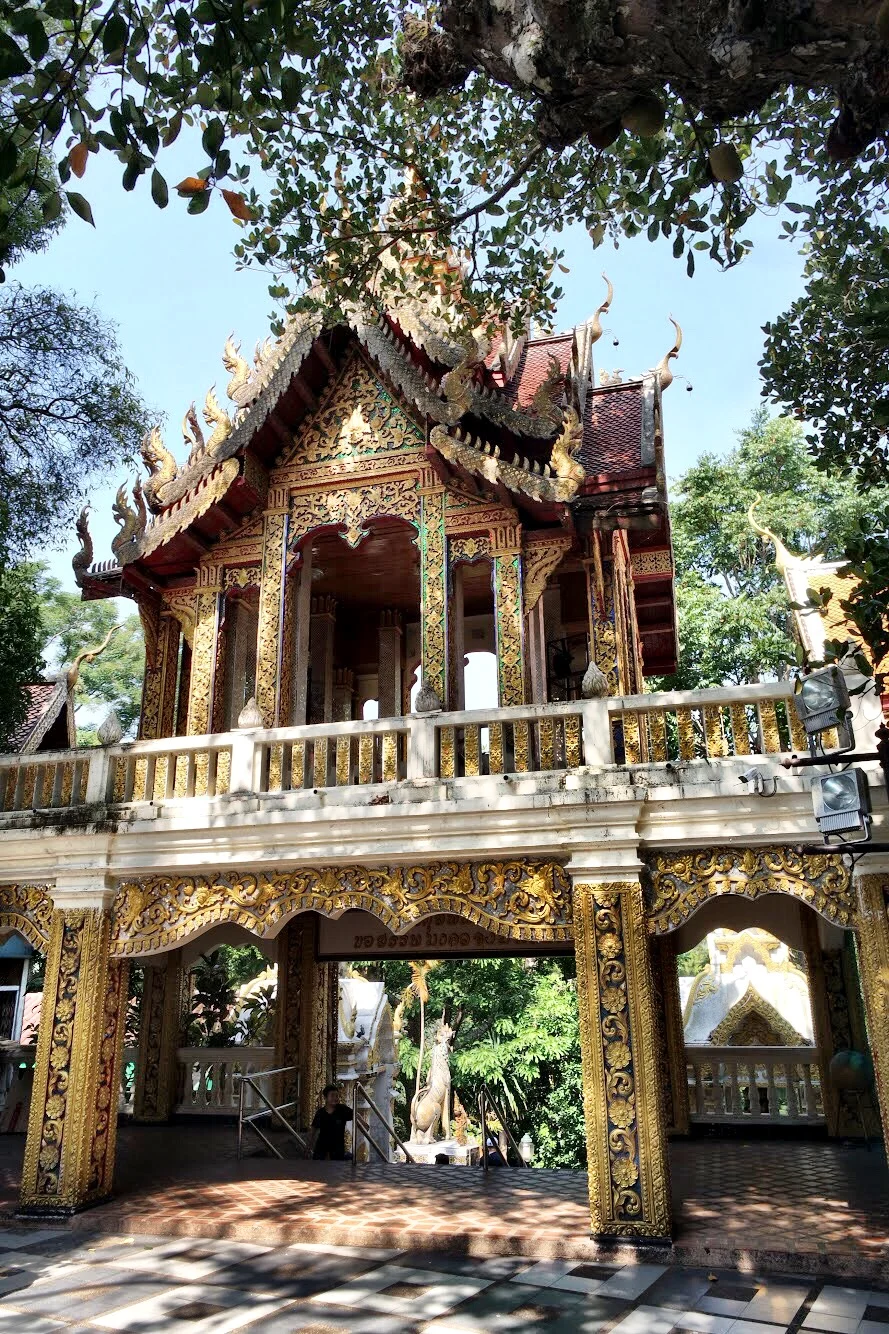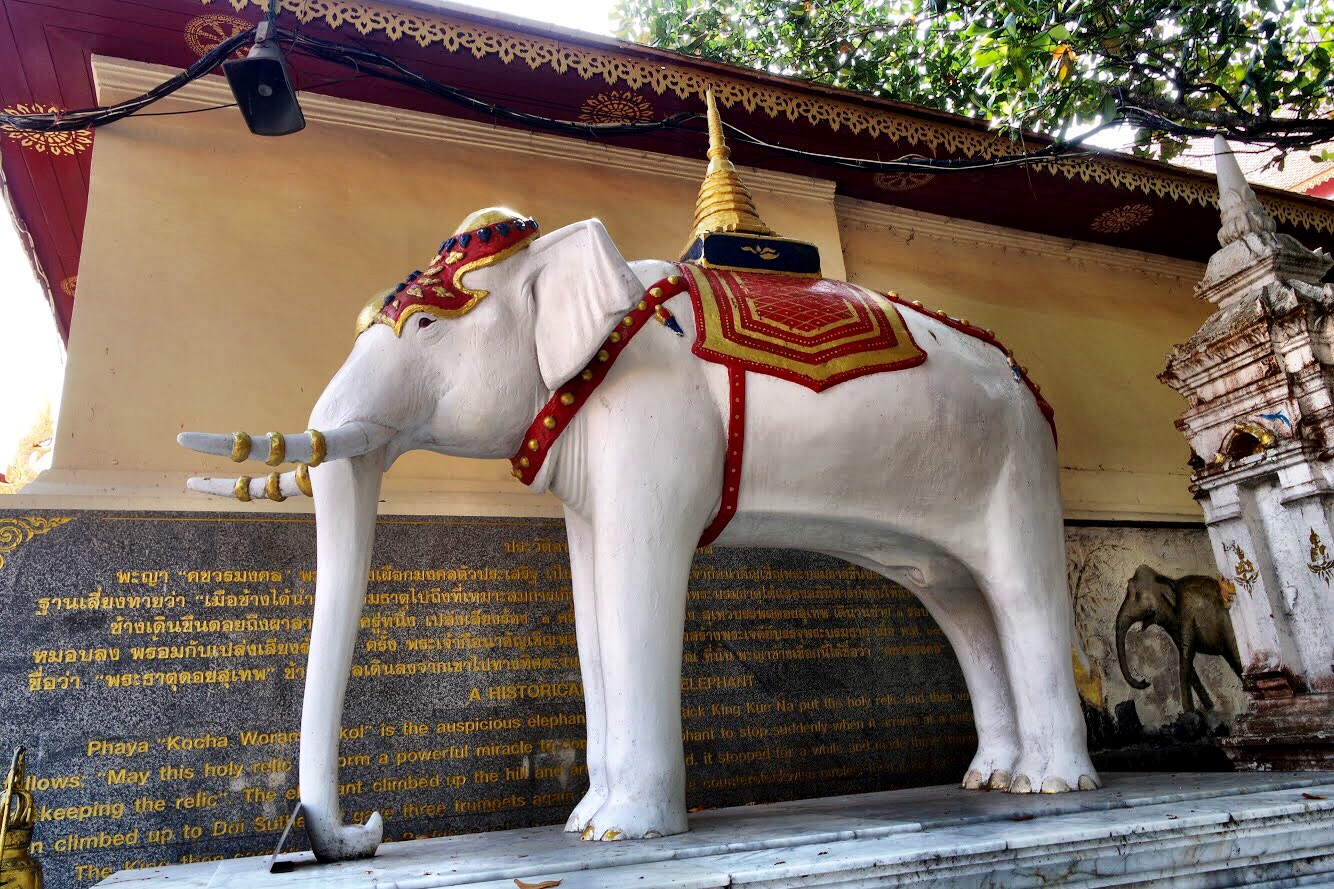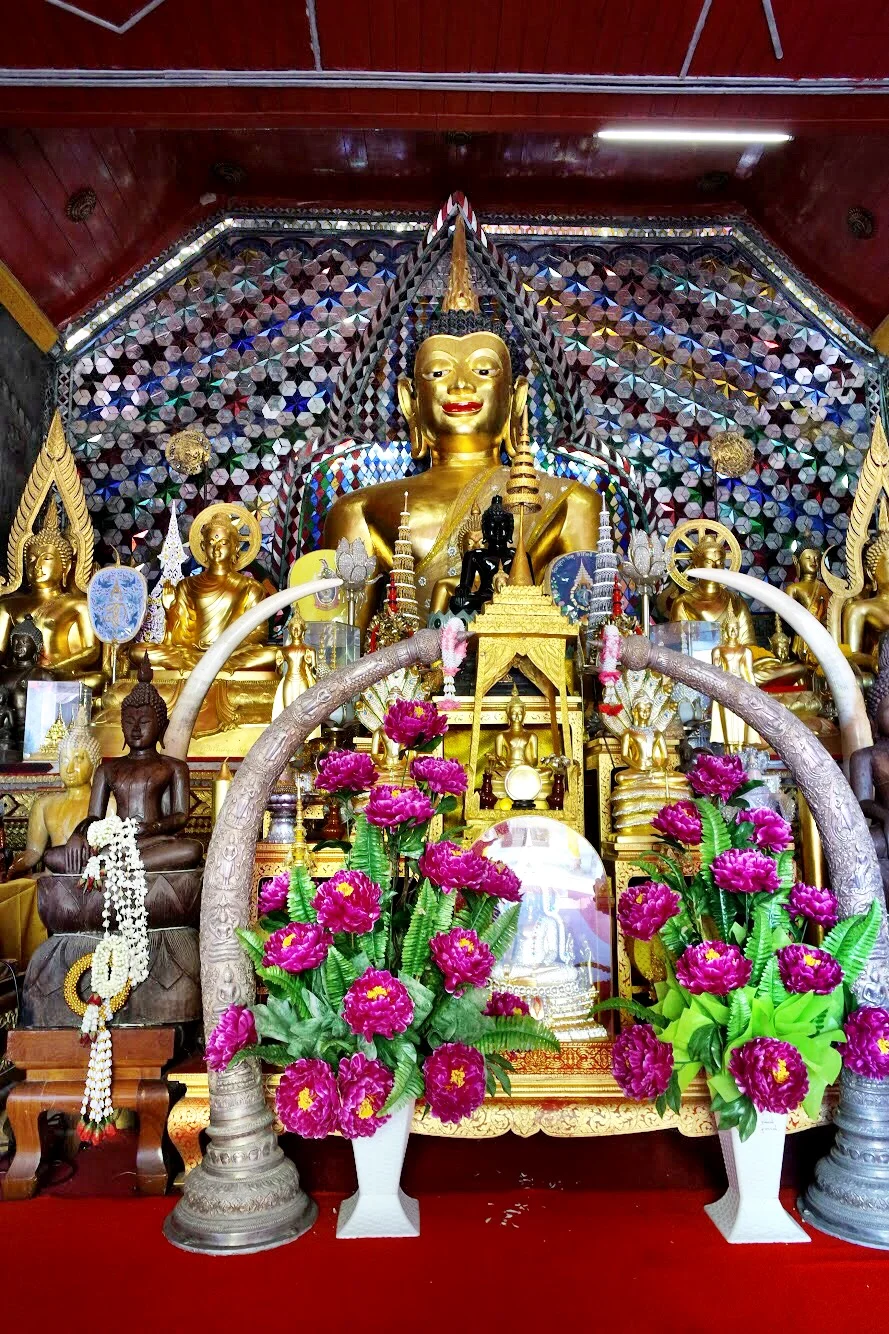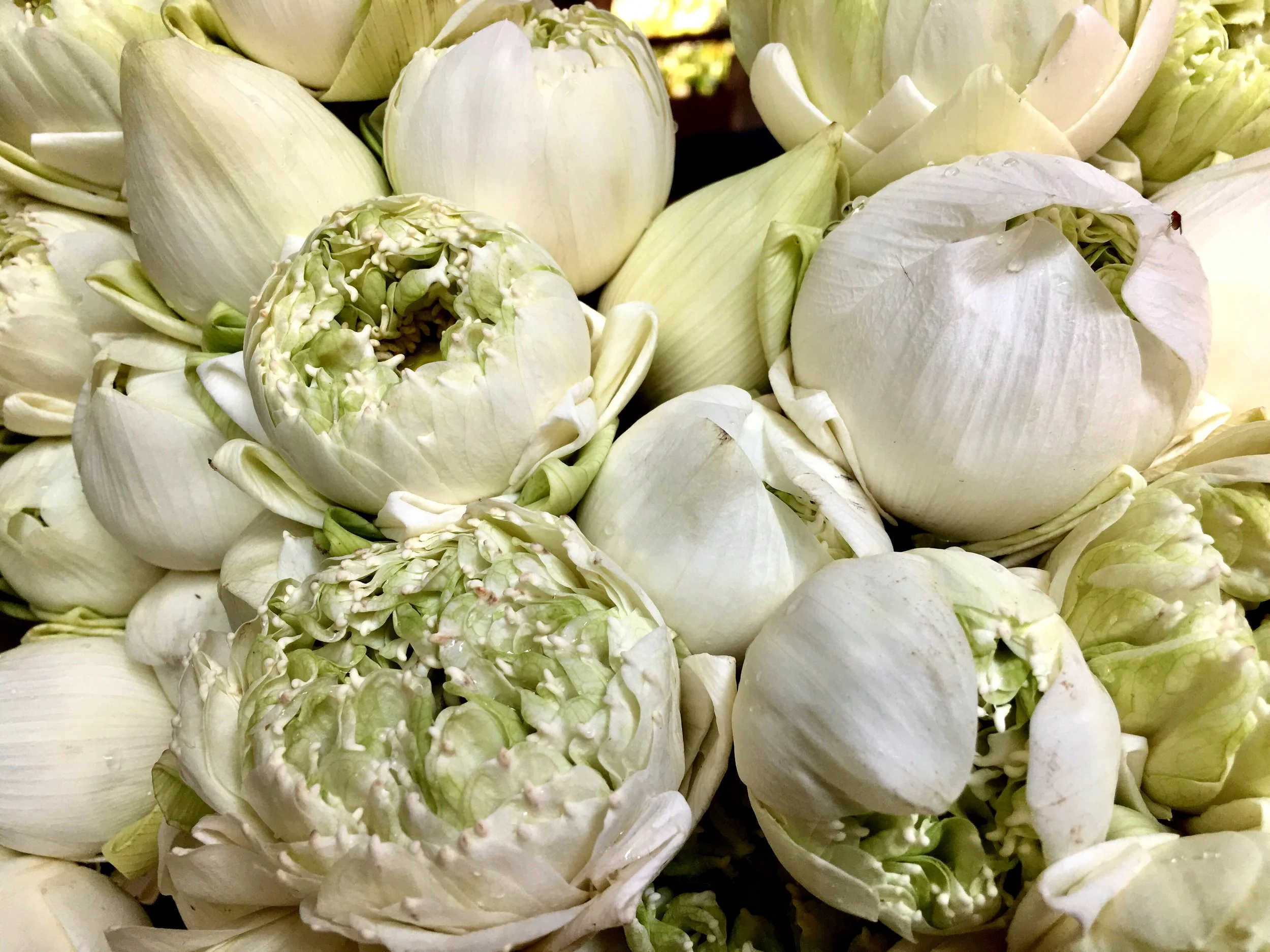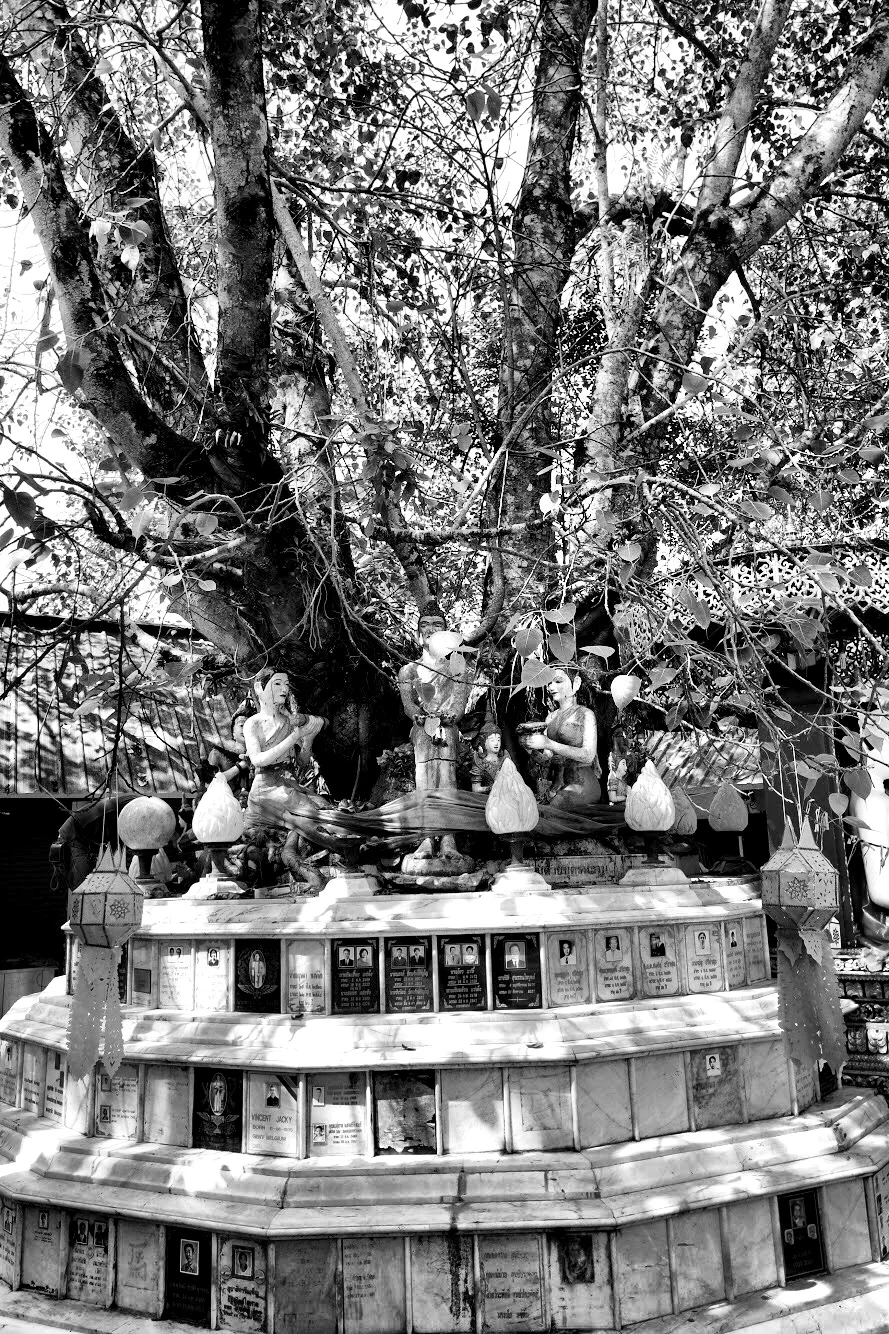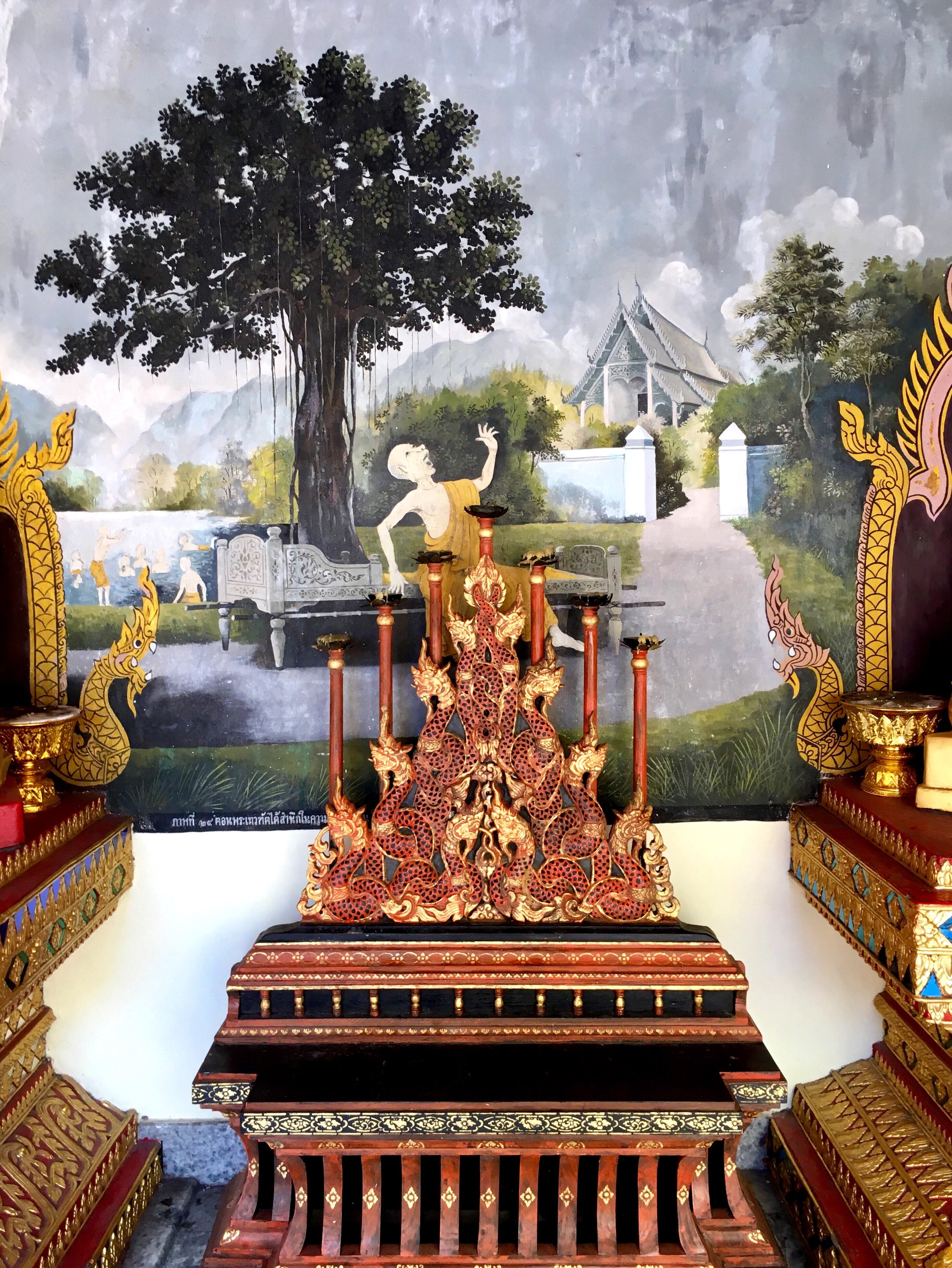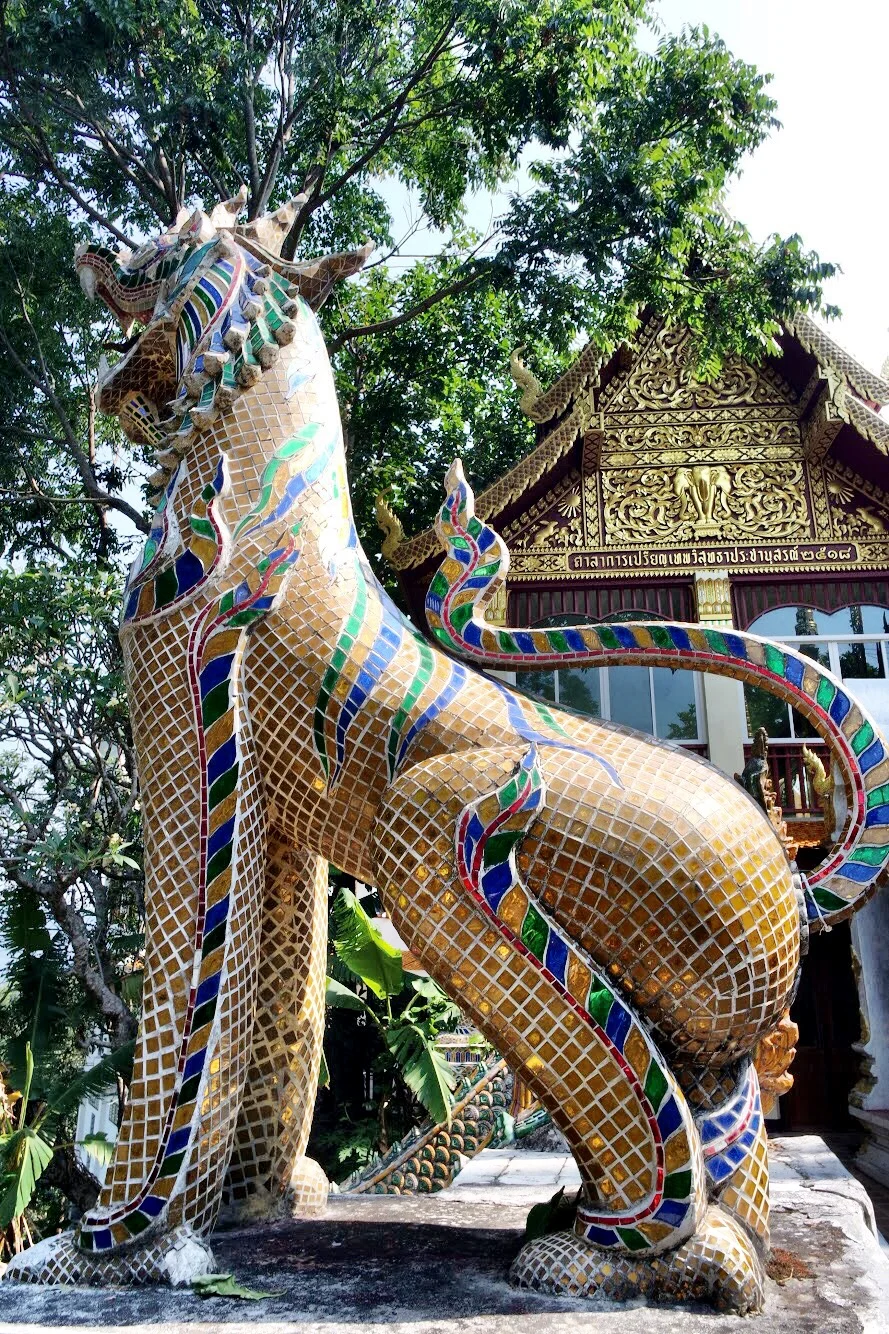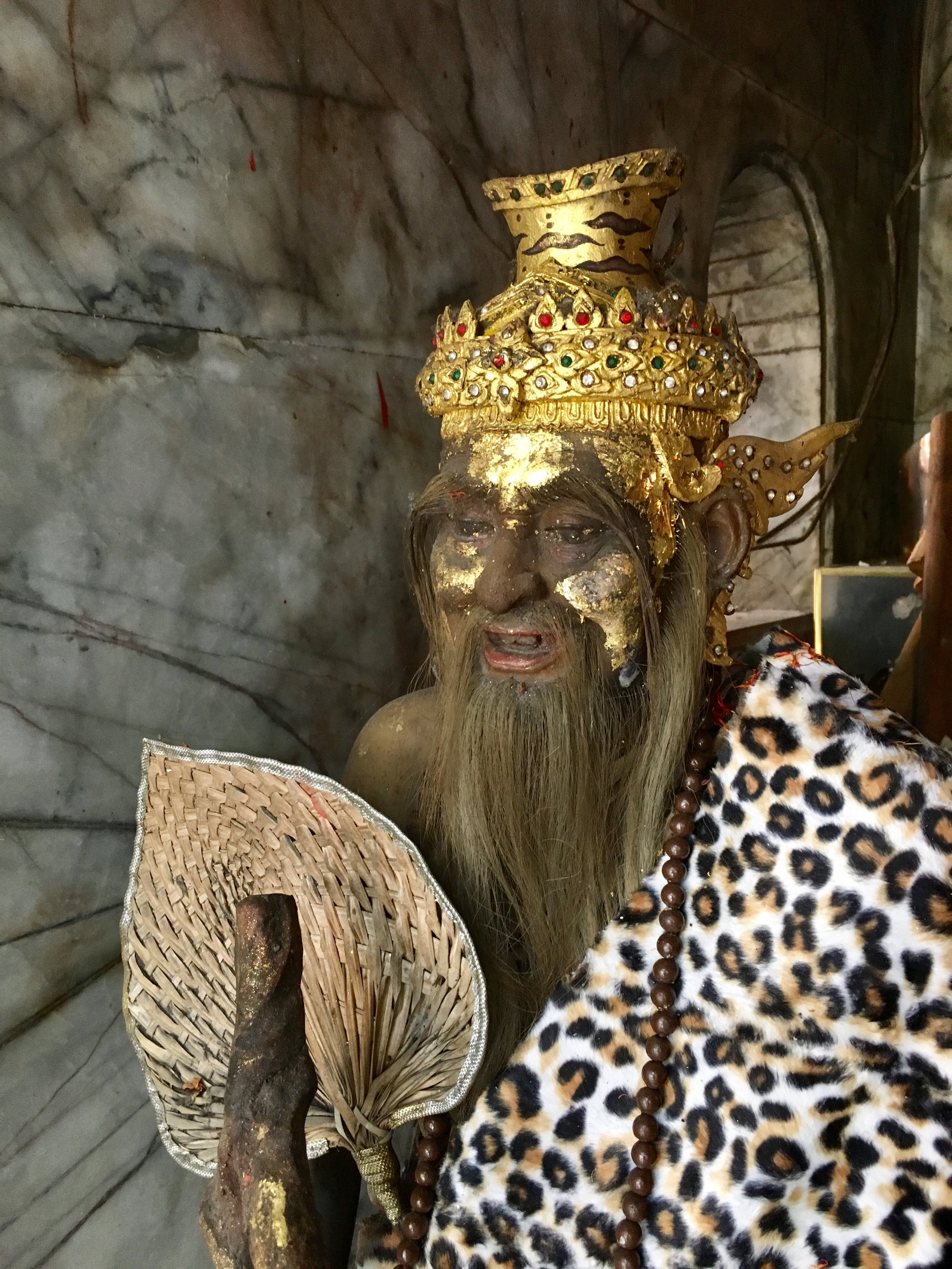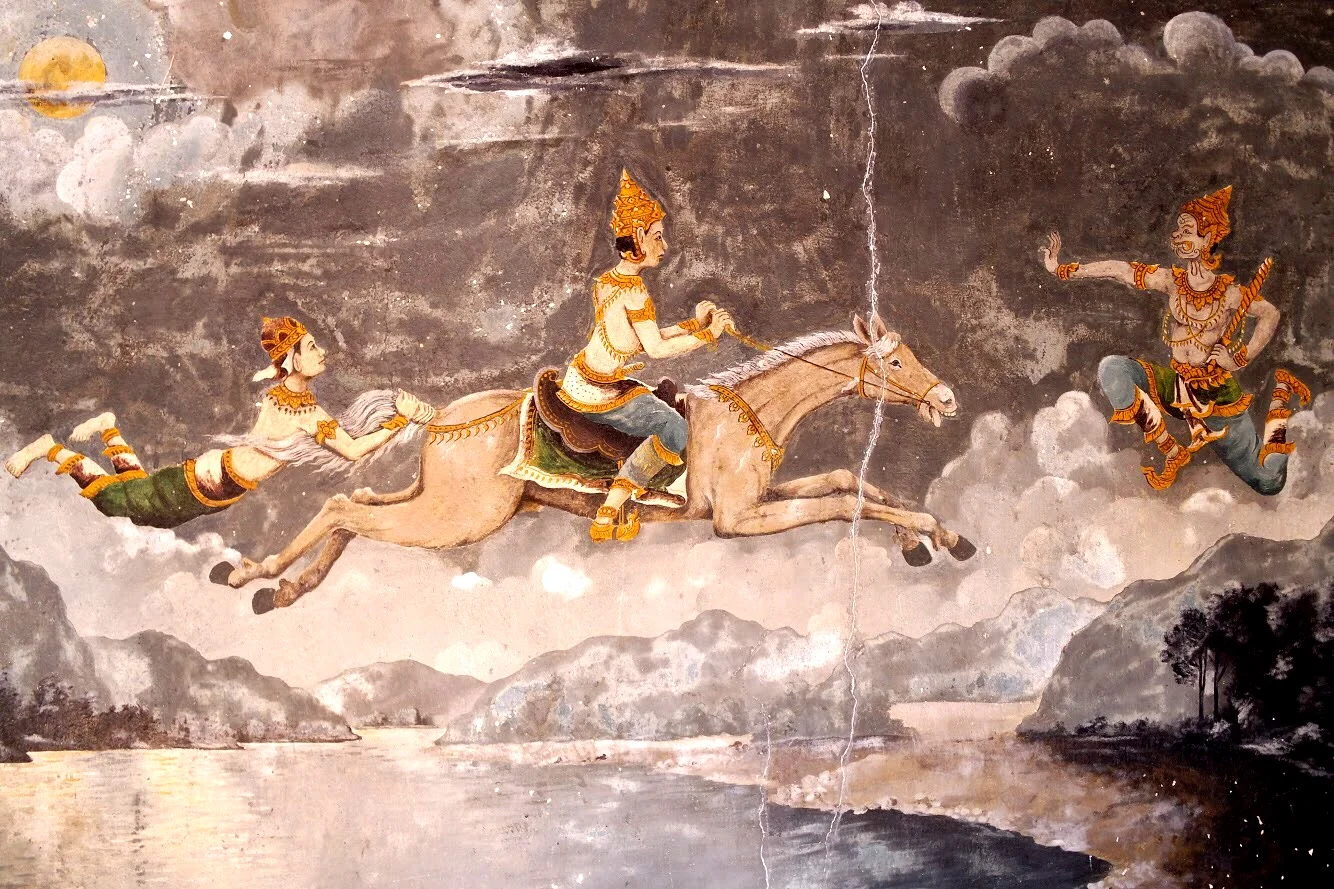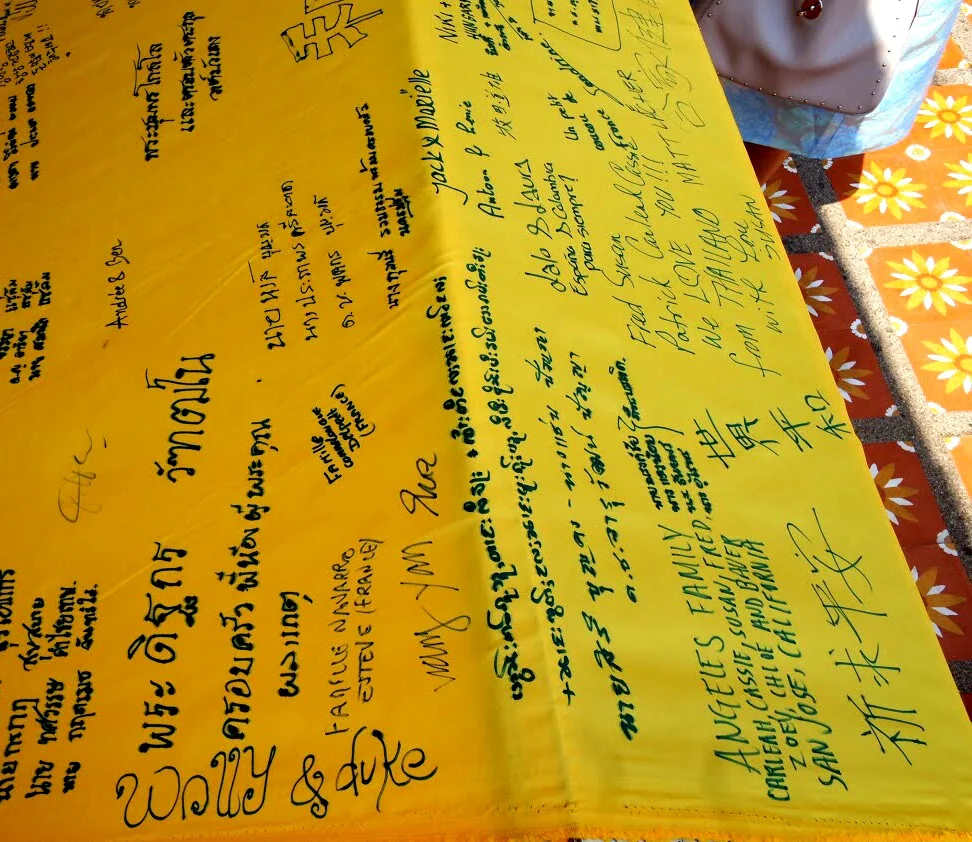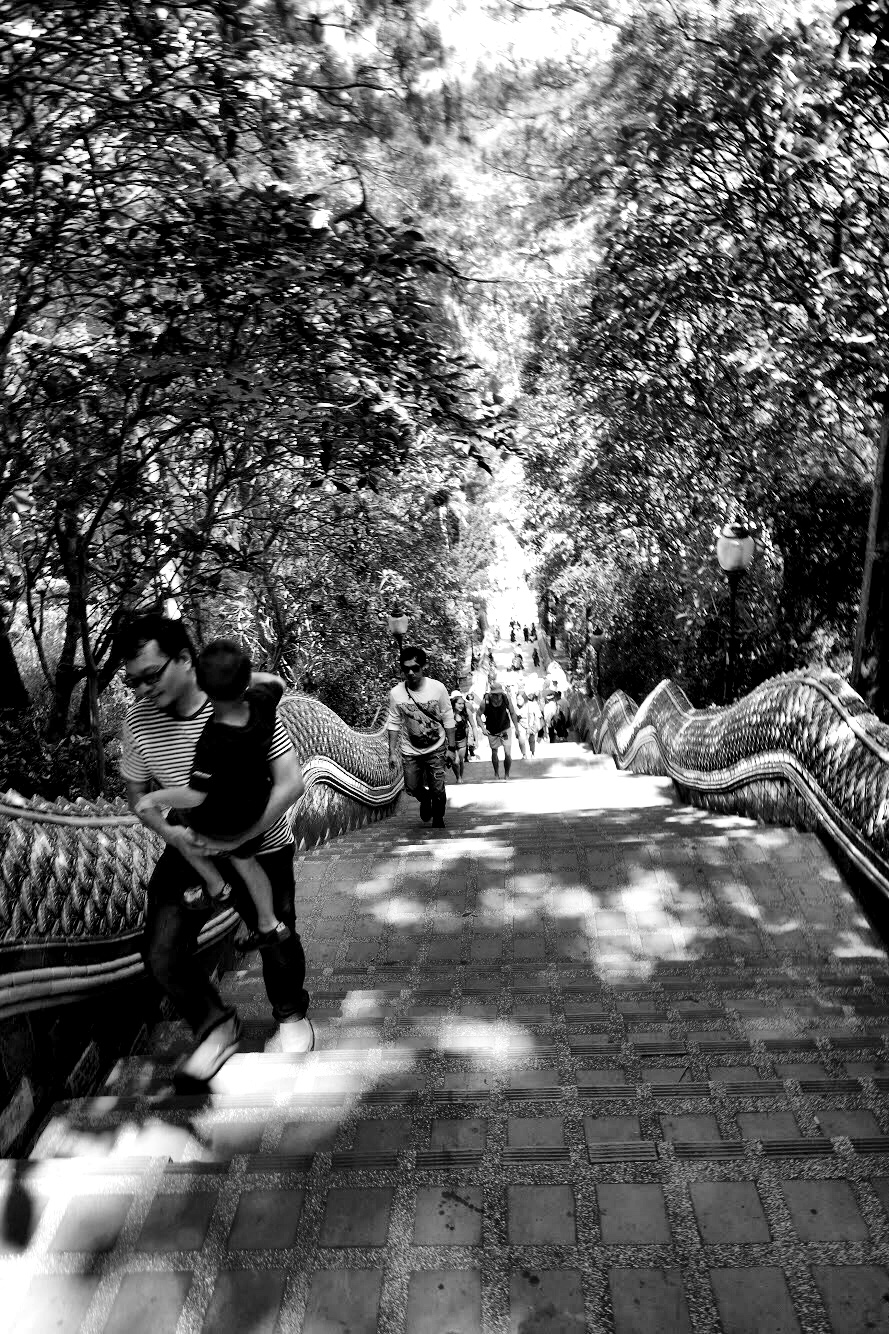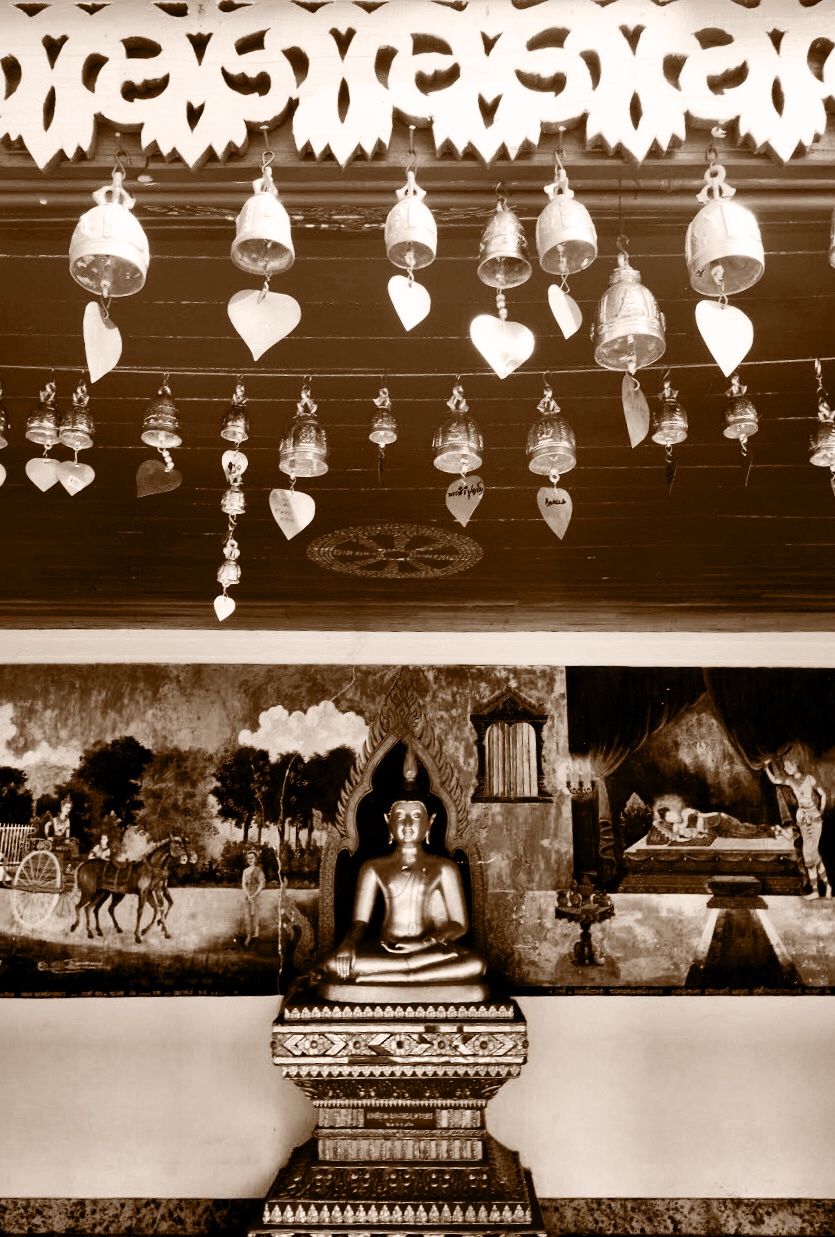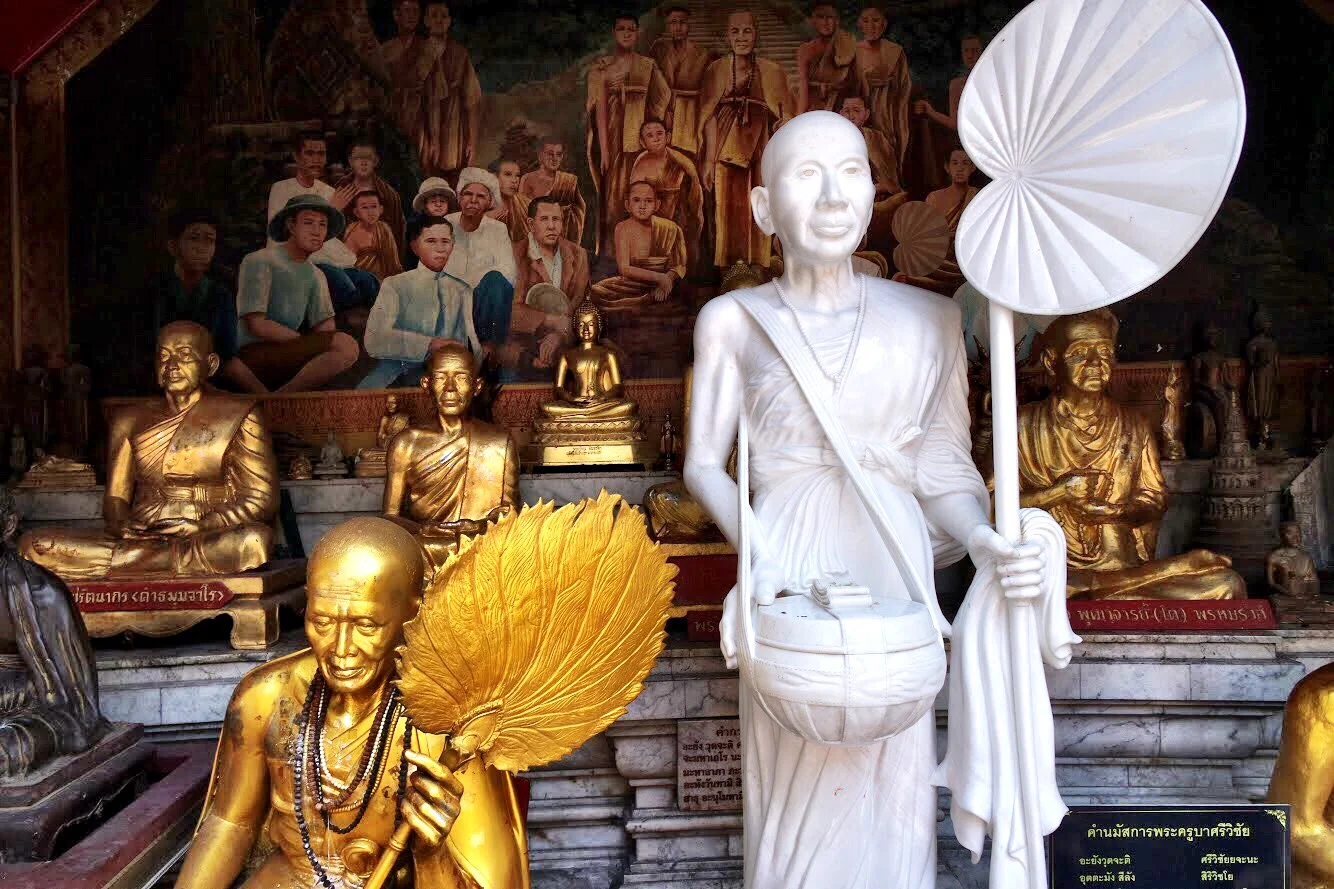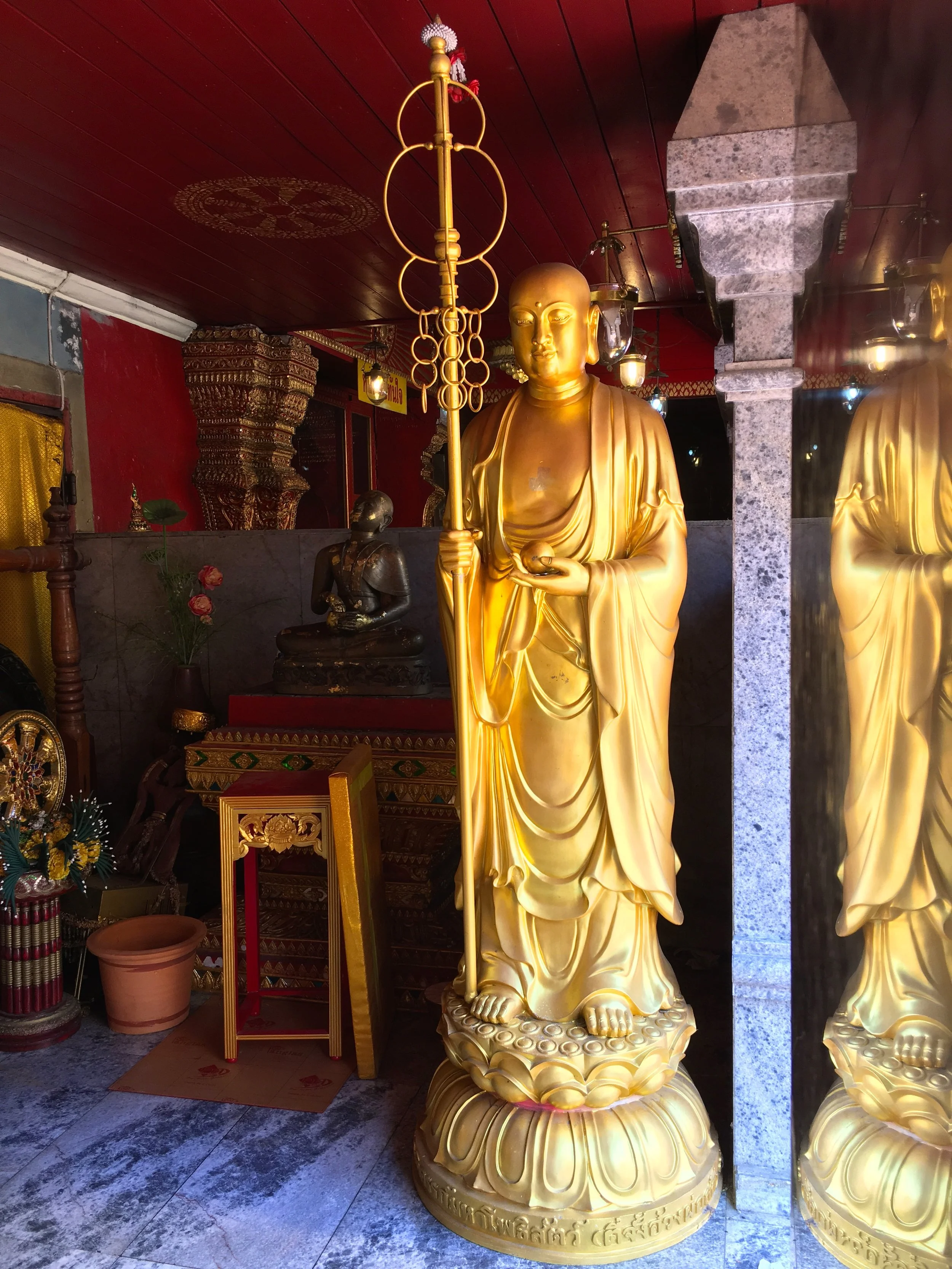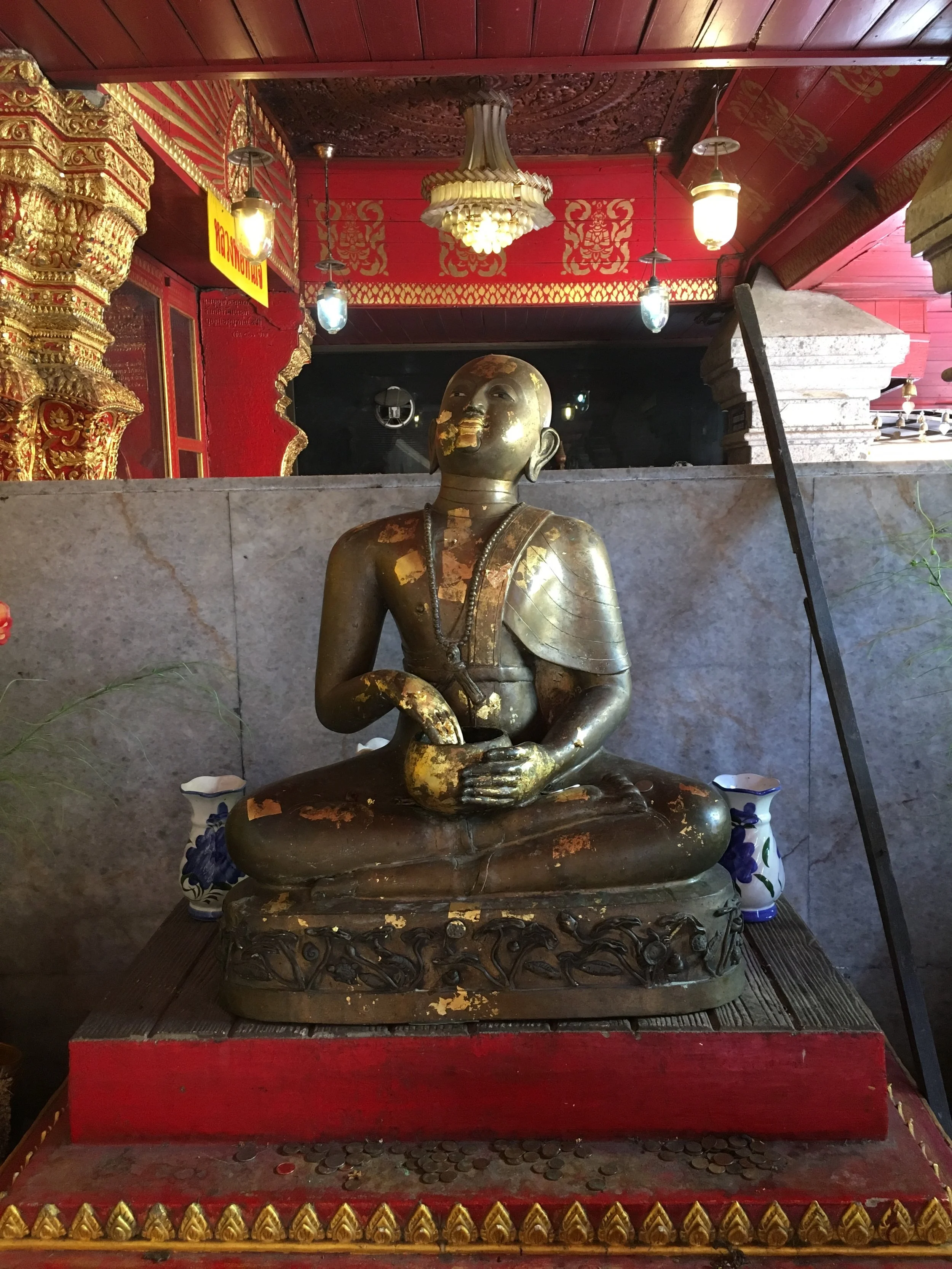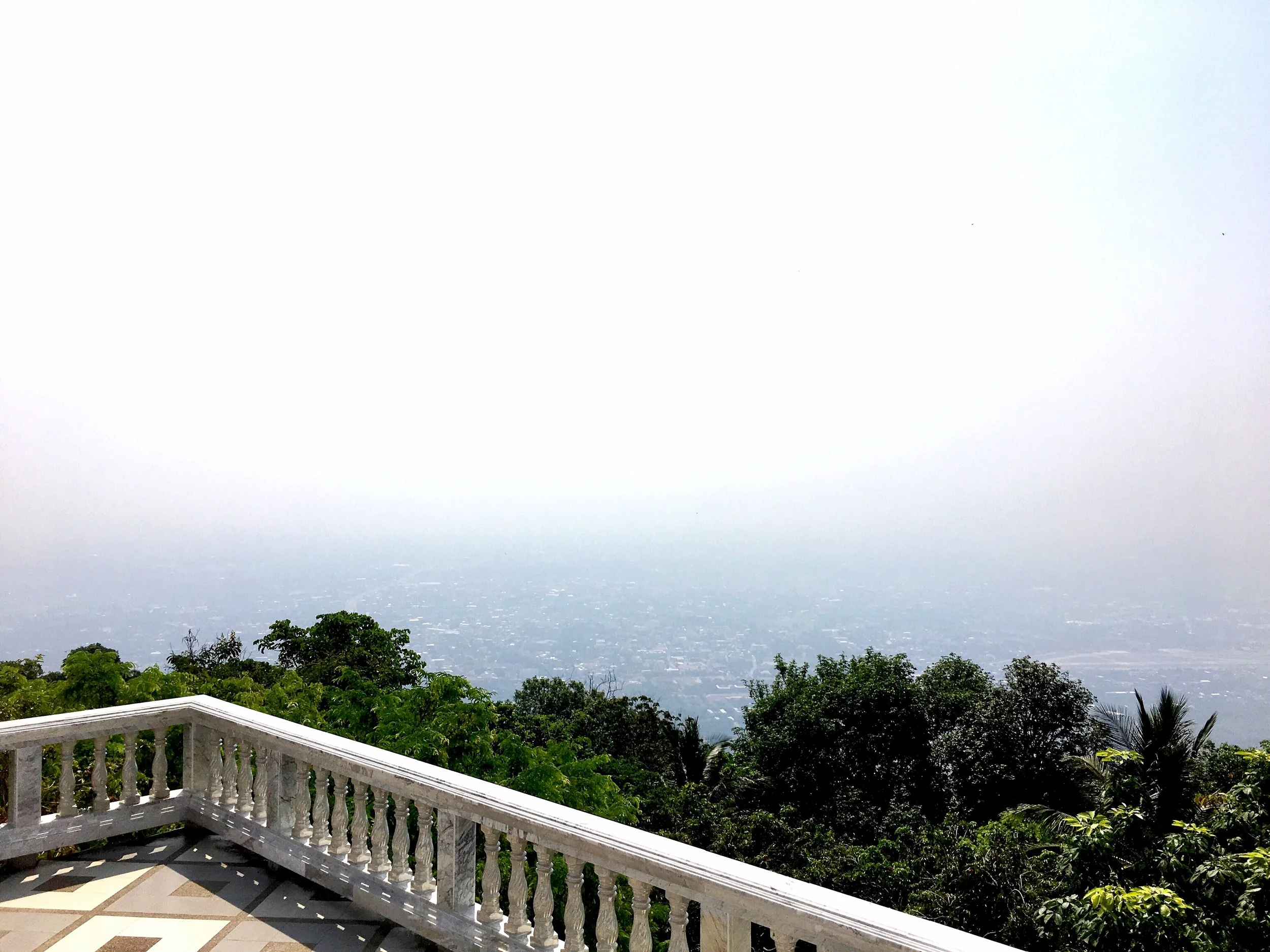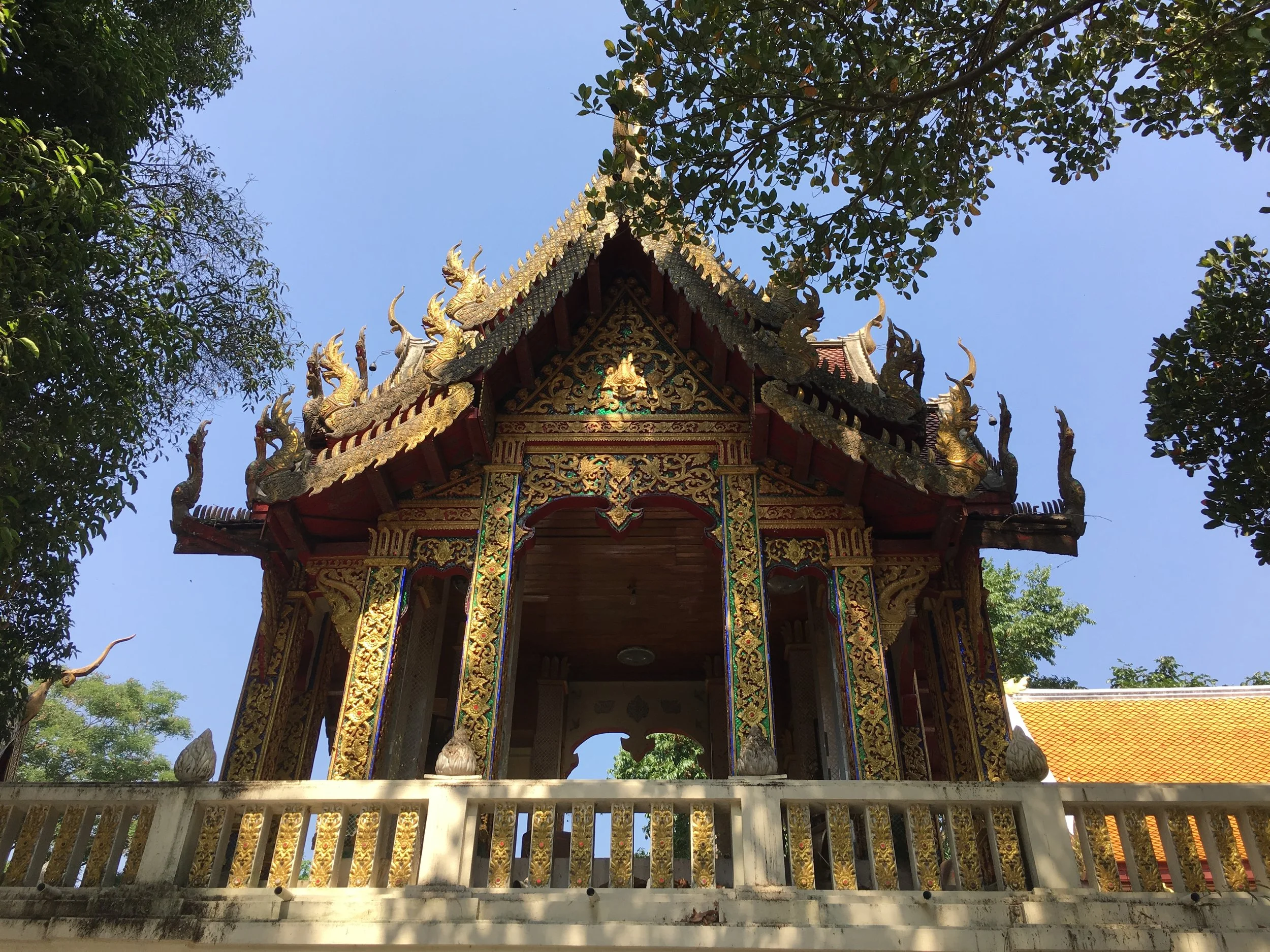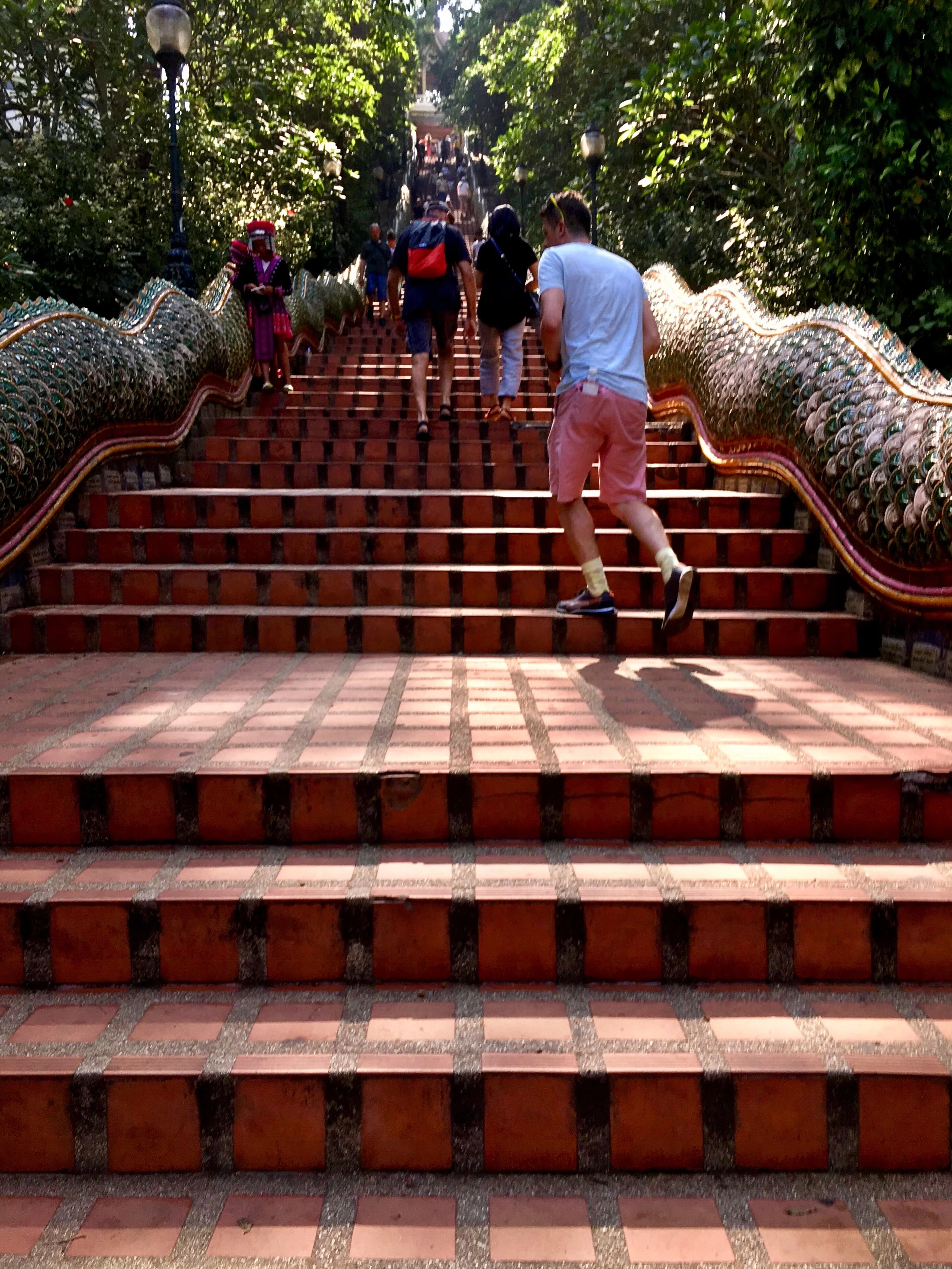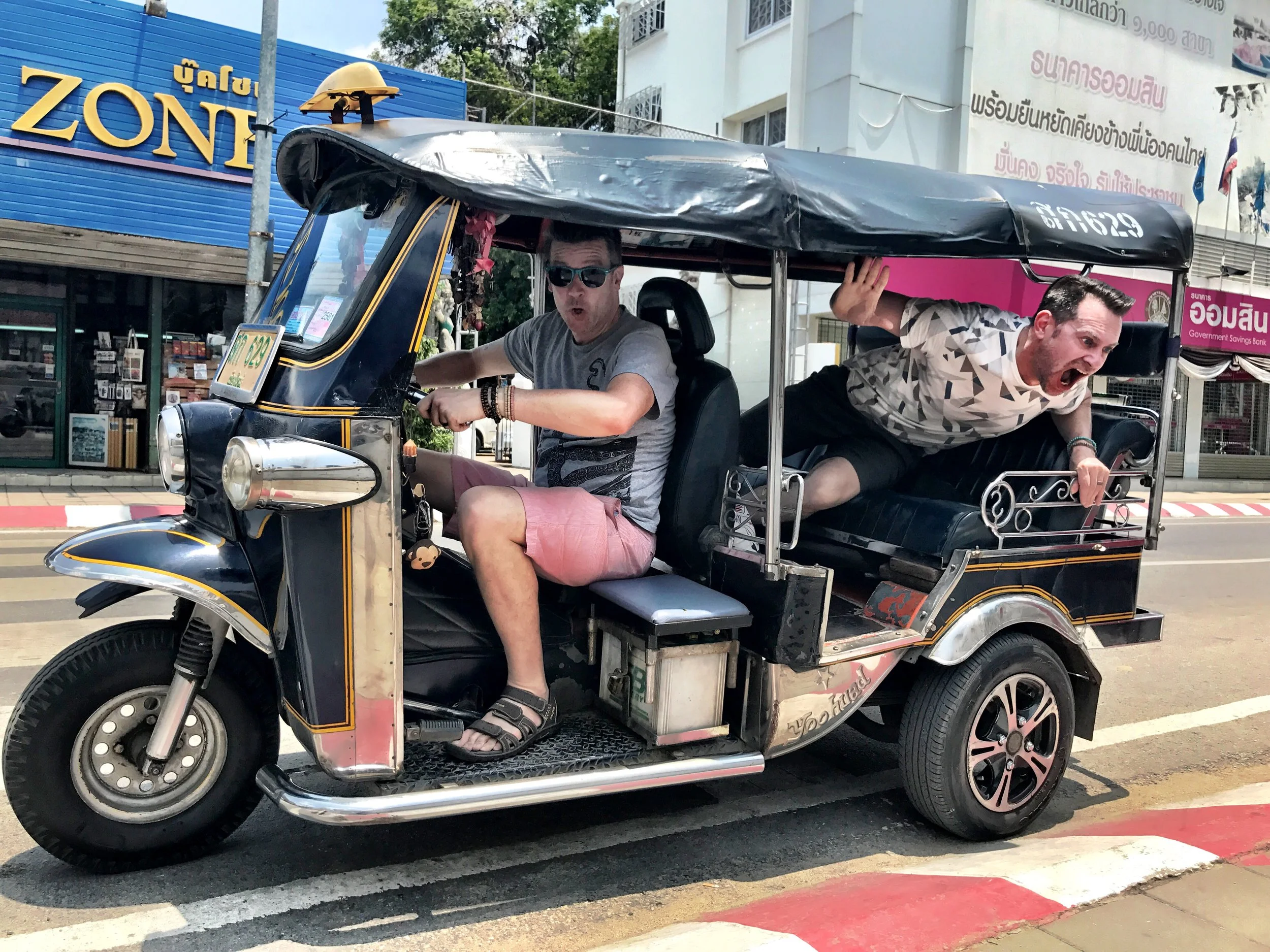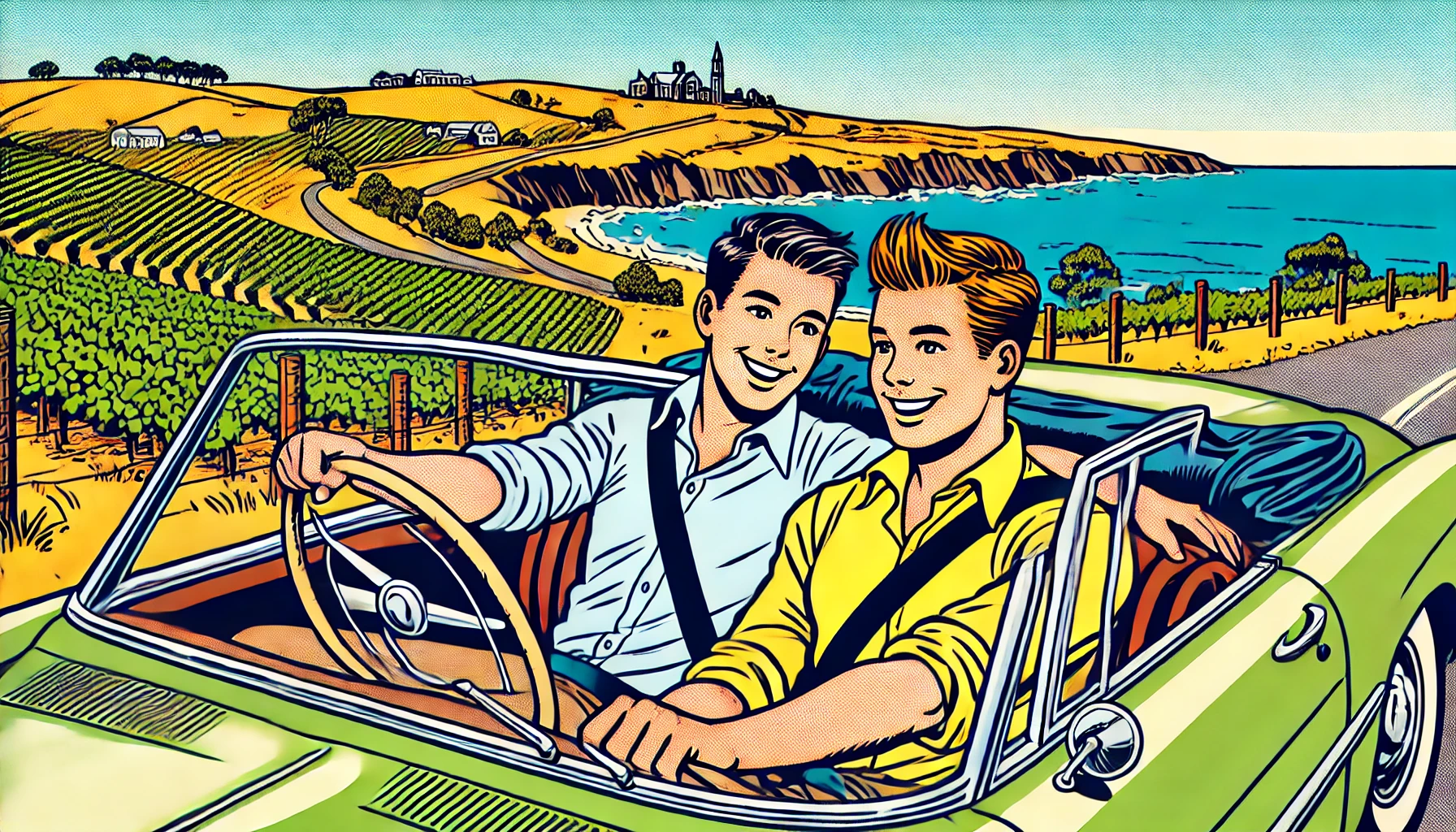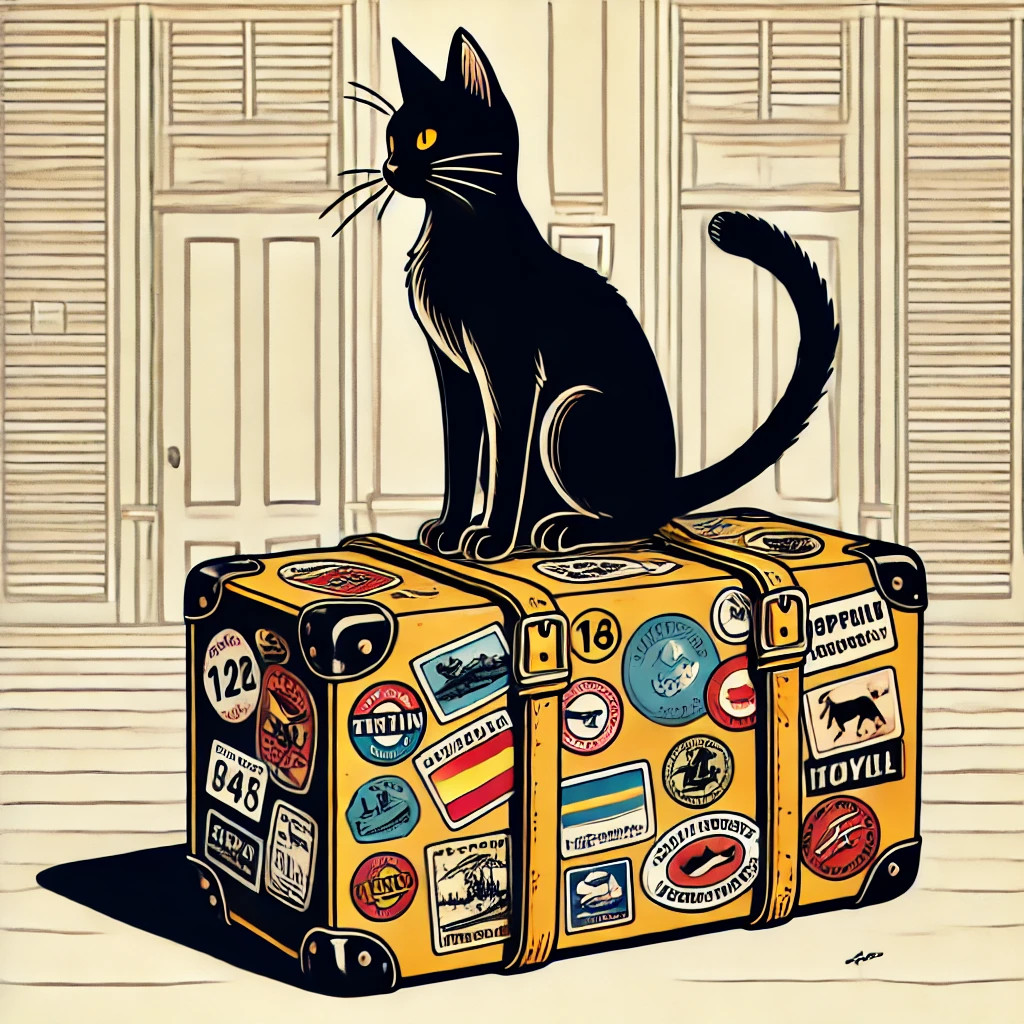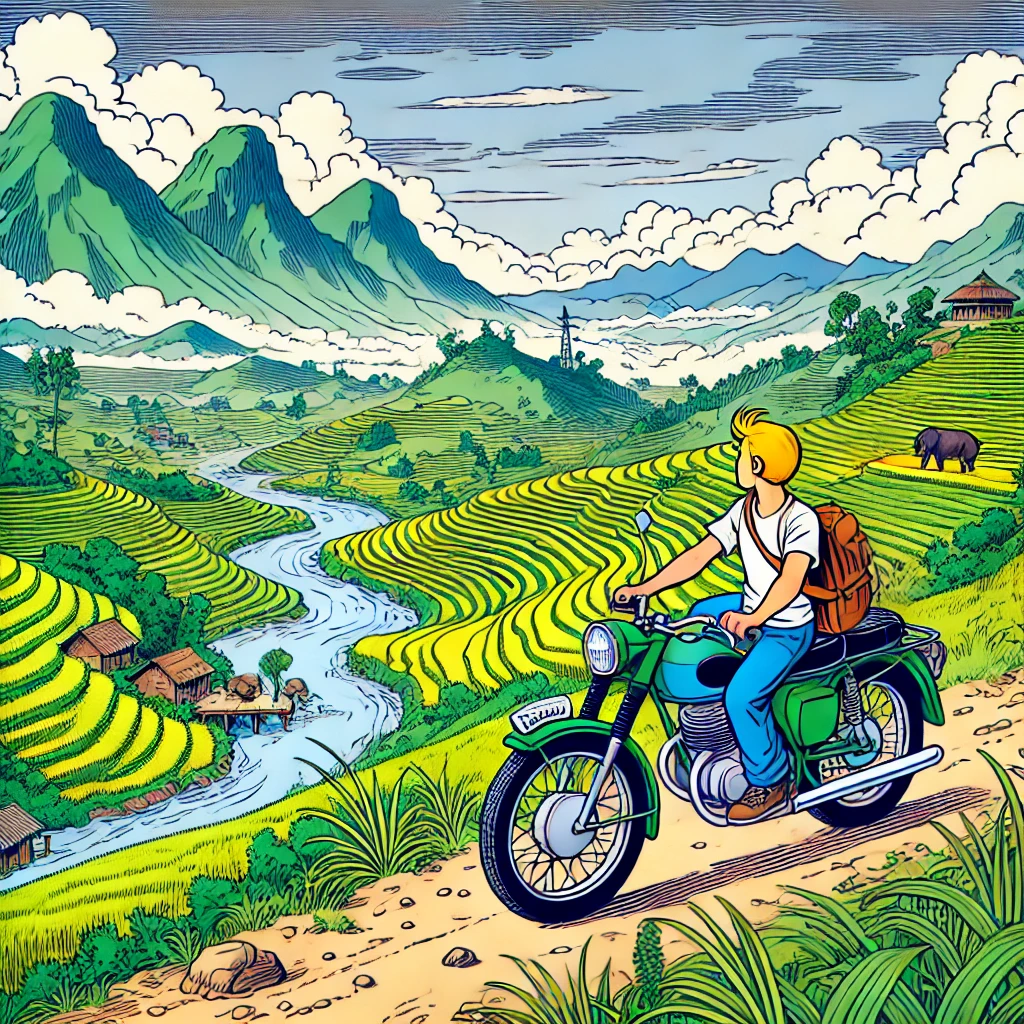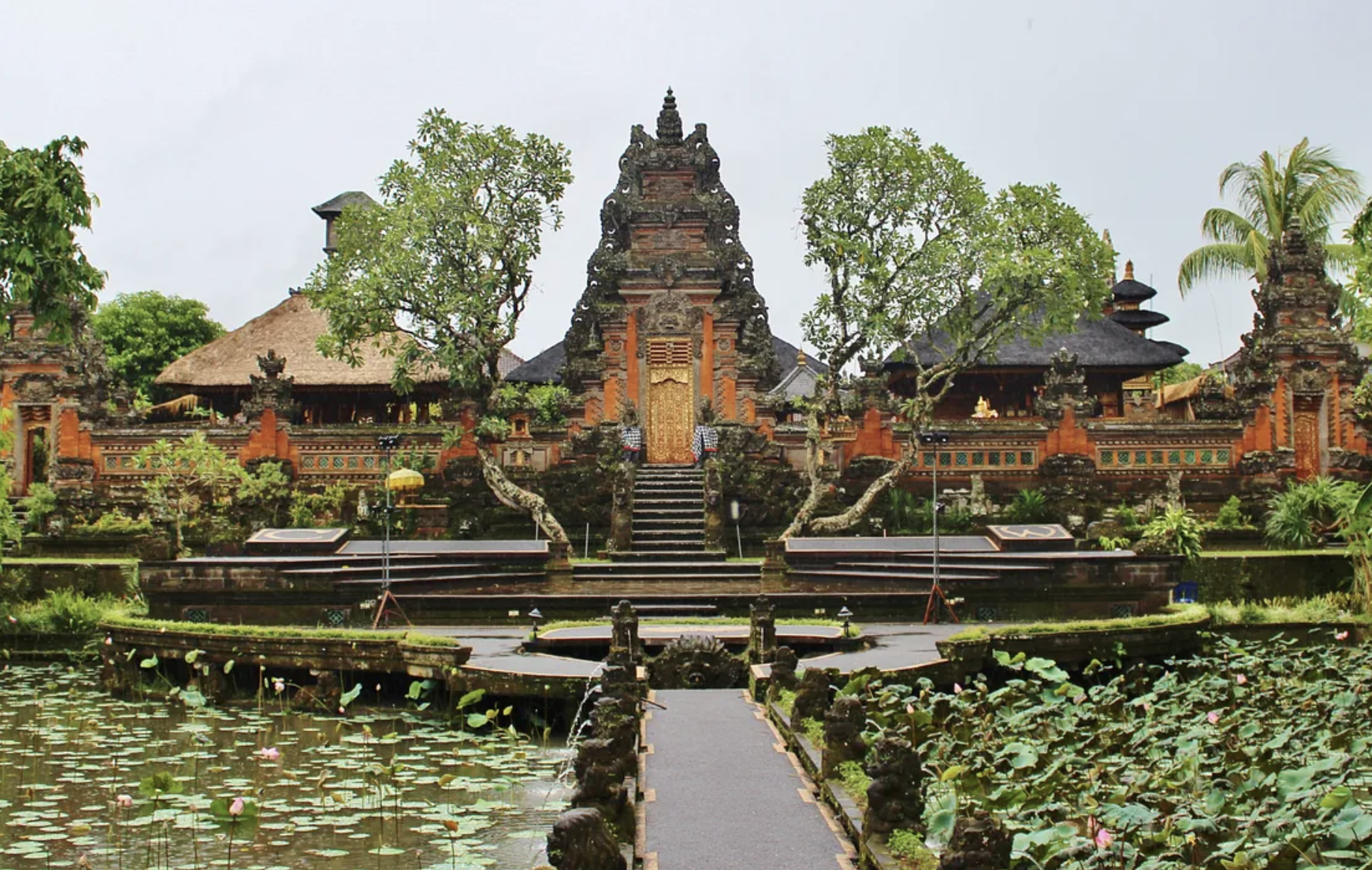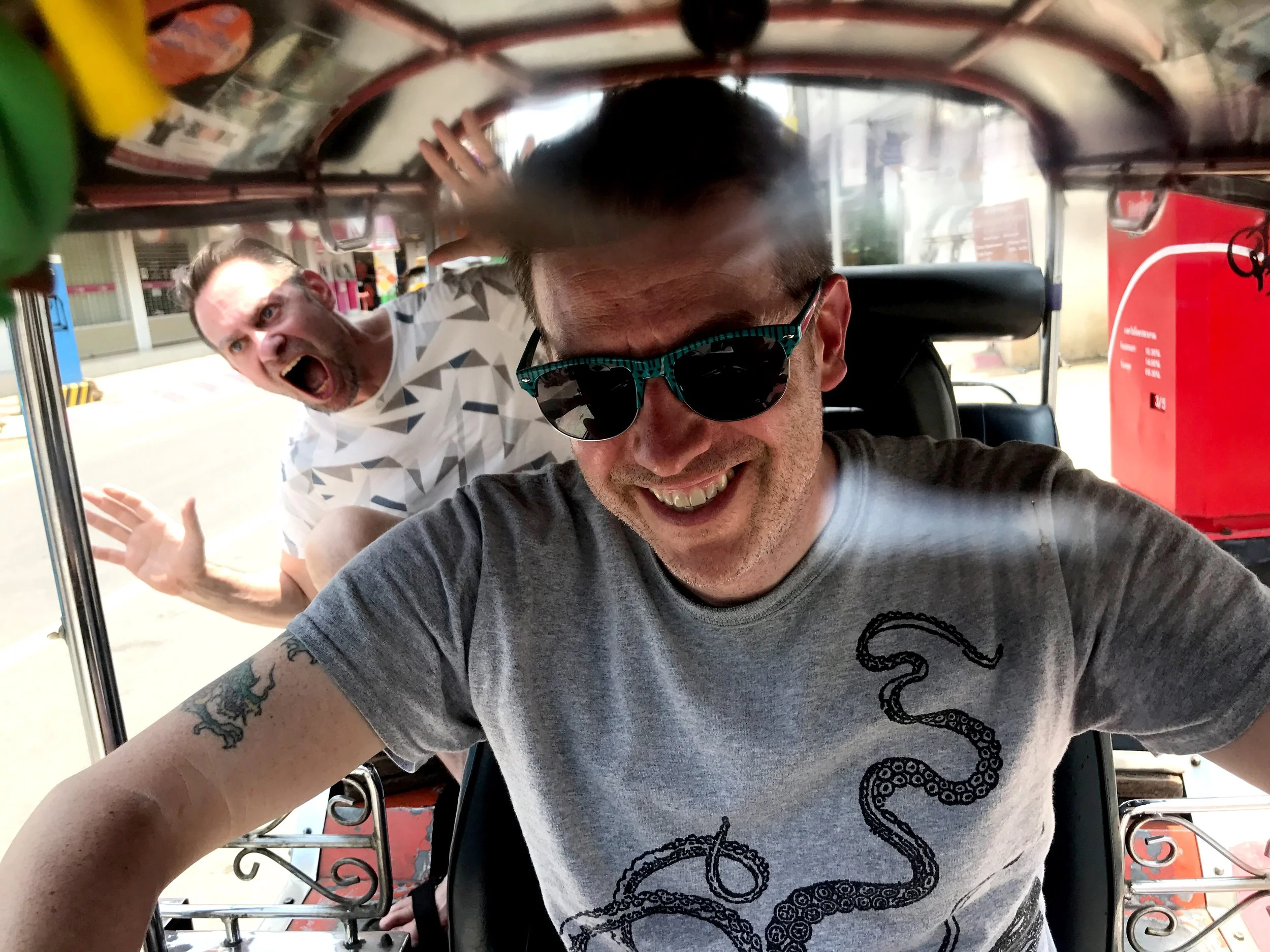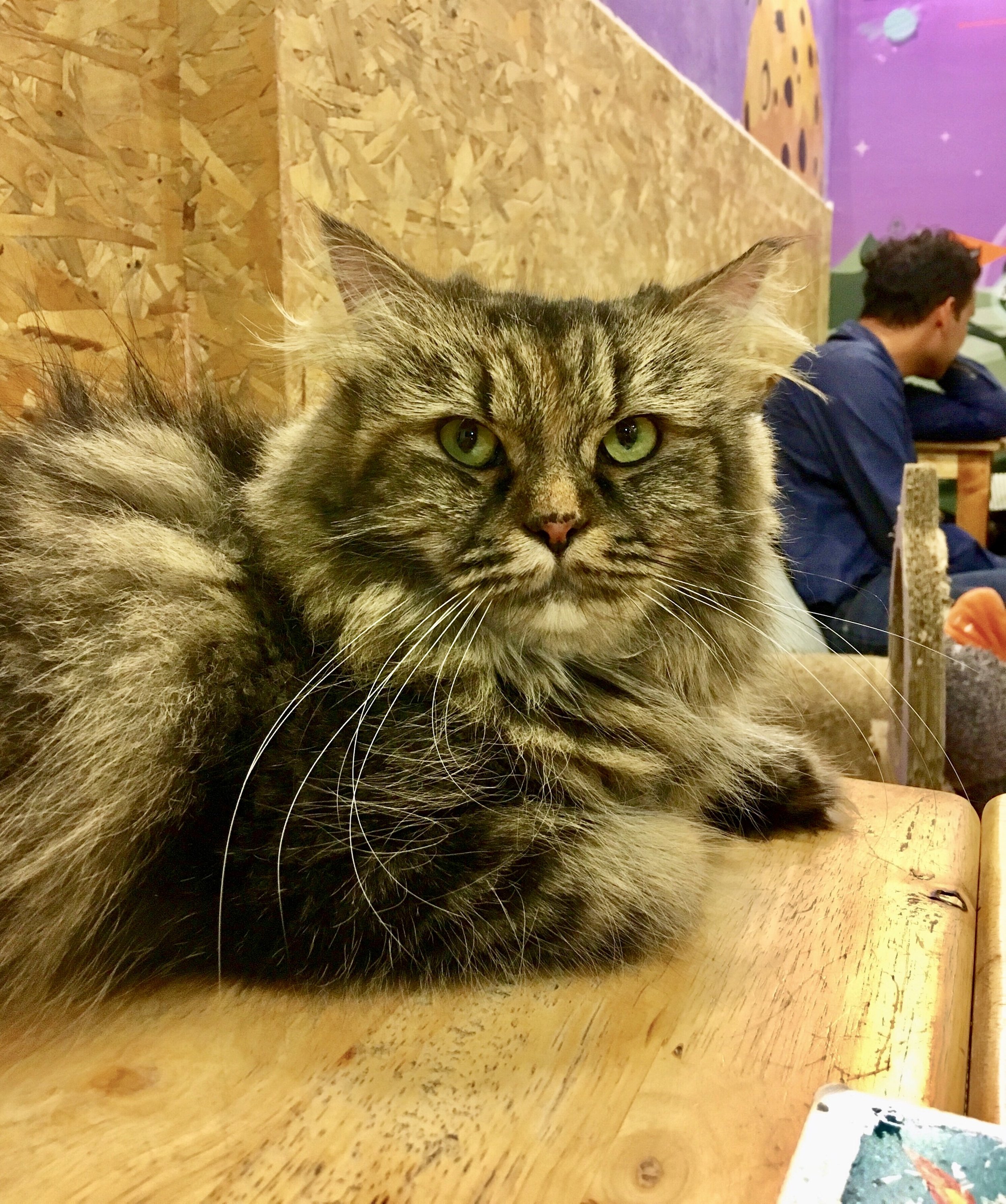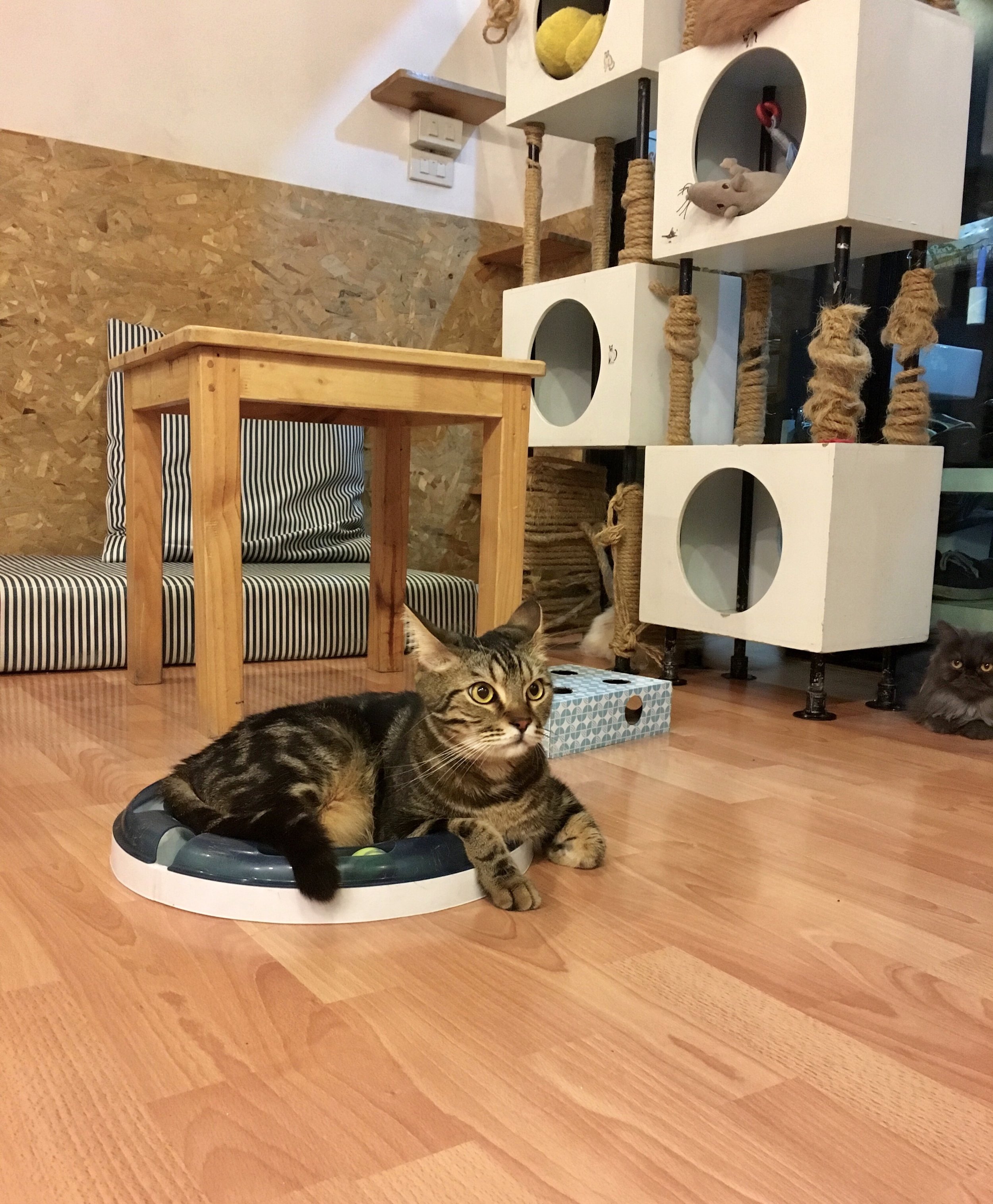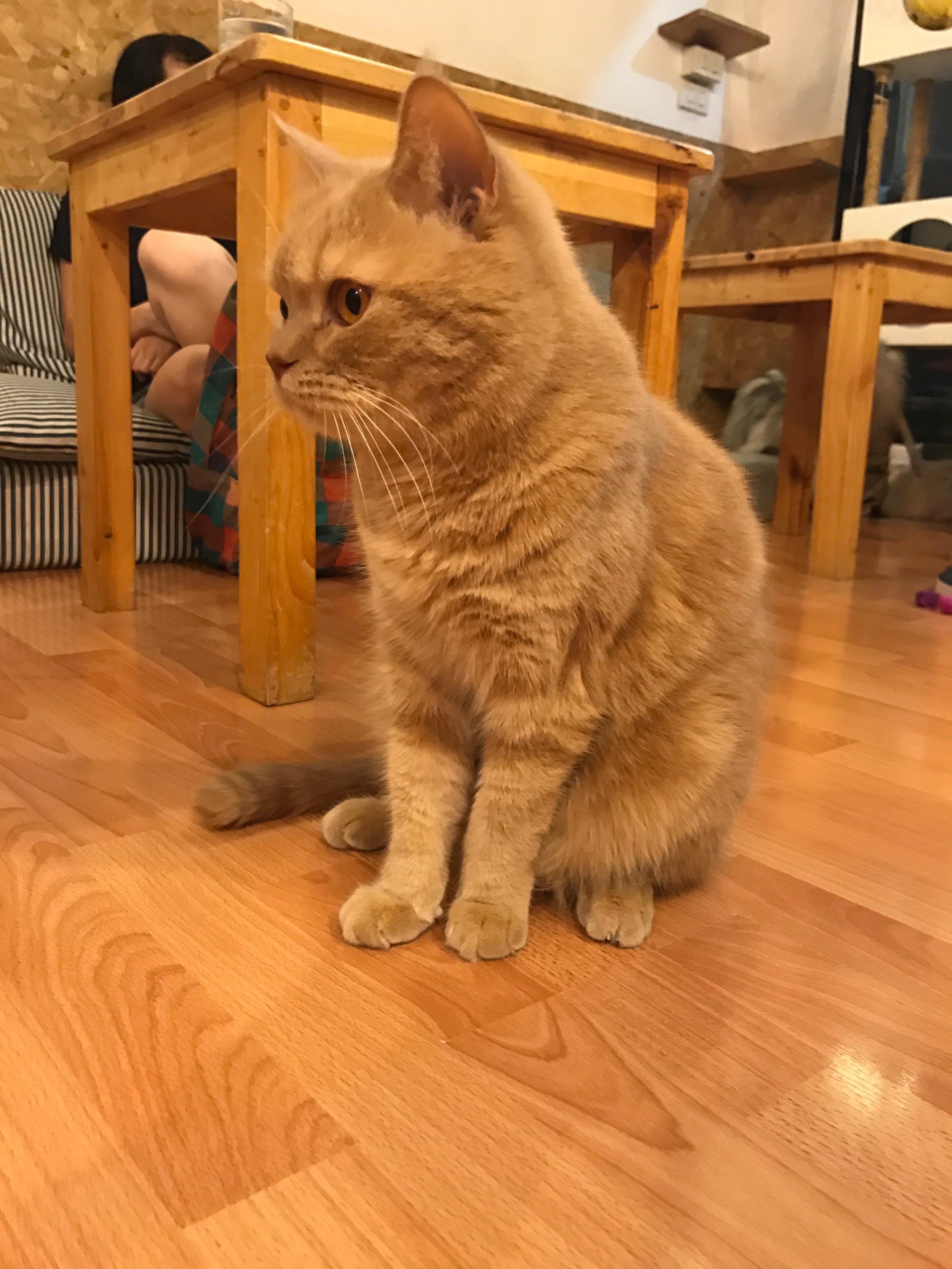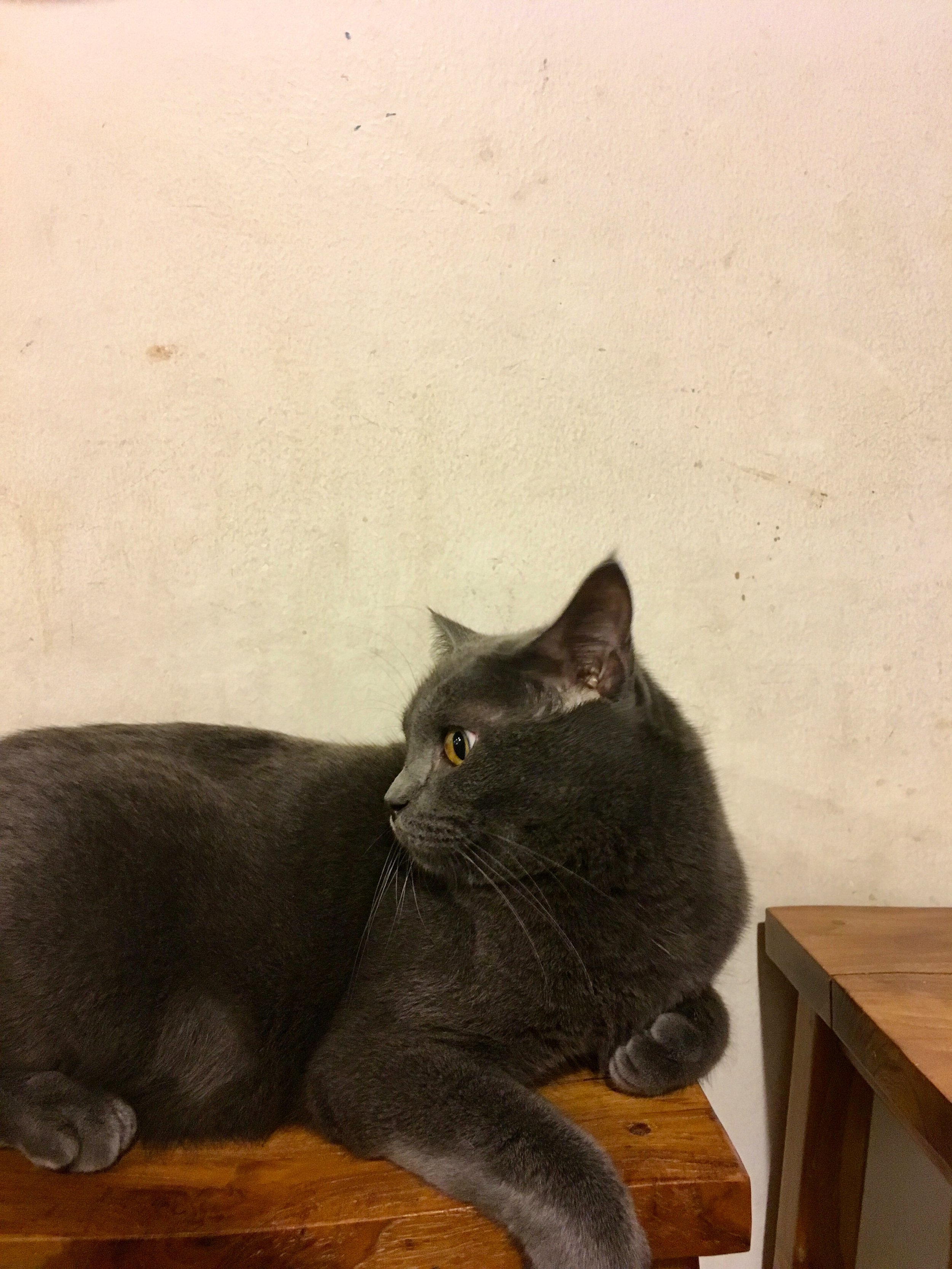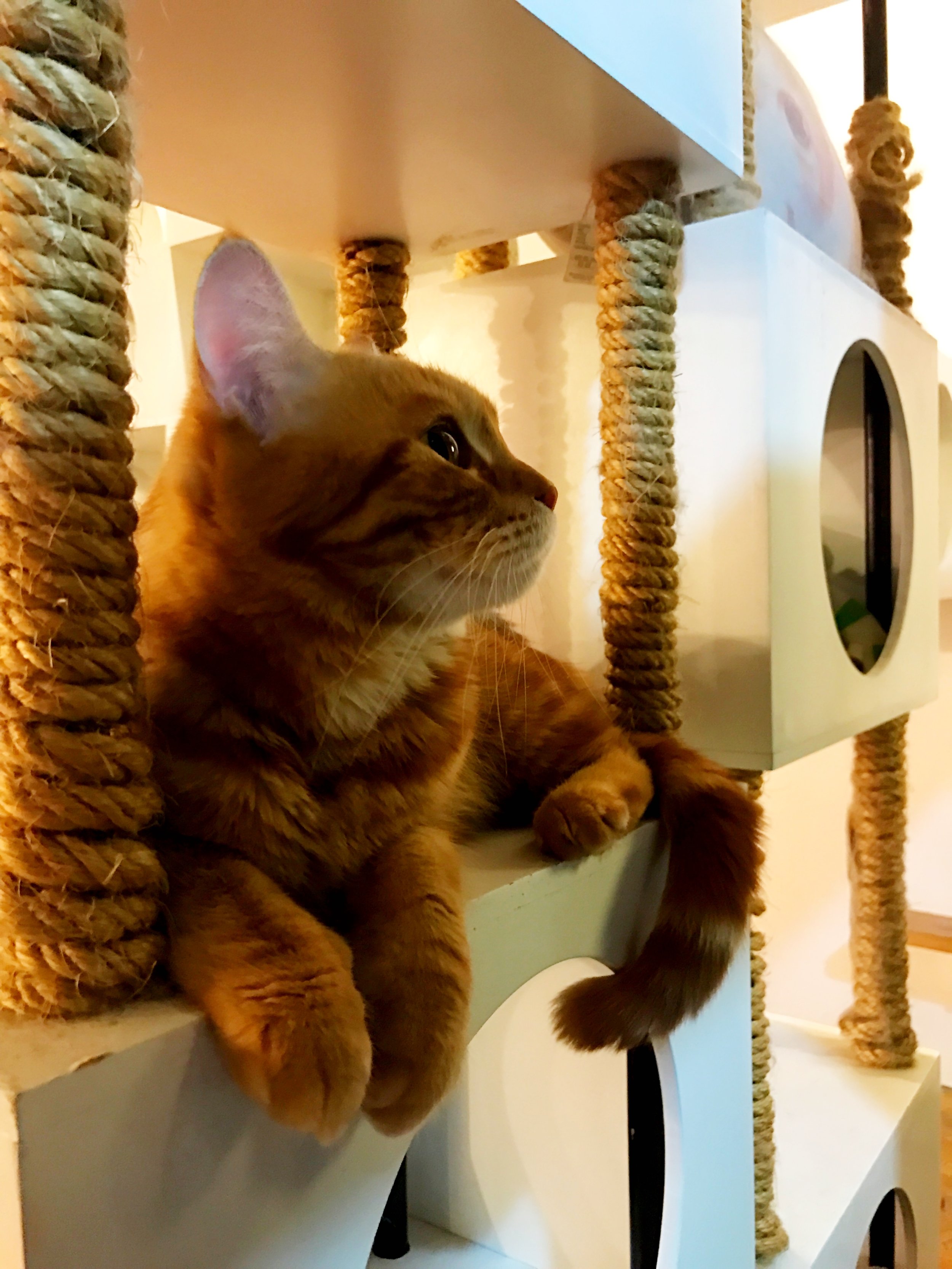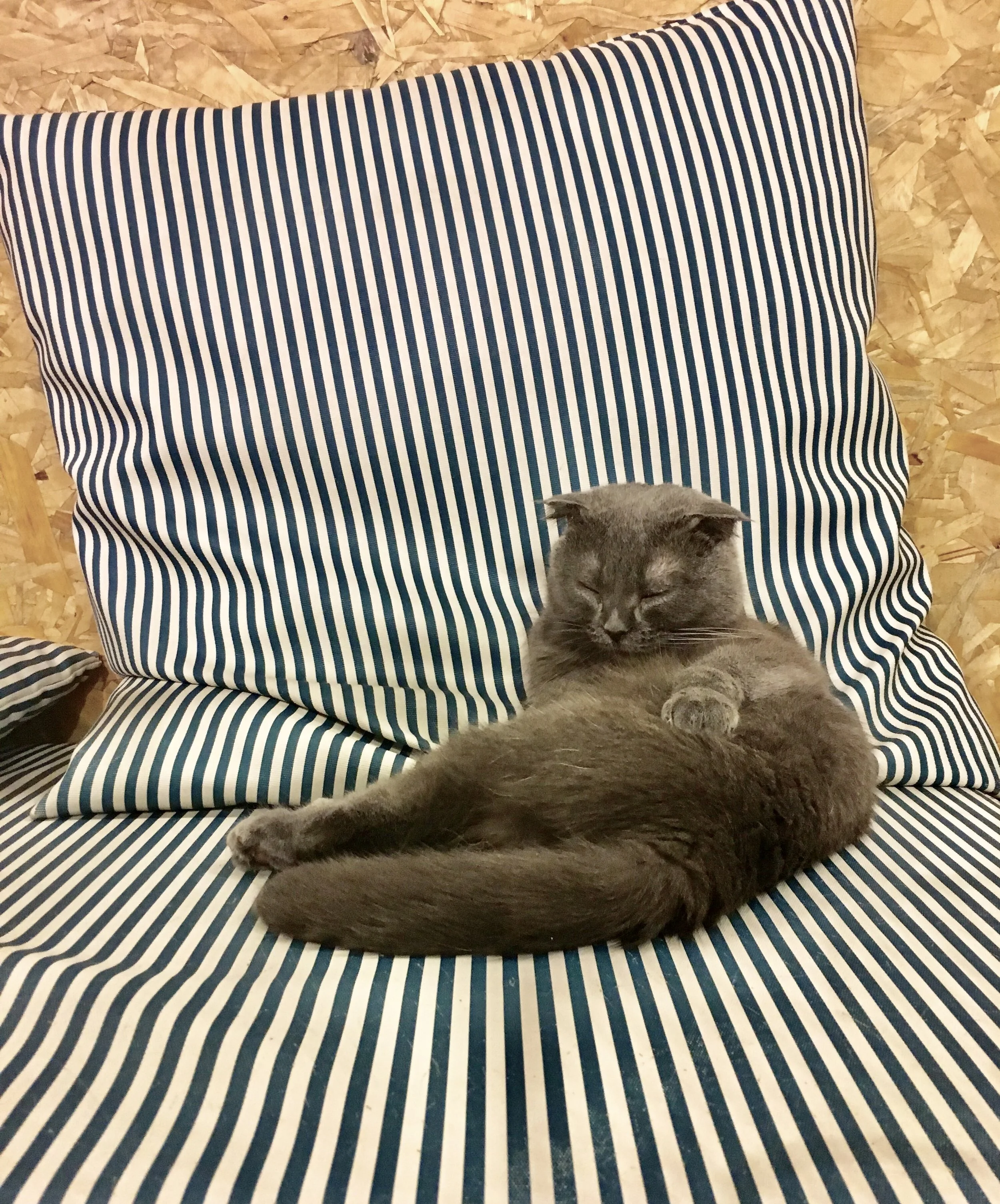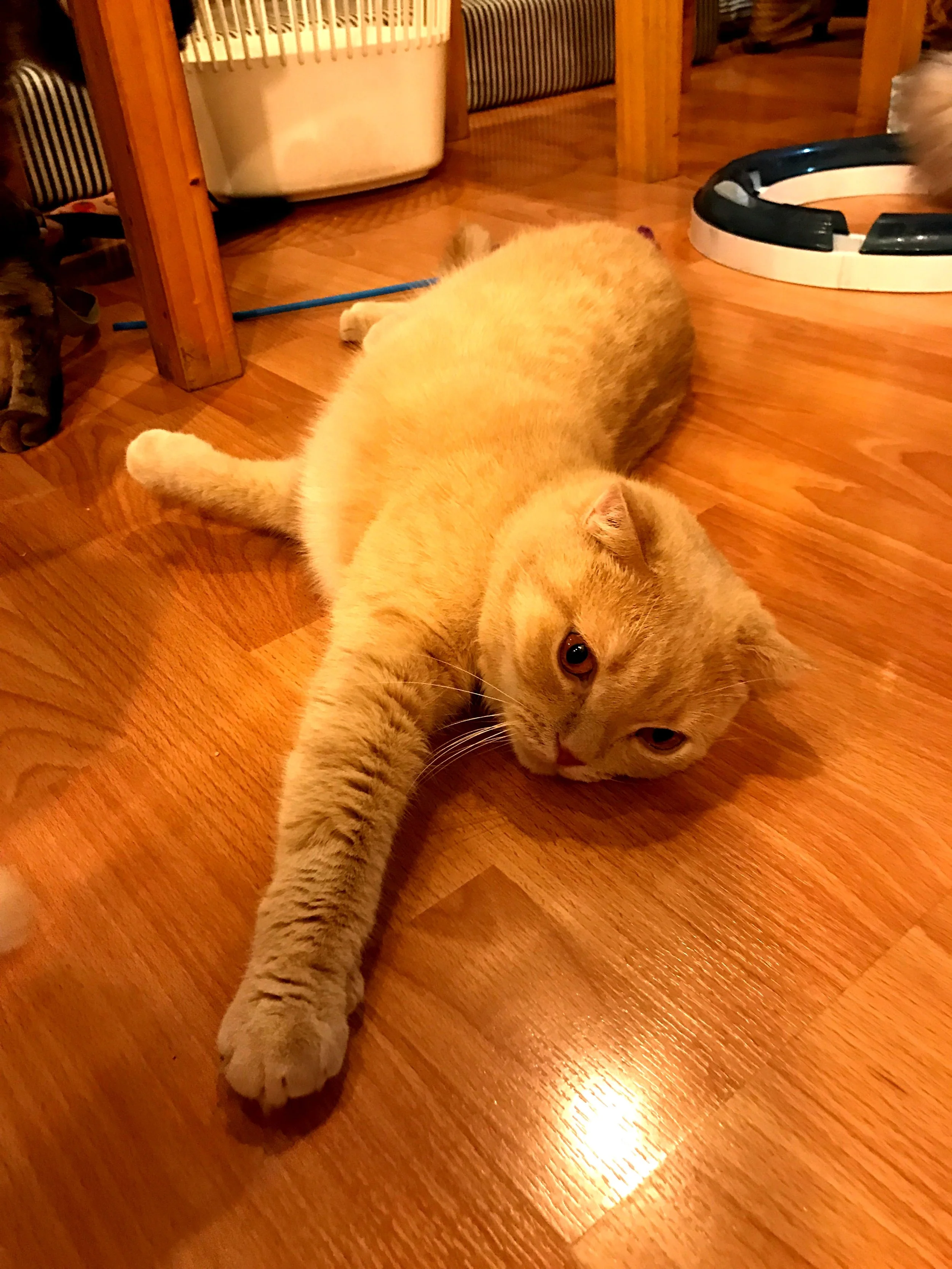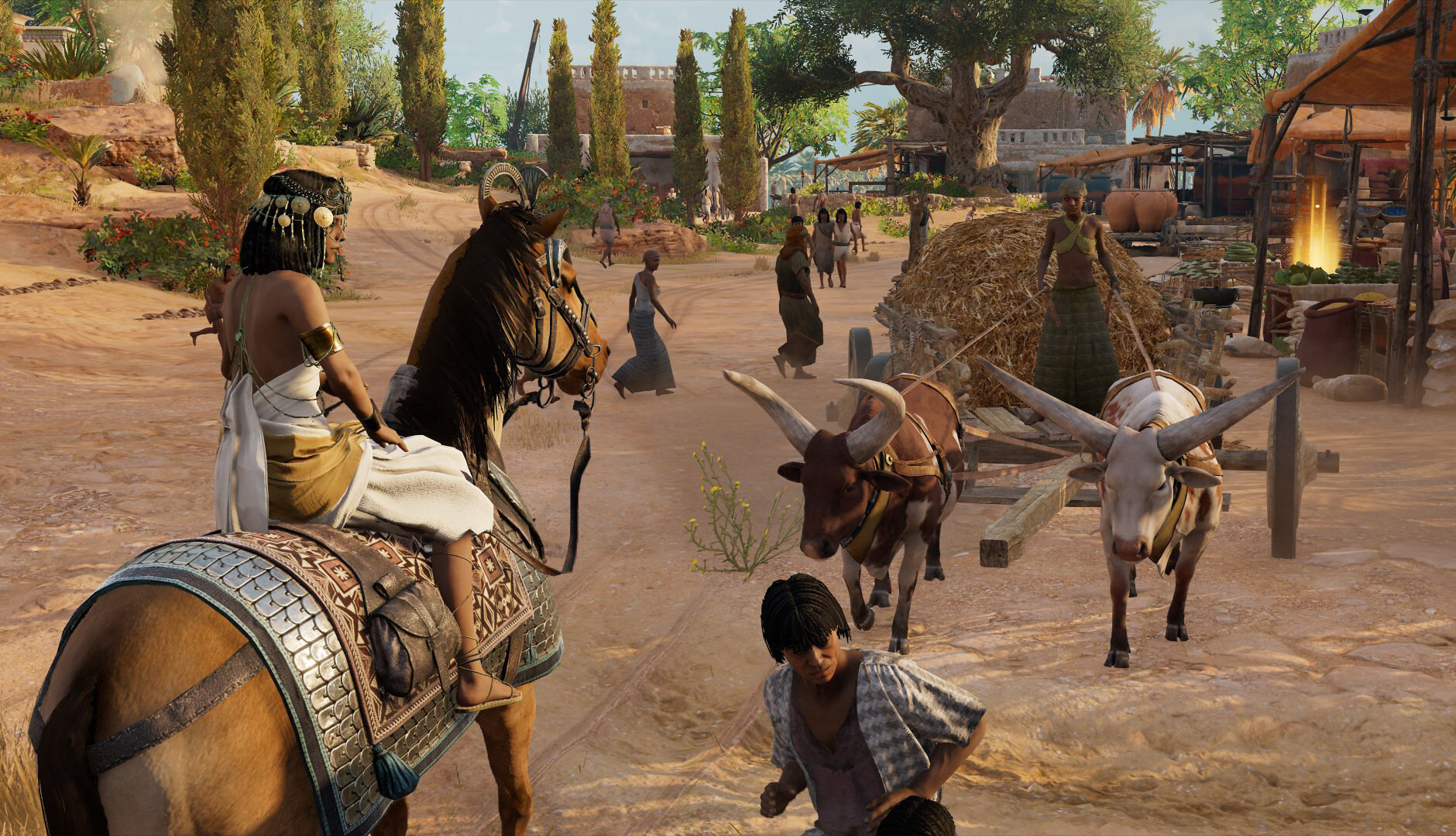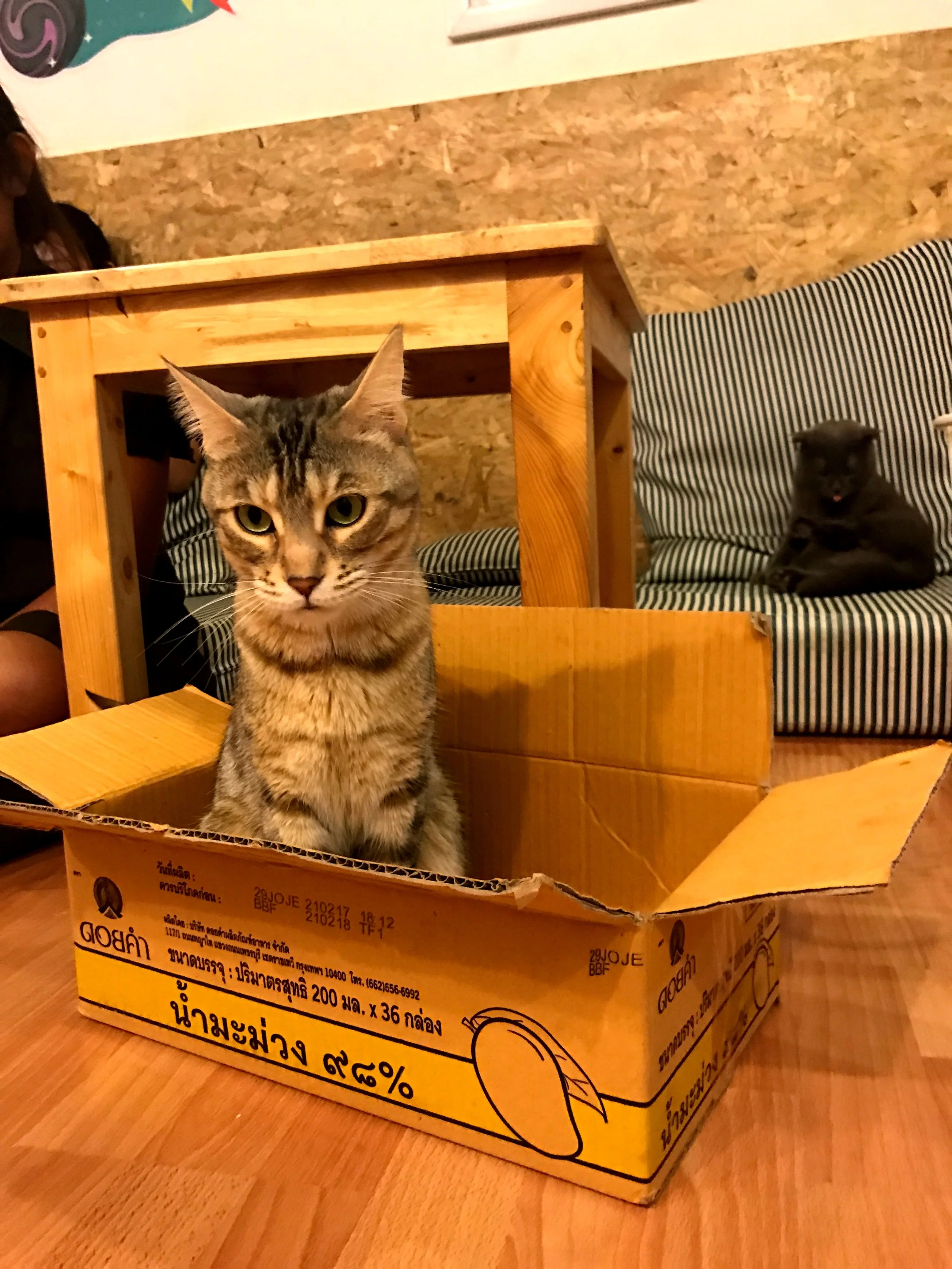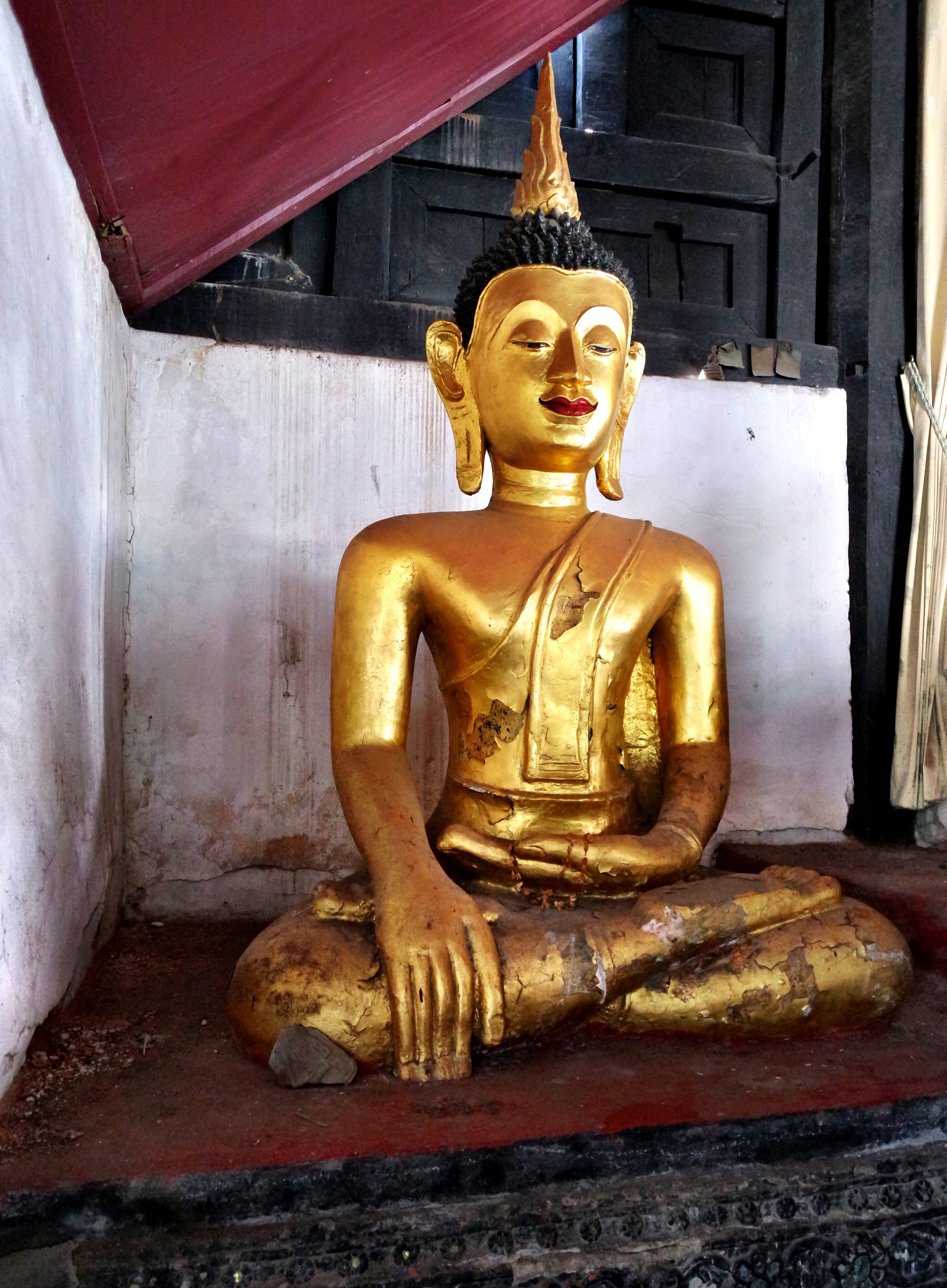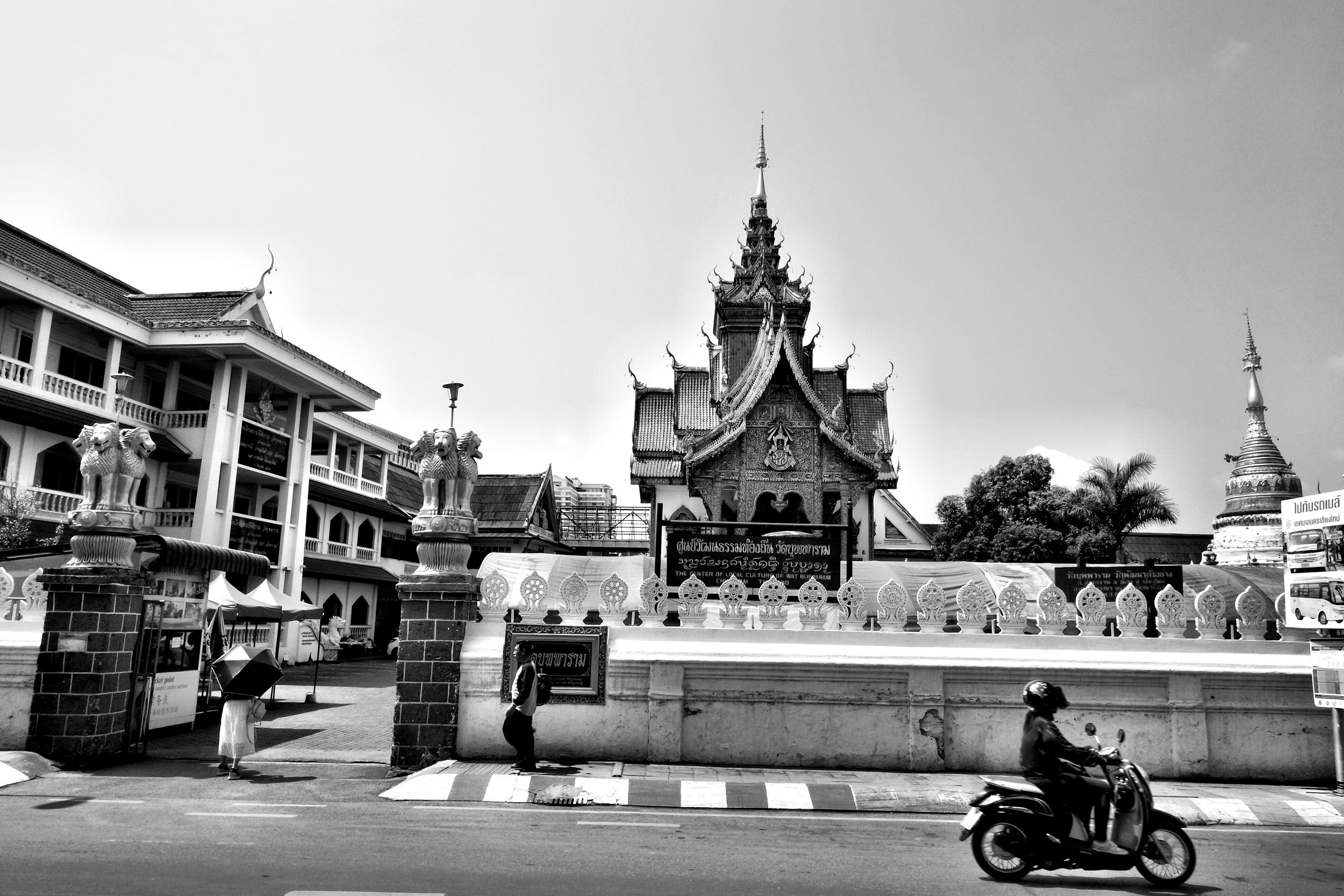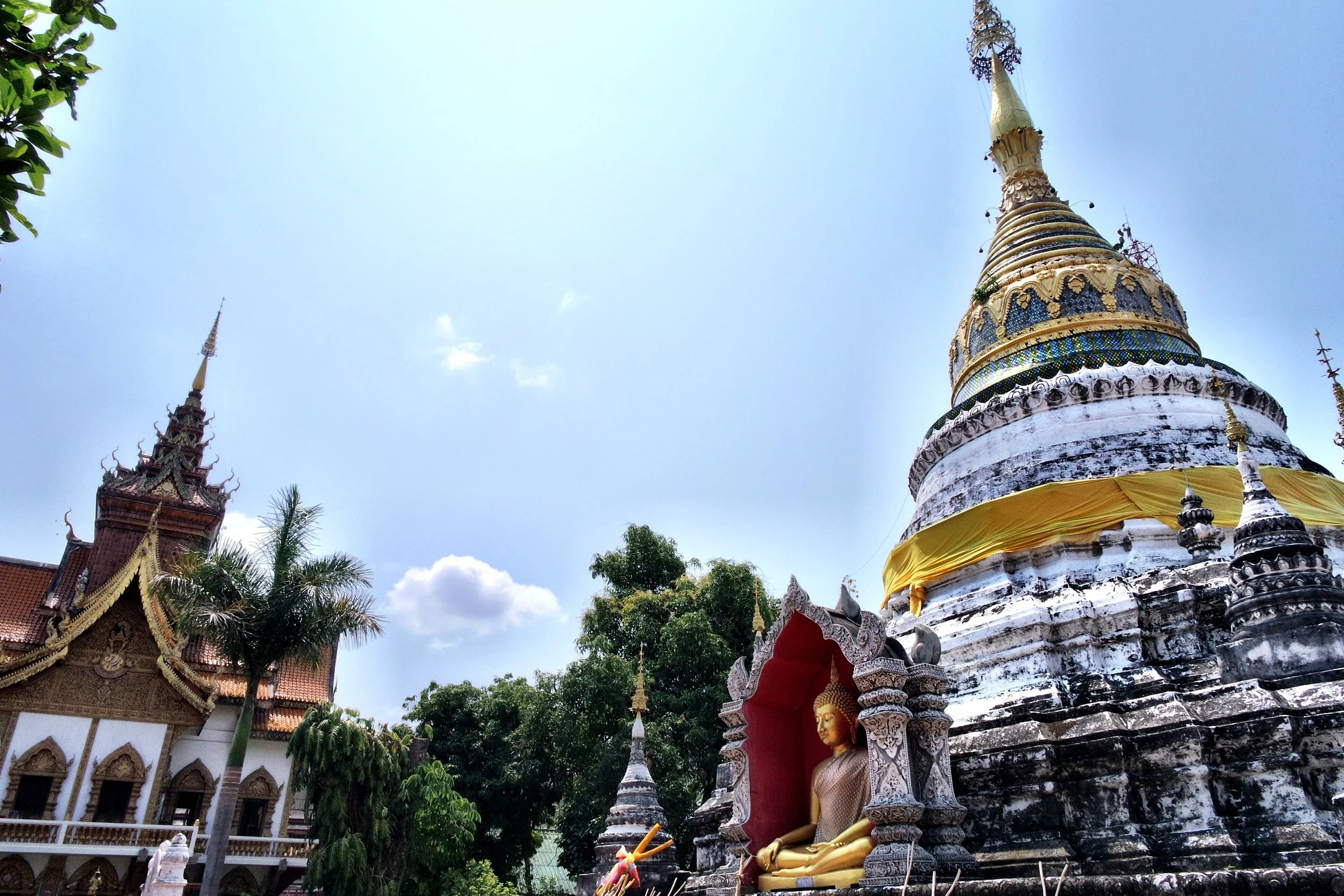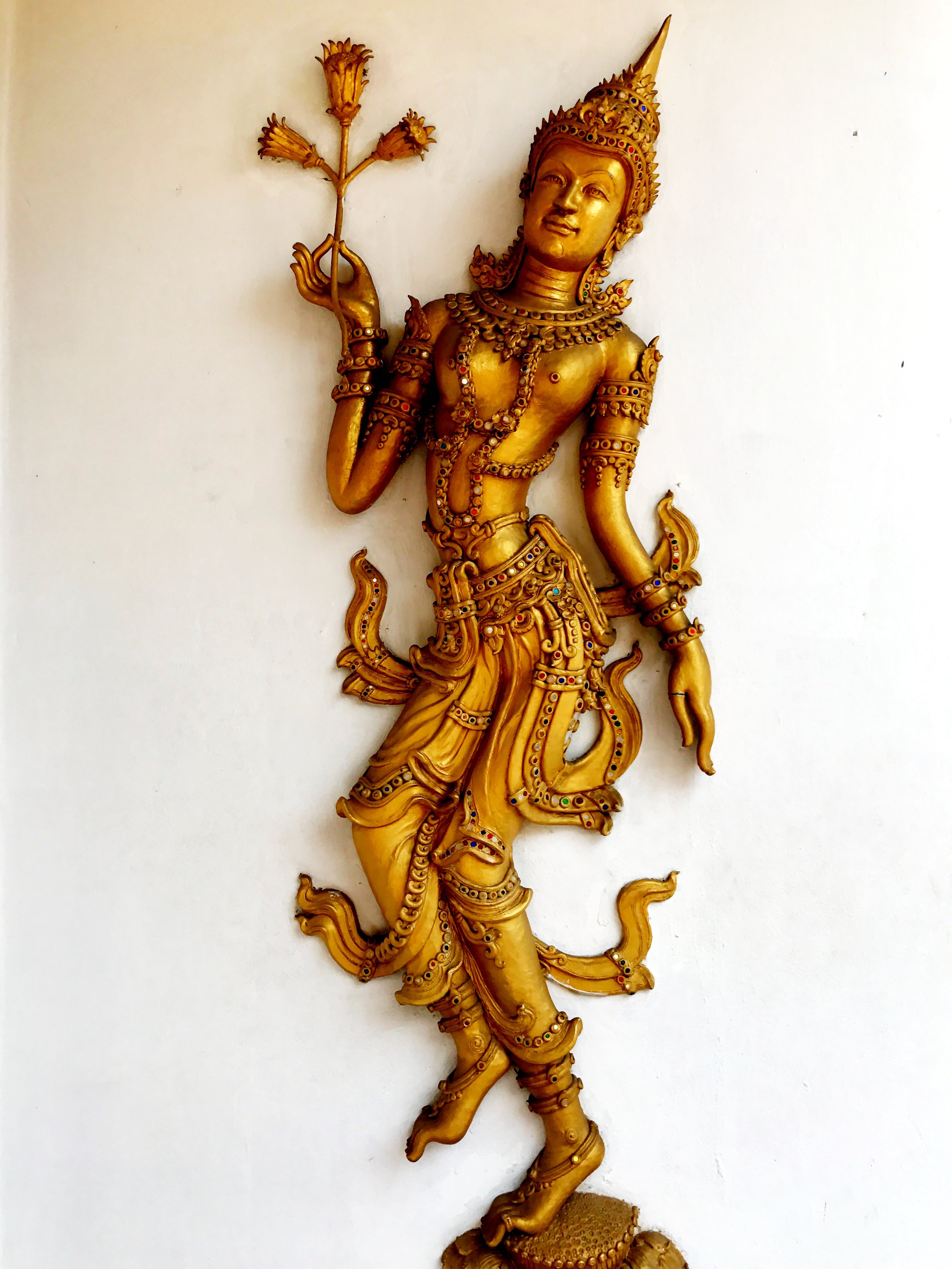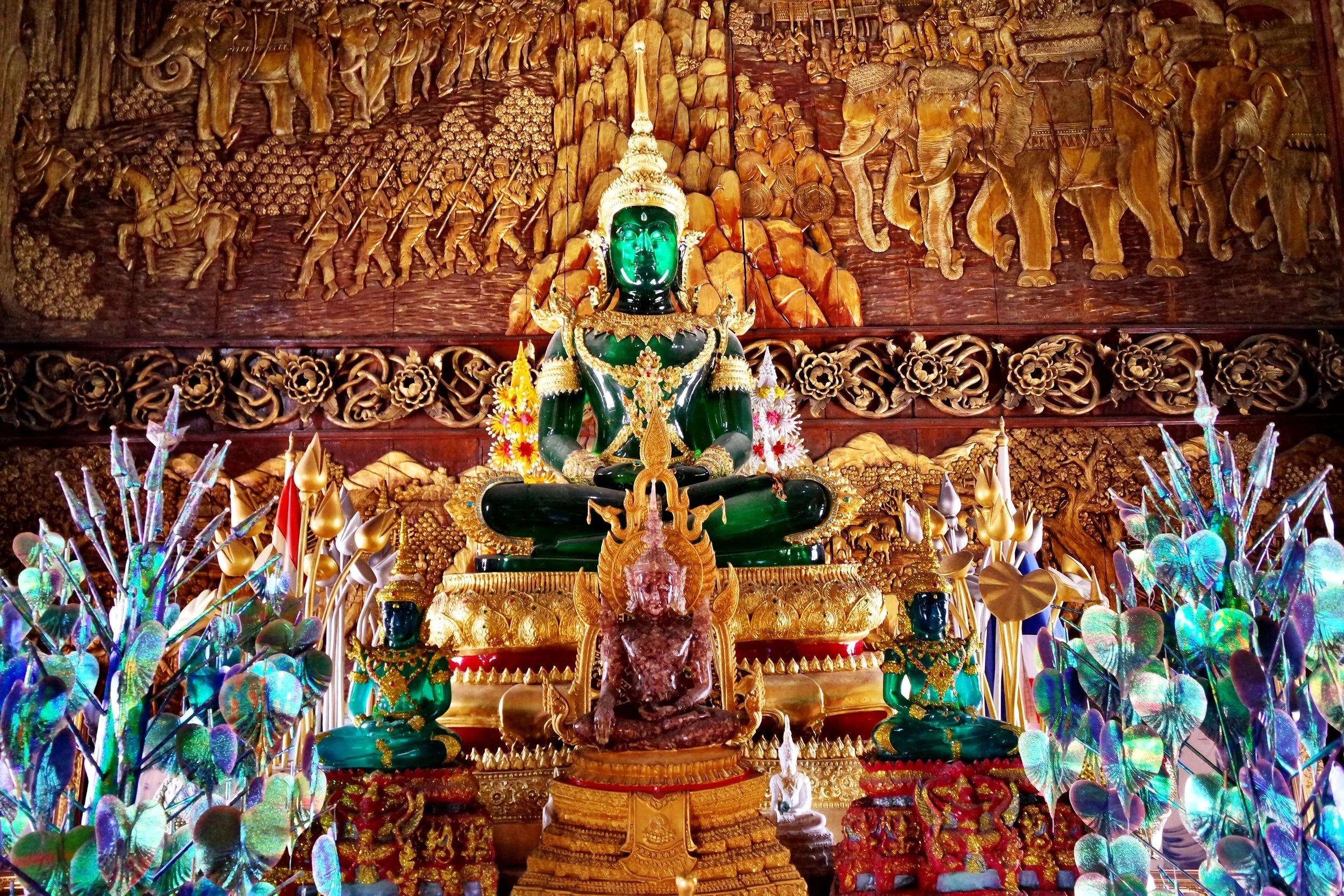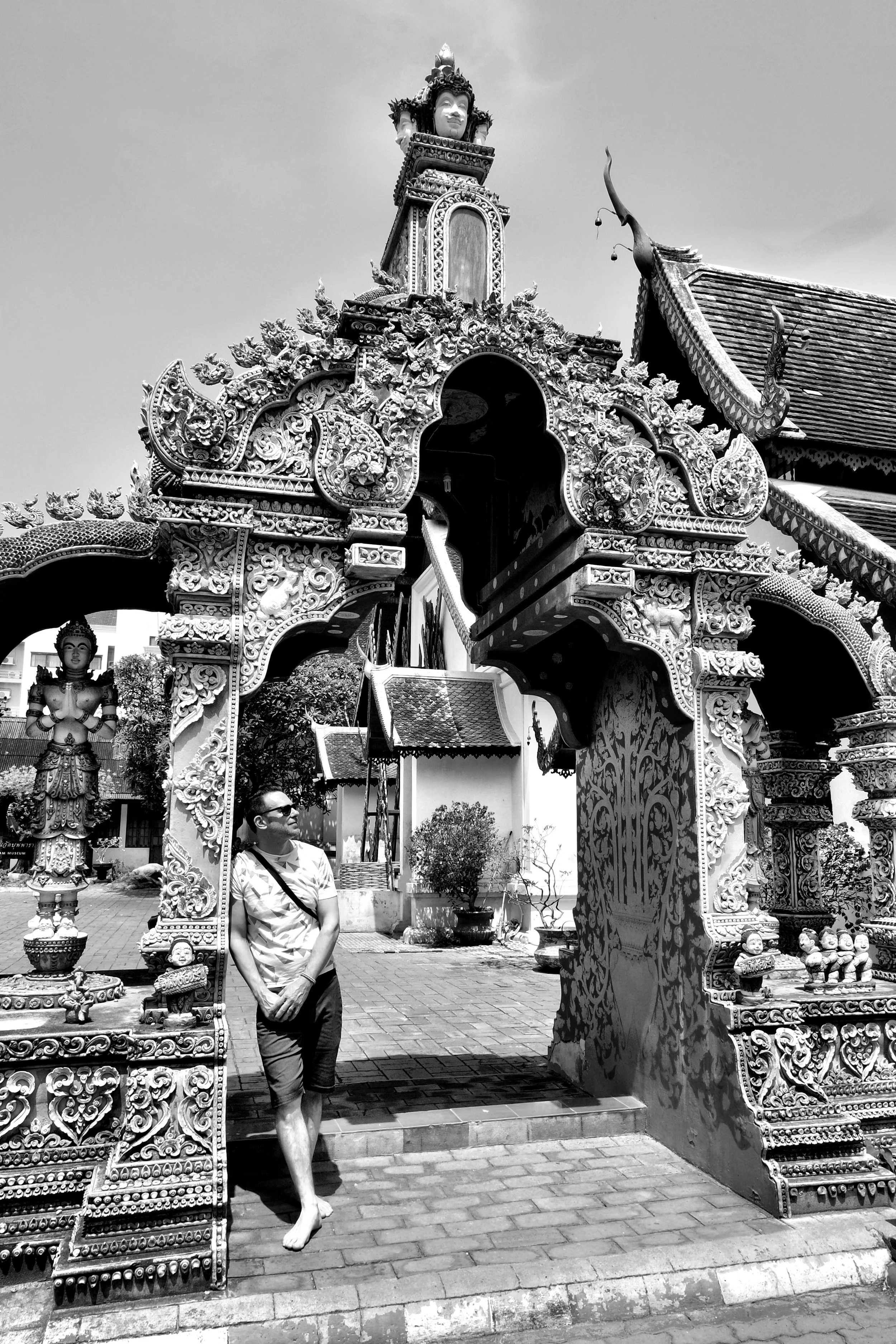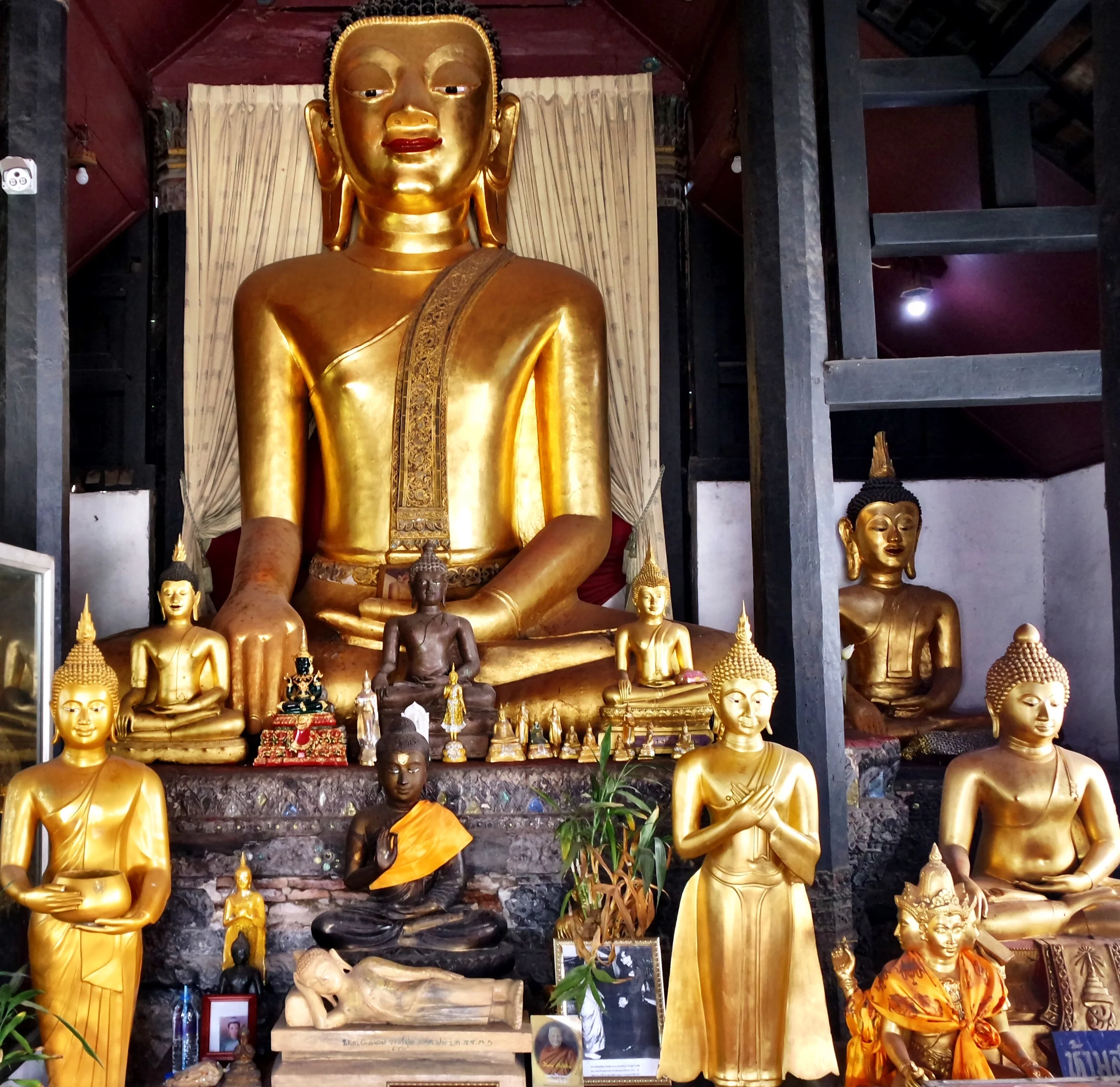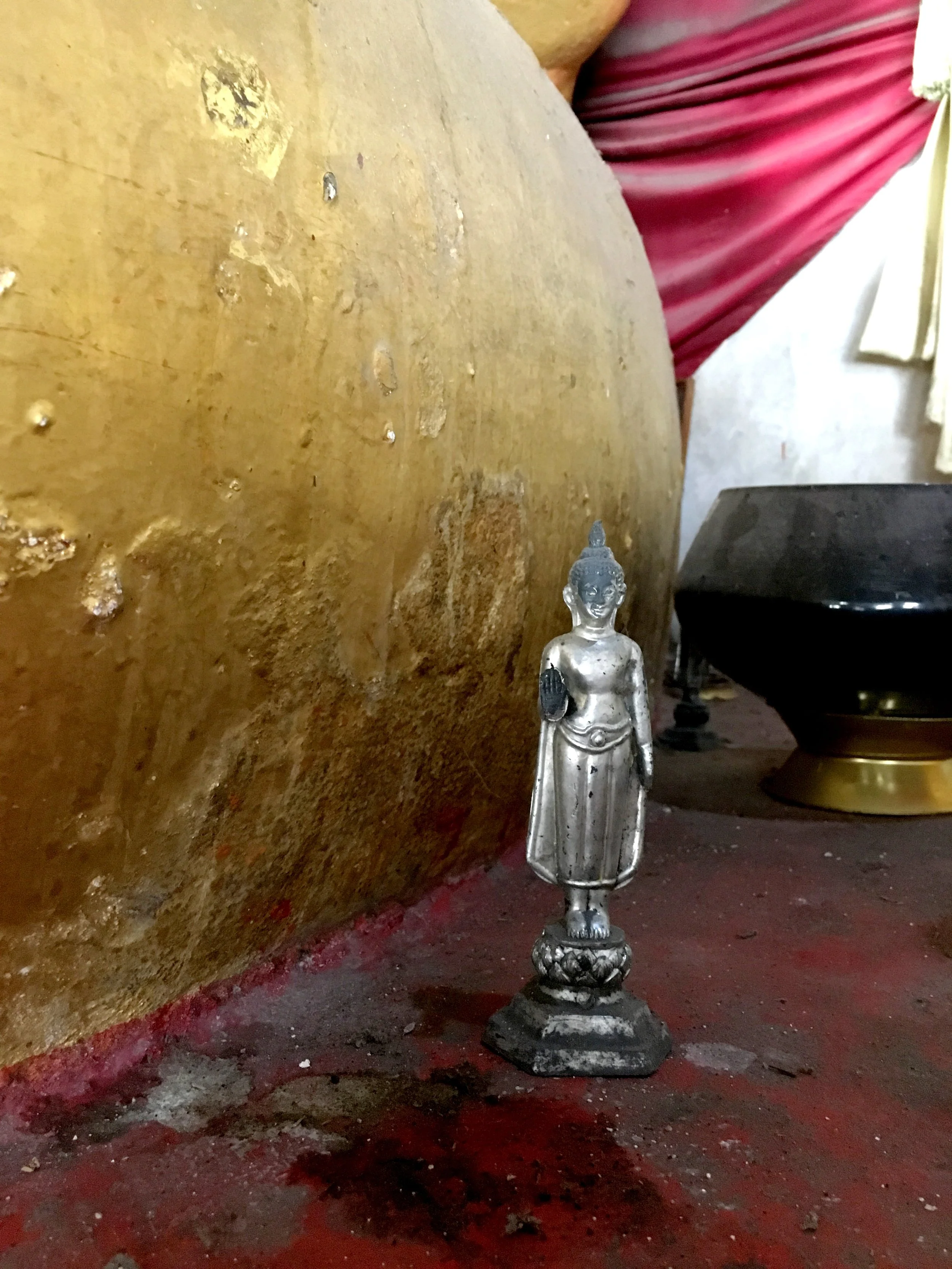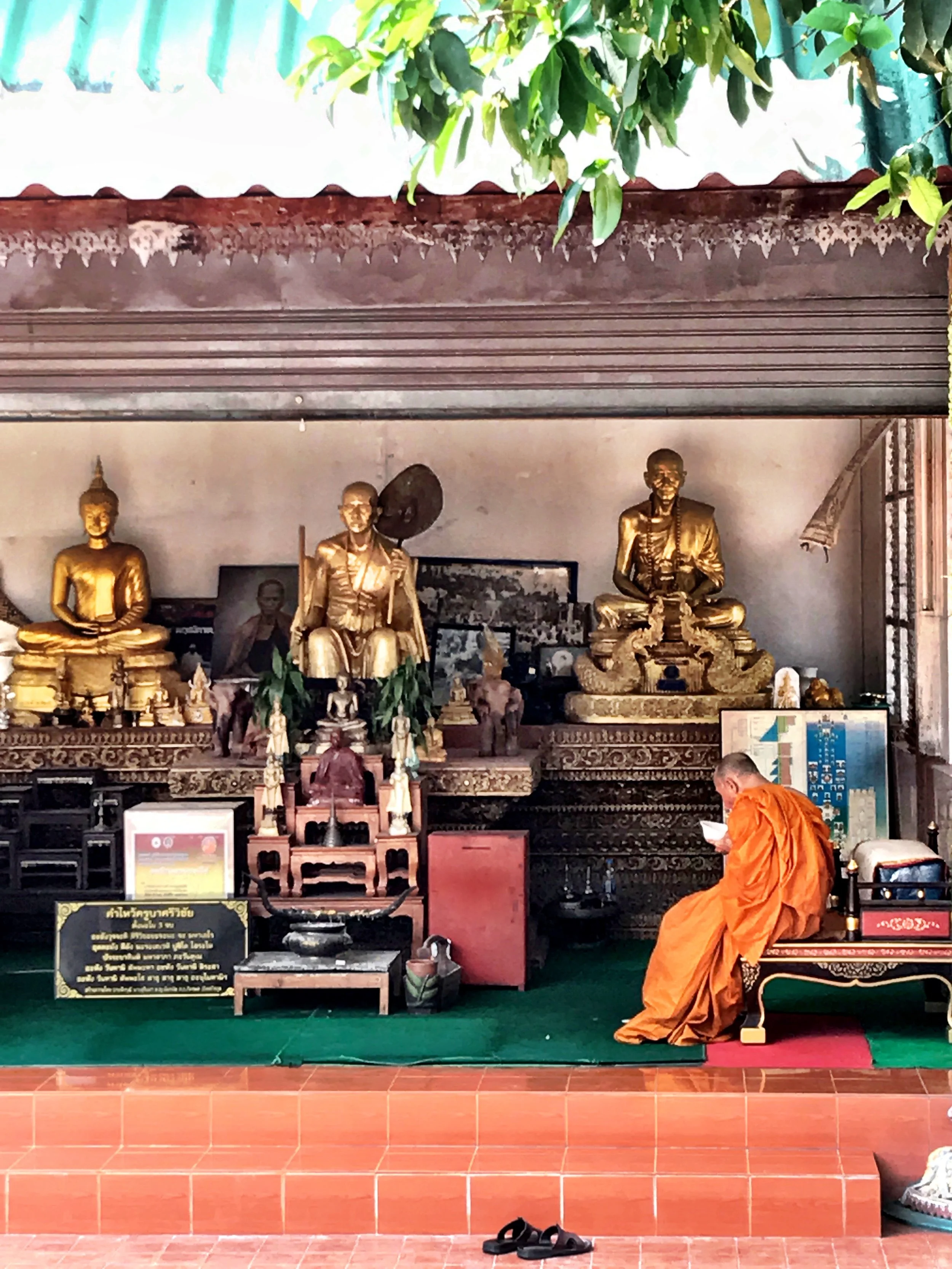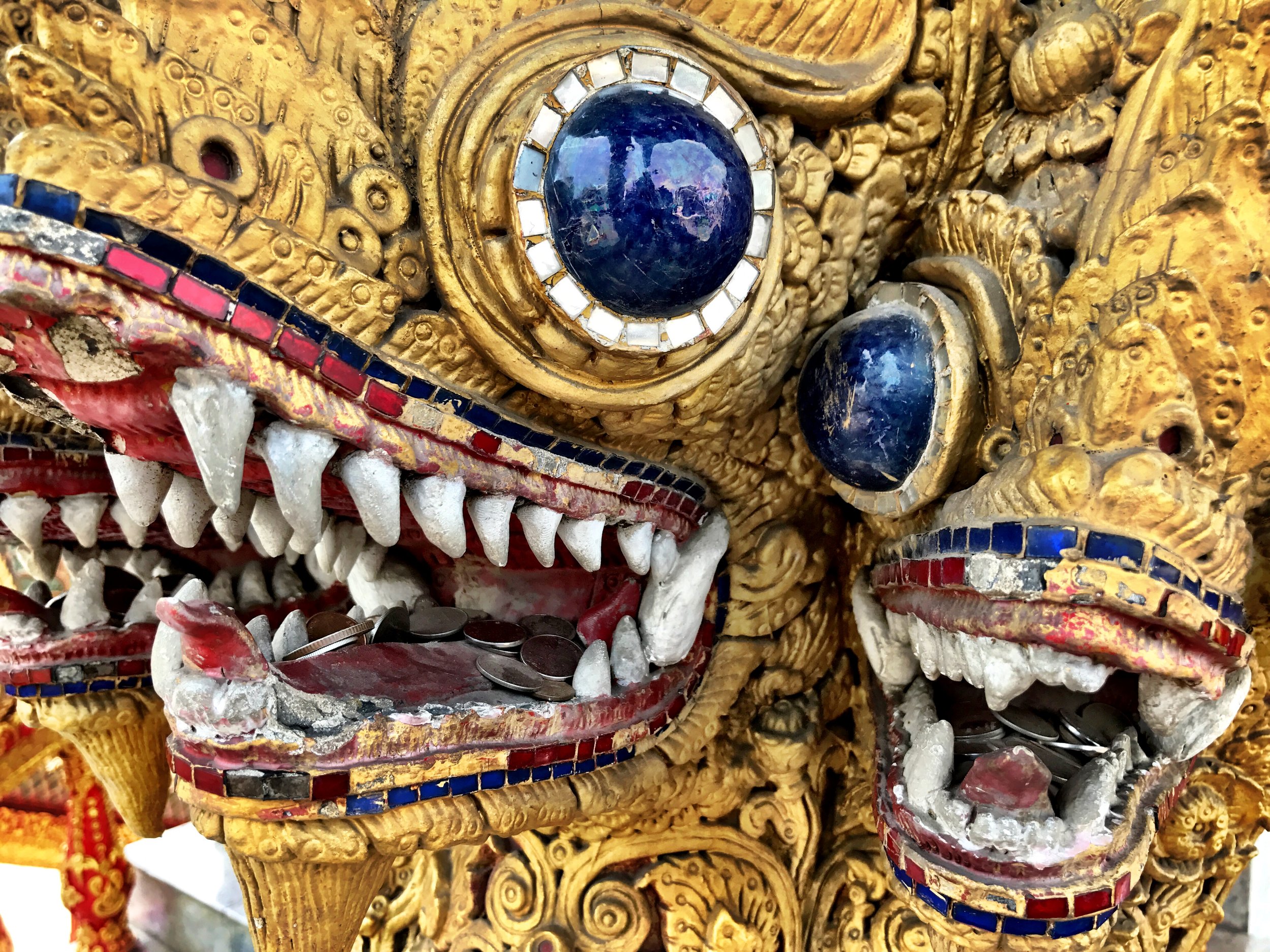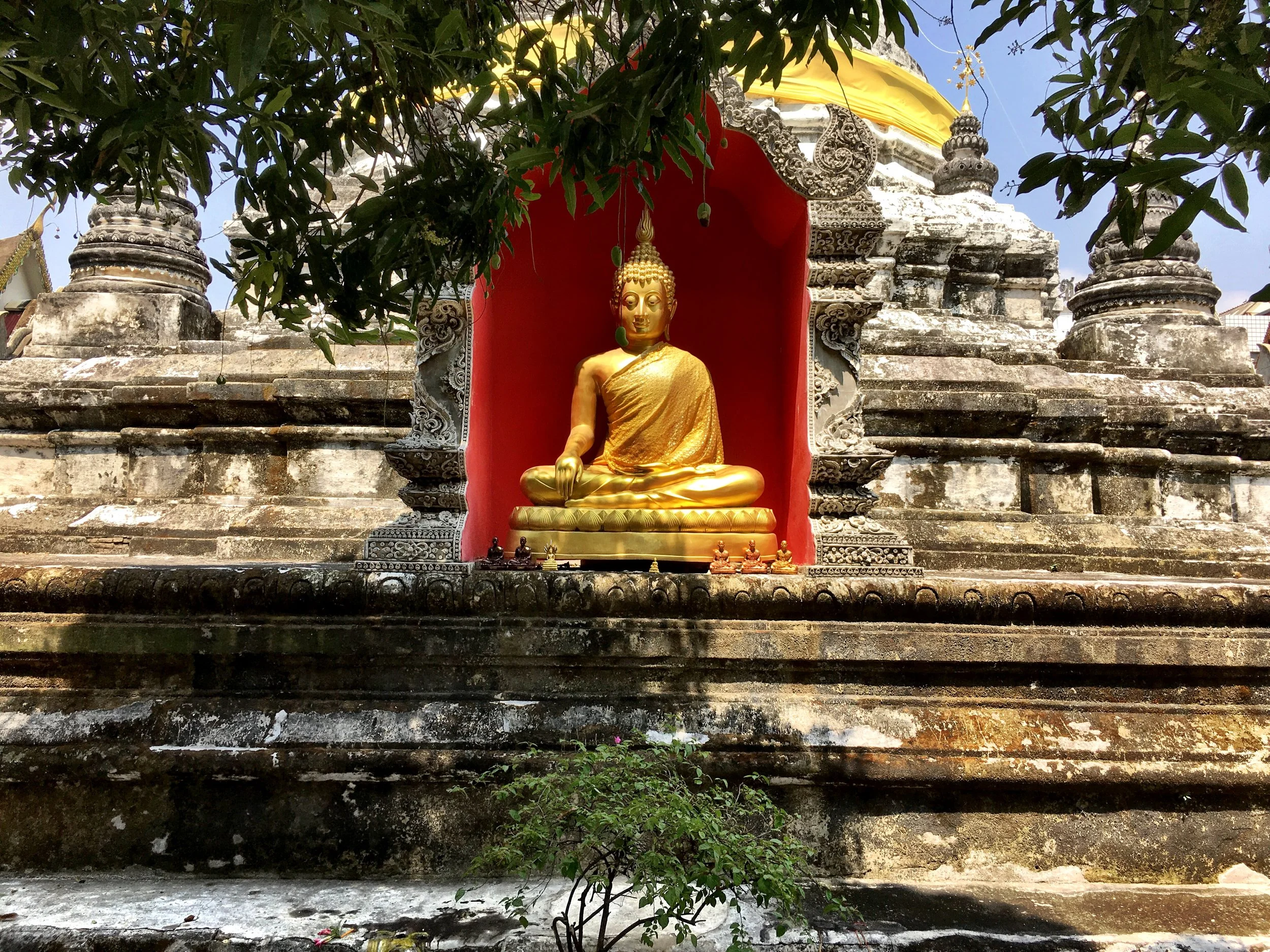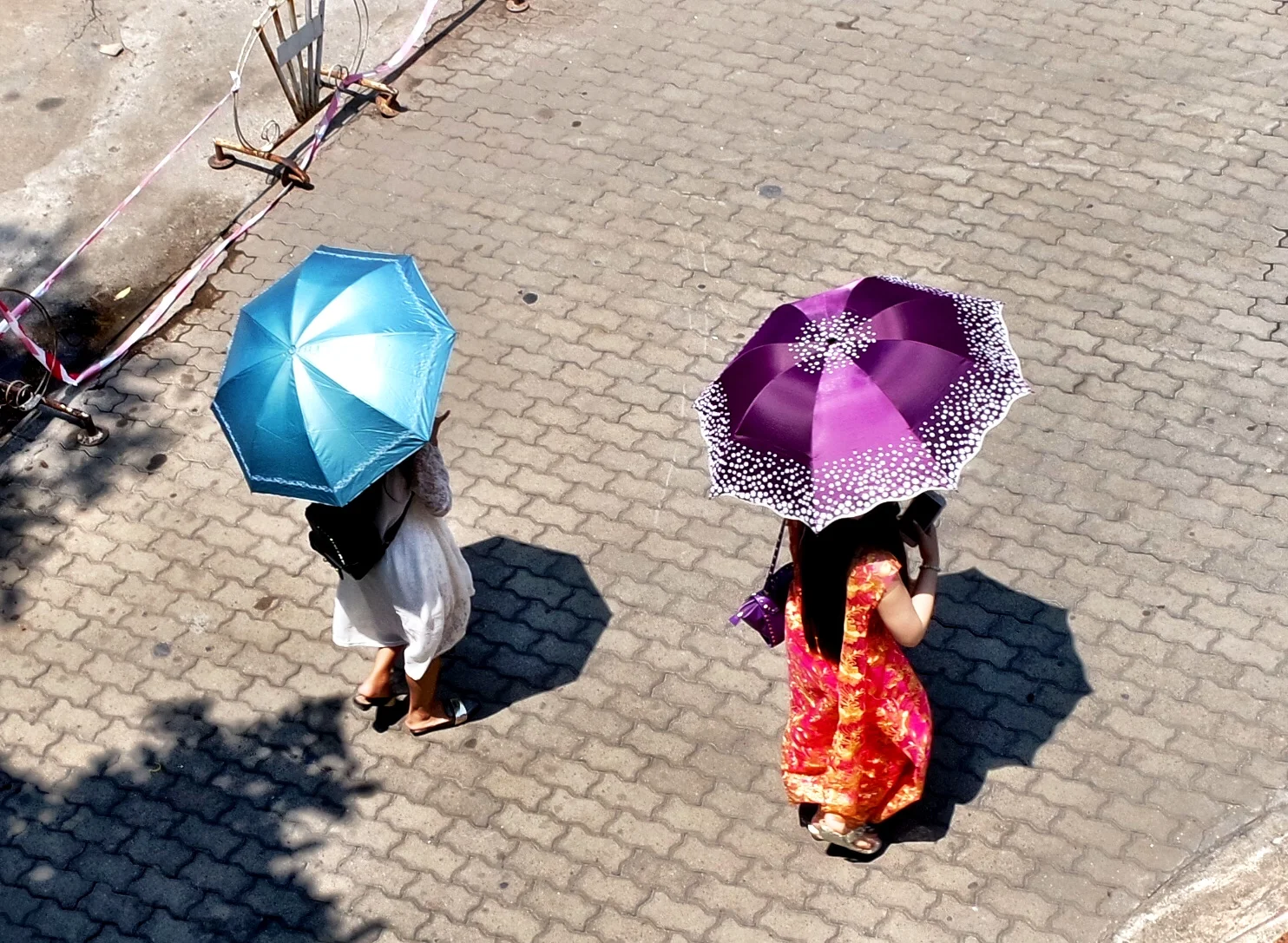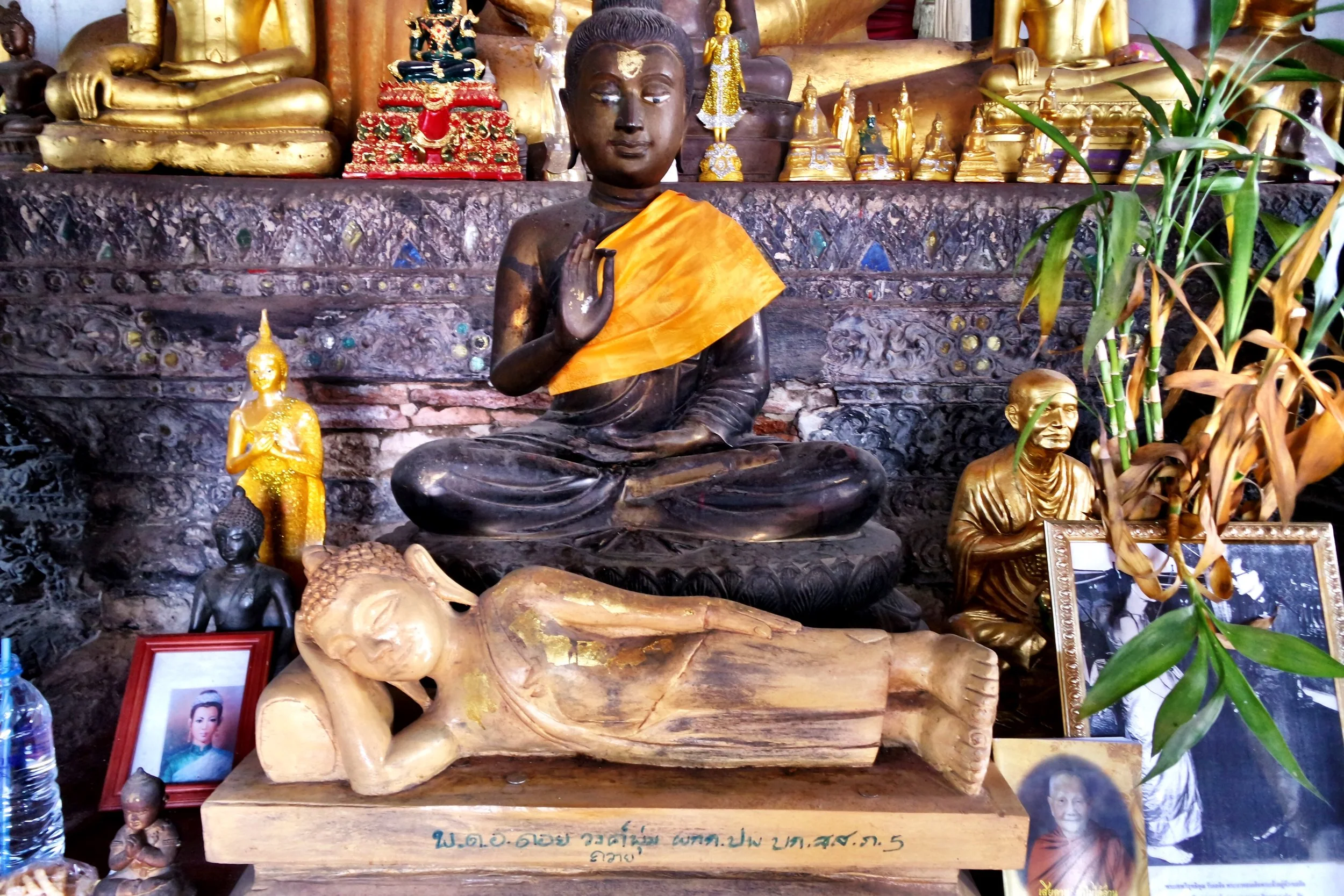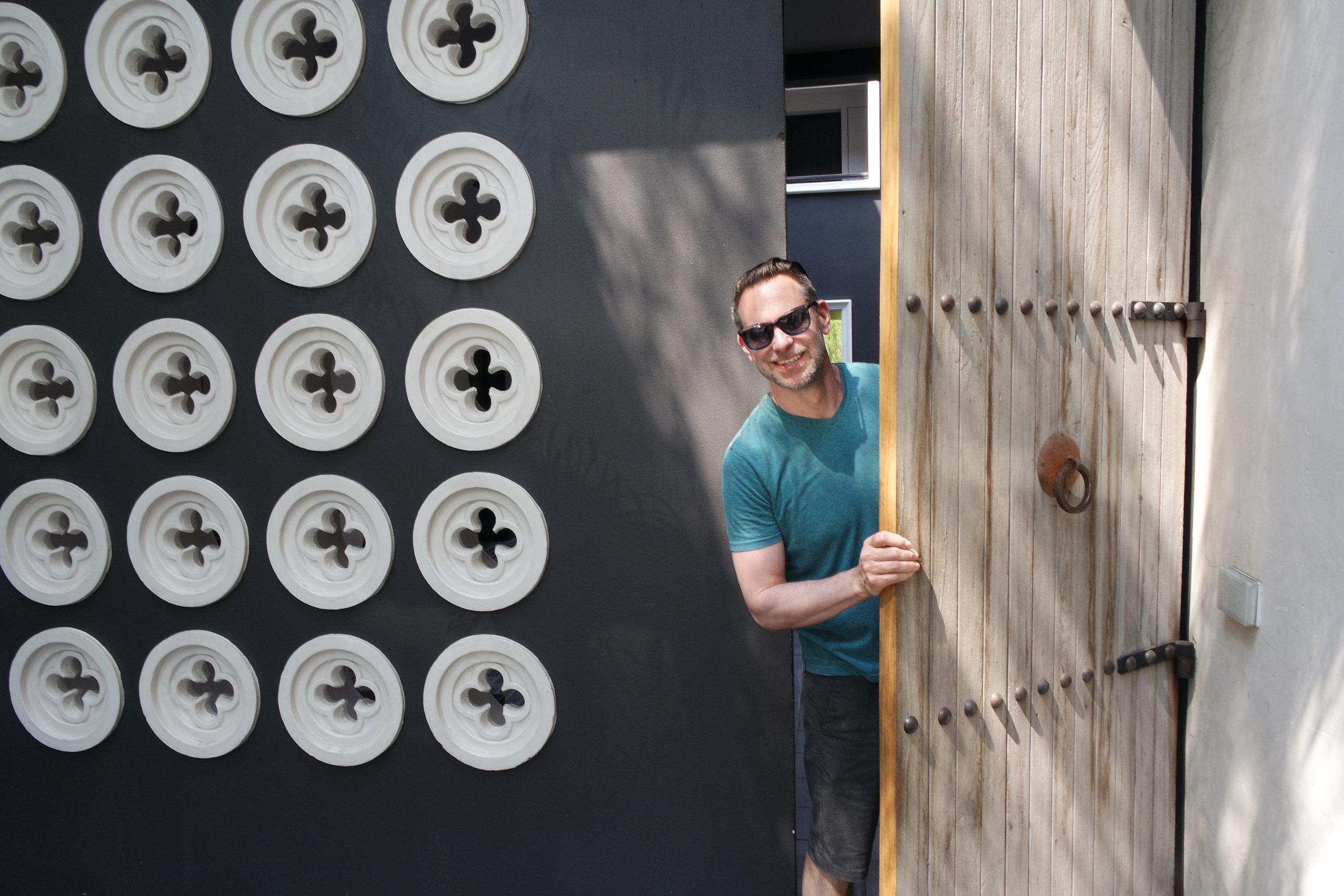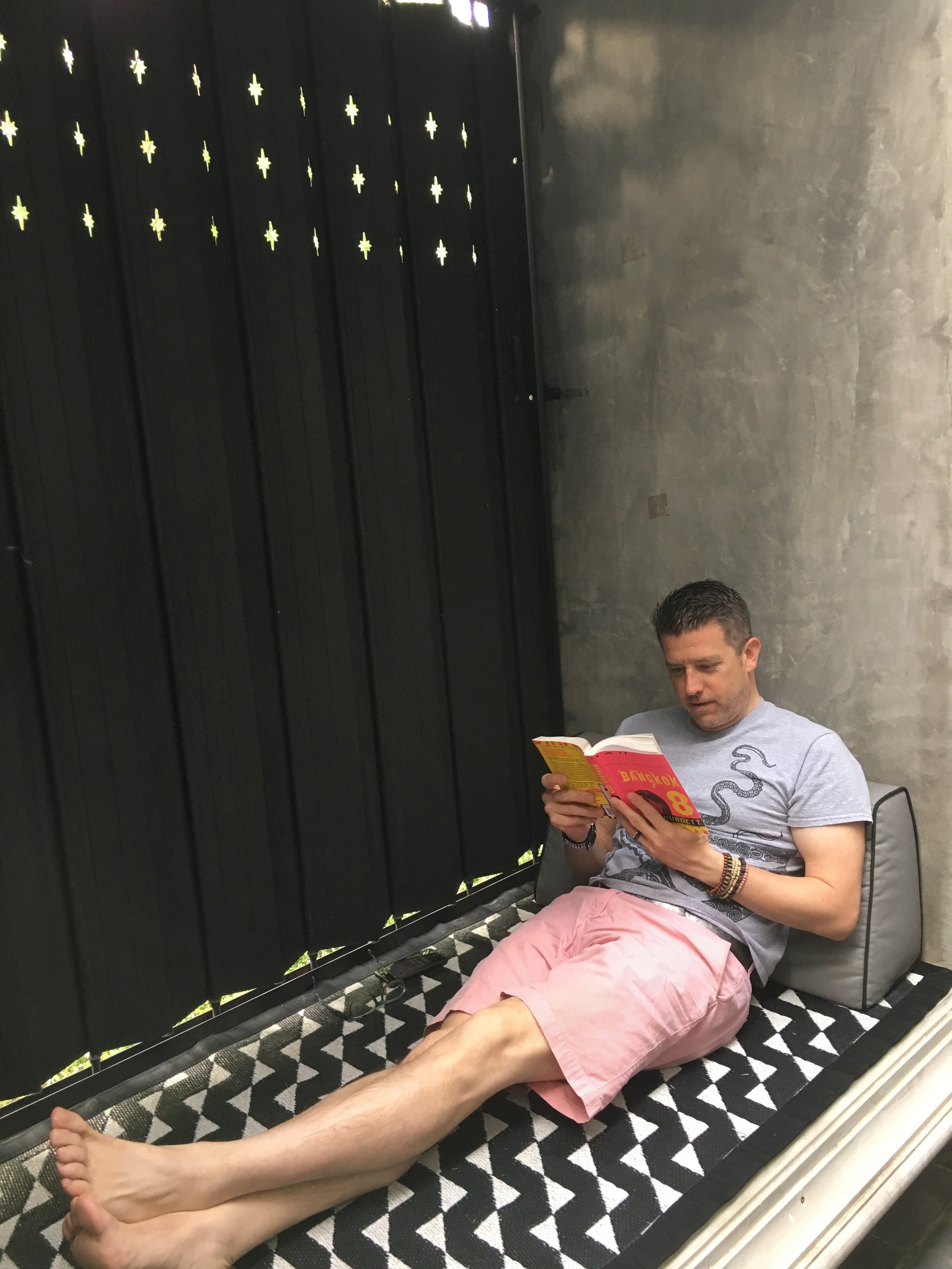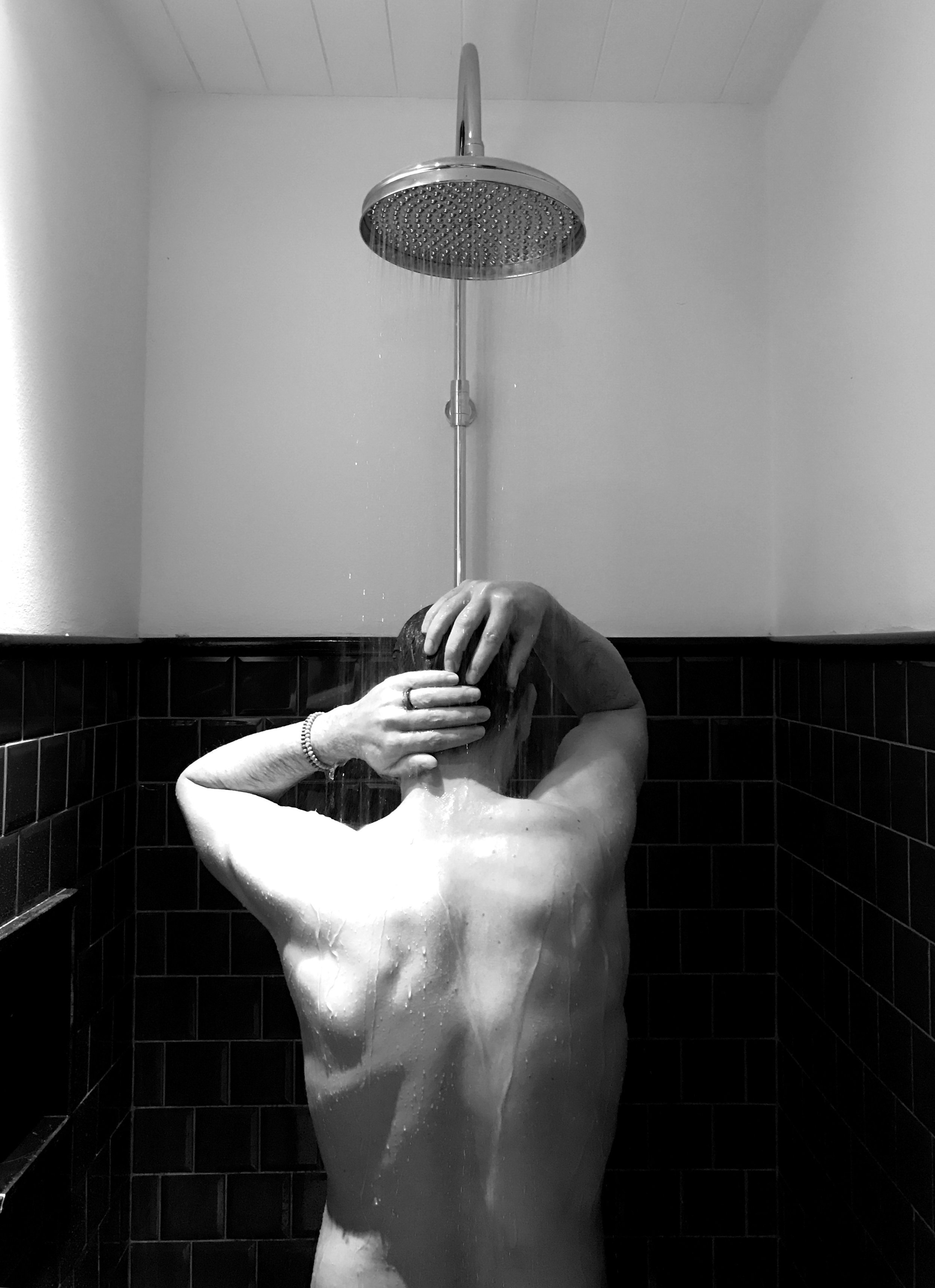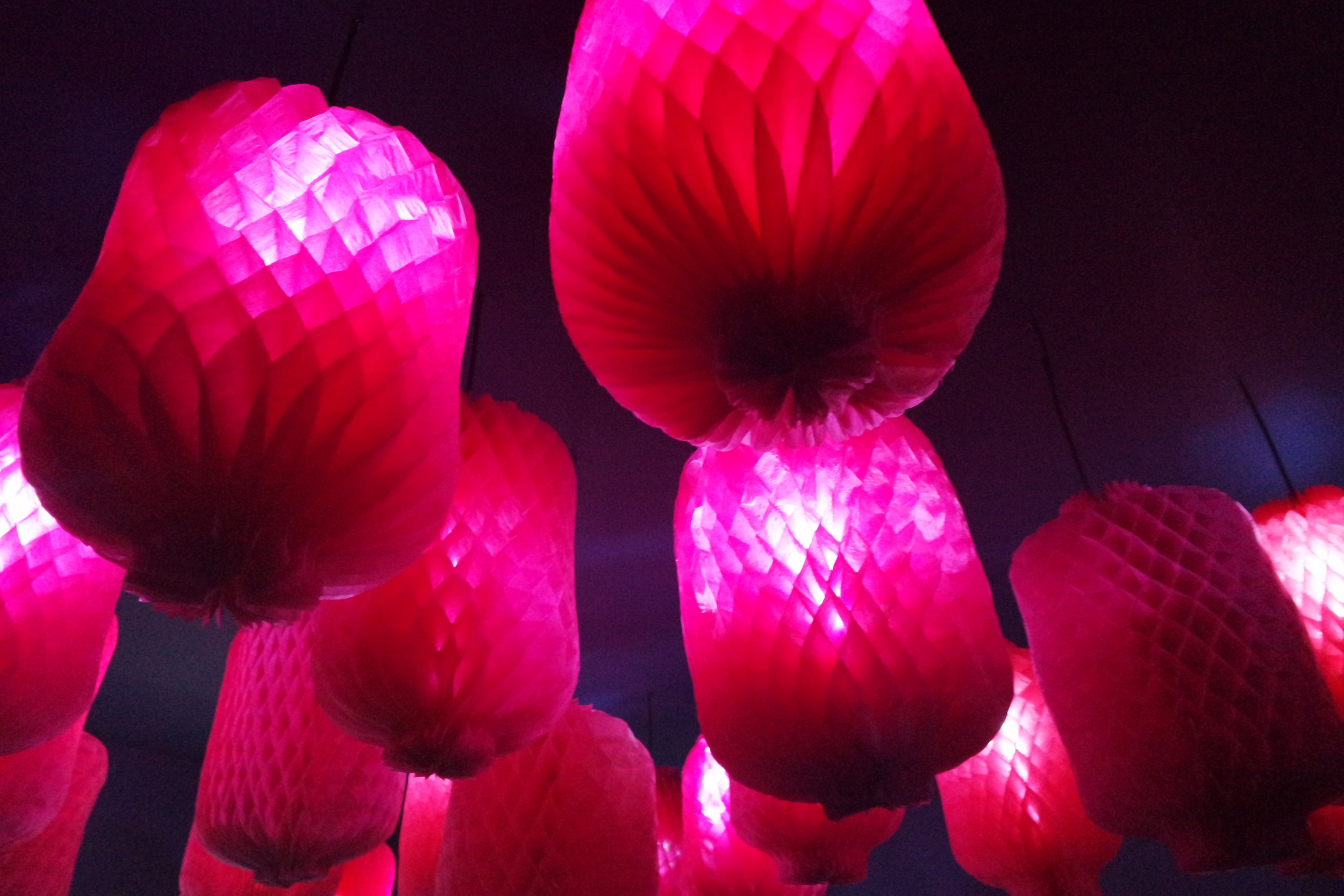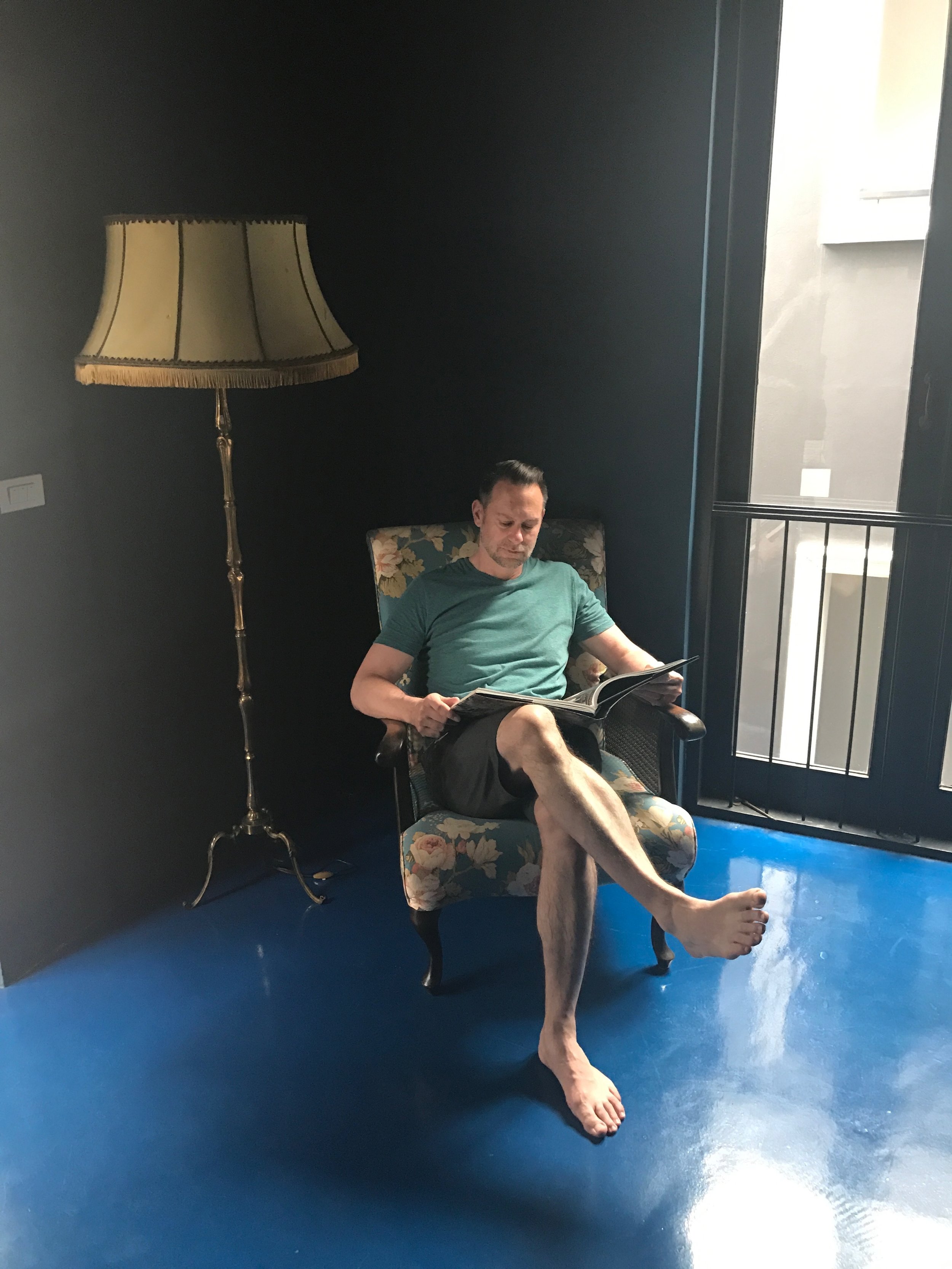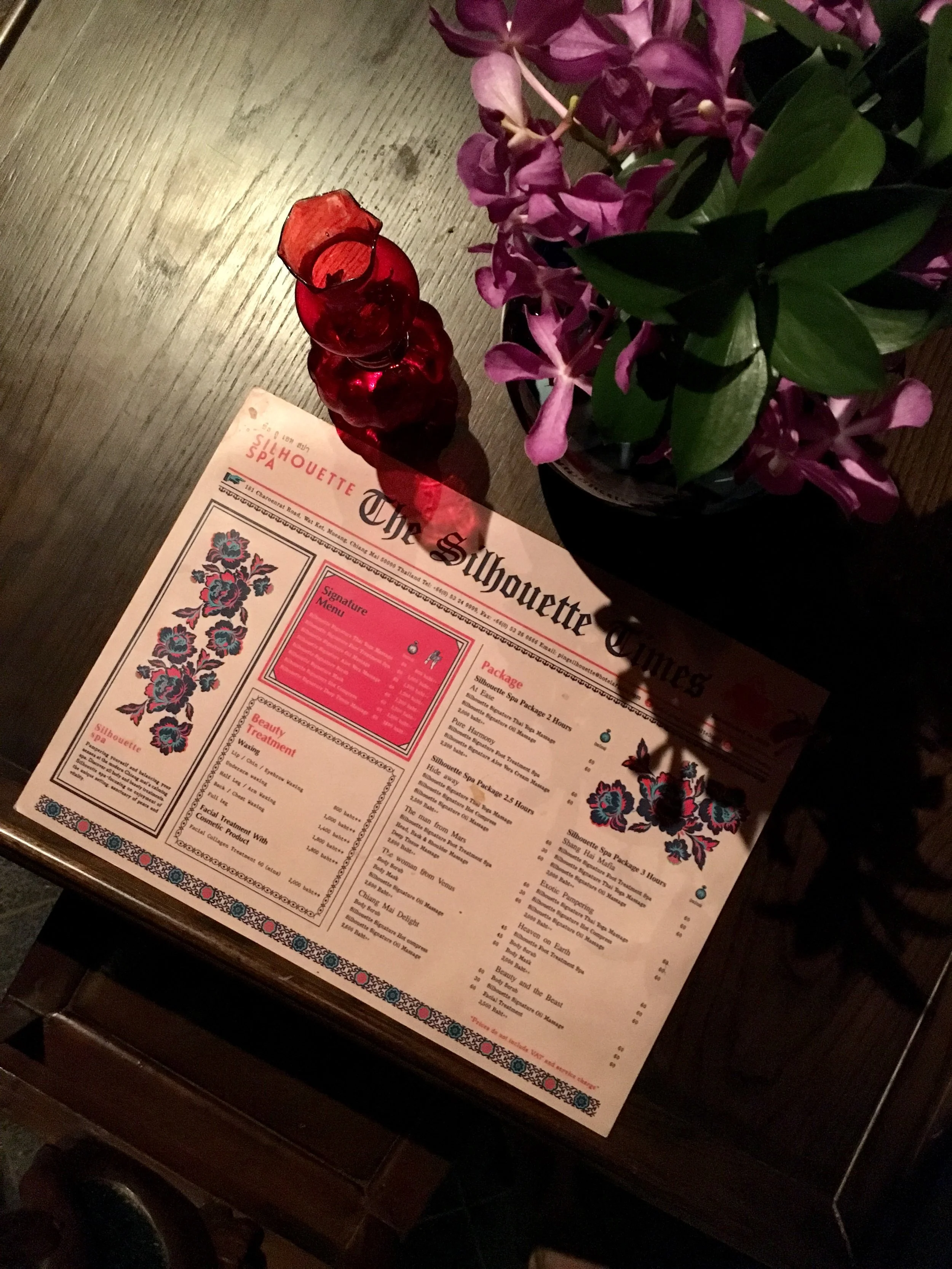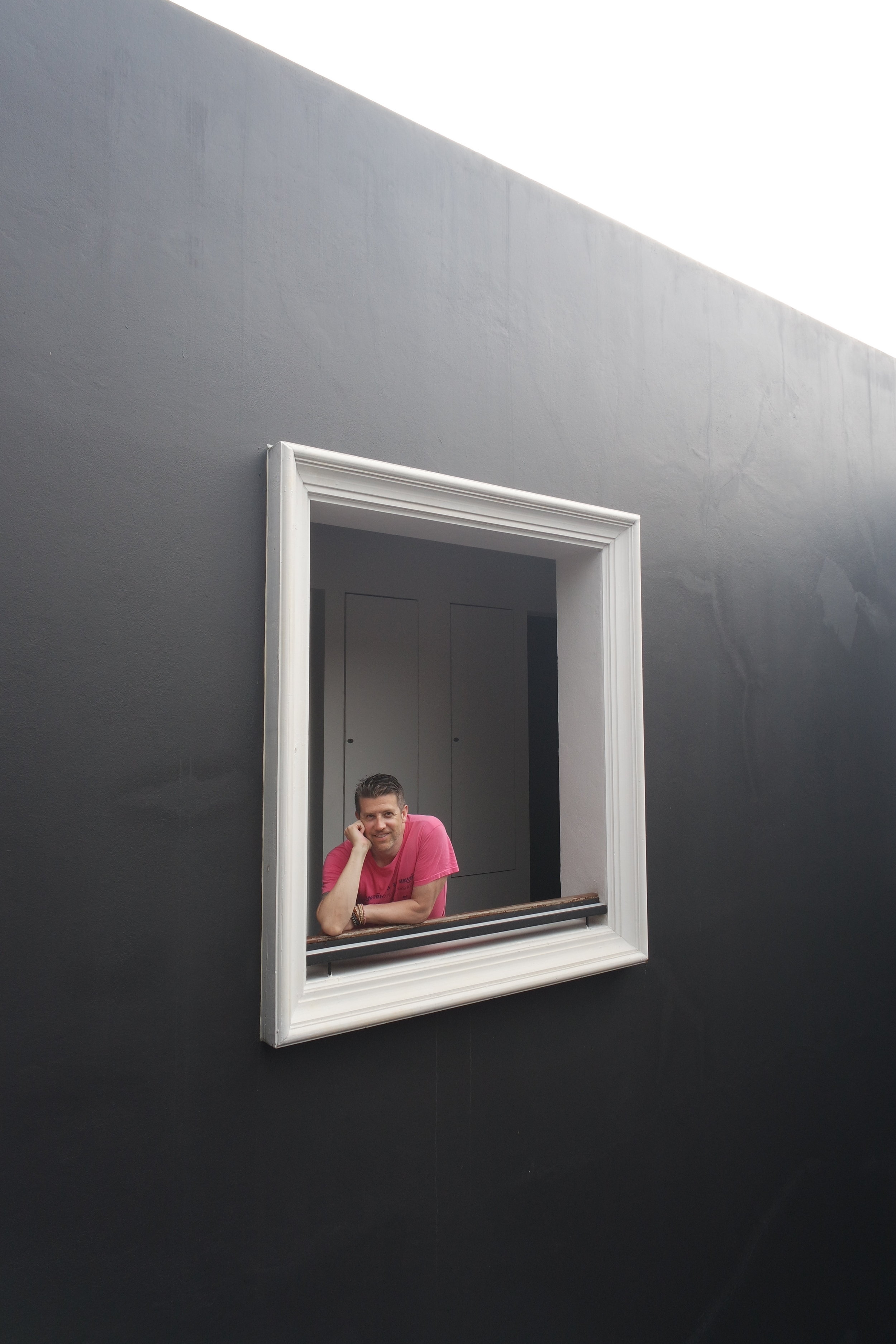Looking for things to do in Chiang Mai? Admire the impressive metalwork — though women aren’t welcome inside.
The pressed silver artistry of Wat Sri Suphan made it one of our favorite temples to explore in Chiang Mai
It’s no surprise that Wally and I are a couple of magpies, drawn to the embellished and vibrant artistry of Thai temples. The province has a mind-boggling amount of temples and you’ll never hear either of us admit that we’re suffering from temple fatigue. Each structure has its own fantastical narrative, with artistic details dependent upon the date of its construction and in the case of Wat Sri Suphan, its reinvention.
A cool water motif surrounds the temple. Duke tries to reach enlightenment like the Buddha — without a naga umbrella
Located amongst the narrow winding lanes of Thanon Wualai, south of Chiang Mai’s Old City, is the unconventional and impressive Wat Sri Suphan, also known as the Silver Temple. According to an inscription on the temple grounds, it was originally erected in 1501 by King Mueang Kaeo, the 11th ruler of the Mengrai dynasty. The ubosot shrine was consecrated in 1509 and contains holy relics of the Buddha.
“Women are not allowed inside due to the belief that they would deteriorate the holy relics — “or otherwise the lady herself,” as a sign out front reads.”
The neighborhood was resettled during the 16th century by Shan refugees renowned for their silverwork who migrated from Kentung, a small village in Eastern Myanmar.
A Buddha with bat-like ears, evidence of the influence of Laotian art, seated outside the ubosot entrance
In December 1941, the resident monks were forced to evacuate when the temple compound was commandeered by Japanese soldiers, who used it as a military base throughout World War II.
A shrine to the elephant-headed deity Ganesh with his mouse buddies Kroncha offering him his favorite treat, modak, a dumpling filled with freshly grated coconut and palm sugar
As Wally and I approached the ubosot, we saw a shrine to the elephant-headed Hindu deity Ganesh seated beneath a silver parasol. Referred to as Phra Pikanet by the Thai and known as the remover of obstacles, it’s fairly common for Thai Buddhists to make an offering to the deity when seeking fortune and success. A pair of Kroncha (the mouse that Ganesh rides around on), one silver and one gold, stand at his feet offering him his favorite sweet, modak, a steamed dumpling filled with freshly grated coconut and palm sugar.
The Silver Temple is truly a work of art — it’s a shame women aren’t allowed in
Wat Sri Suphan, like many temples under royal patronage, has been consecrated and renovated numerous times. But perhaps what makes it truly unique is the magnificent silver-colored bot constructed in 2004 under the direction of the abbot Phra Kru Phithatsuthikhun. The former base and original eight boundary markers, or bai sema, which designate the sacred perimeter of the ordination hall, were retained, along with the meticulous skill and handiwork of local silversmiths. The result is the shimmering ordination hall sheathed in intricately detailed three-dimensional repoussé work made using zinc alloy and aluminum panels with pure silver being reserved for the interior sanctuary.
A rare instance of gold on the Silver Temple’s façade draws attention to the Buddha in a teaching moment
The Wonder Walls of Sri Suphan
The main ordination hall is an elegant work of art, with panels and doors covered with intricately textured designs. The exterior includes the national emblem of Thailand, Phra Khrut Pha (Garuda as the vehicle of Narai or Vishnu), four lotuses indicating the four noble truths, Sankhapala, the Naga king, ASEAN countries, famous world cities, the king’s stories from the Jataka life of Buddha and the 12 Thai zodiac signs.
The temple is a dichotomy of pressed silver and turquouise tile
The Naga Prince: a depiction of the tales of the Buddha’s rebirth
The intricacy of the repoussé silverwork on the temple is truly stunning
Because this is an active ordination hall, women are not allowed to enter due to the Lanna belief that their prescence may deteriorate the holy relics buried within — “or otherwise the lady herself,” as a sign out front reads.
The Buddha image in the ubosot, the main ordination hall with an angry naga fan
The murals within the ubosot display the influence of Hindu, Mahayana and Theravada Buddhist elements. The primary Buddha image, Phra Jed Tue, is believed to be at least 500 years old. Behind the shrine is a chedi spire built in traditional Lanna style.
The viharn, or prayer hall, at Sri Suphan
Sri Suphan Viharn
The viharn prayer hall was built around 200 years ago during the reign of Chao Kawiroros Suriyawong, the sixth prince of Chiang Mai.
A glimpse inside the viharn. Good news: Women are allowed in here
Its main entrance is guarded by naga and dwarapala, fearsome snakes and giants, while its side entrance is guarded by singh lions and newt-like creatures called moms.
Inside, the walls illustrate stories of the Buddha.
A monk demonstrates the richly expressive repoussé technique
Panels in progress can be seen in the workshop off to one side
The temple also has a sala pavilion with an onsite workshop, where this complex centuries-old heritage art is practiced by local craftsmen who apprentice under an experienced master silversmith to preserve this valuable tradition. You can watch villagers and monks working together on the beautiful designs that cover the ubosot. Embossed sheet metal is punched and hammered from the inside to produce a relief decoration. It’s first coated in oil and then worked facedown on a bed of resin. It was cool seeing these artisans in action.
The viharn prayer hall also sports some amazing artwork, like this beastie
If you’re in town on a Saturday evening, pair a visit to the temple with the nearby Saturday Walking Street Market, as we did. –Duke
Adorning the entrance to the ubosot are a pair of kinnari, half-human, half-bird beings who protect devotees
Wat Sri Suphan
100 Wua Lai Road
Tambon Hai Ya
Amphoe Mueang Chiang Mai
Chang Wat
Chiang Mai 50100 Thailand






